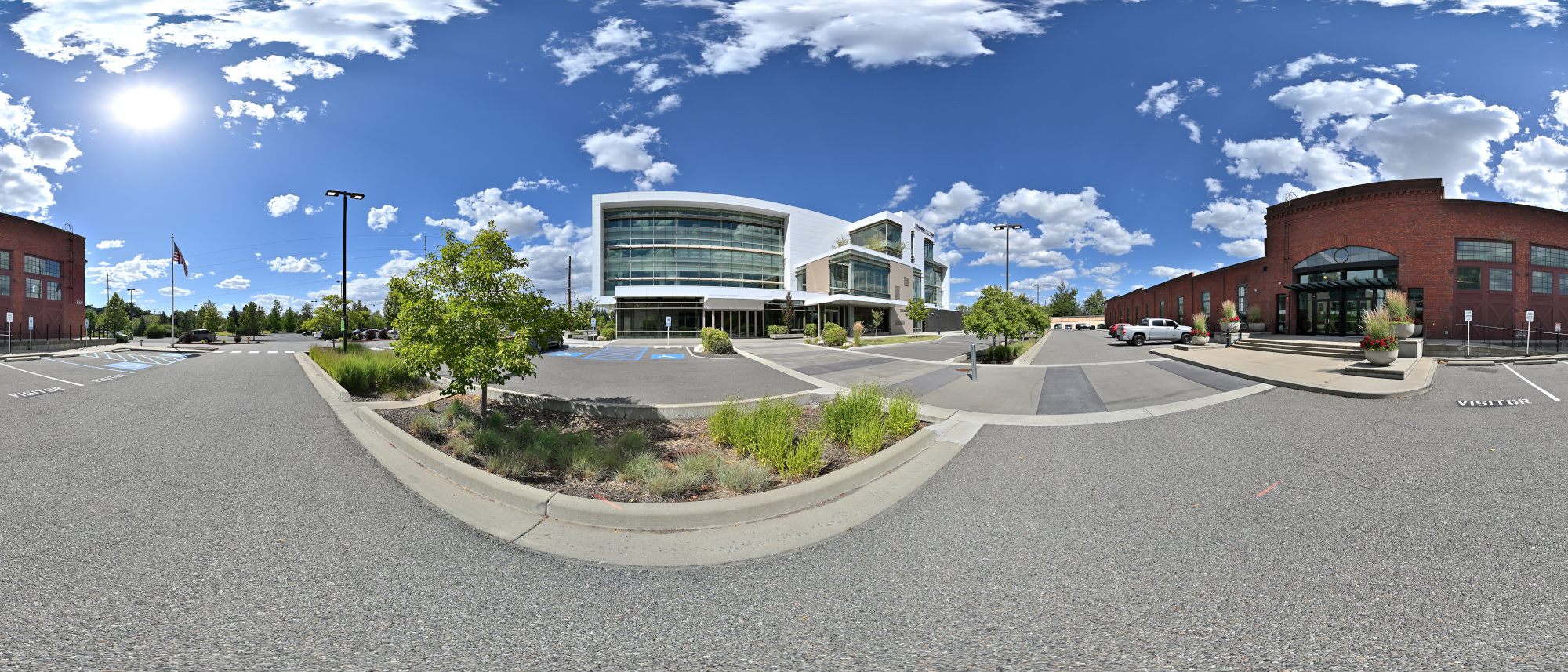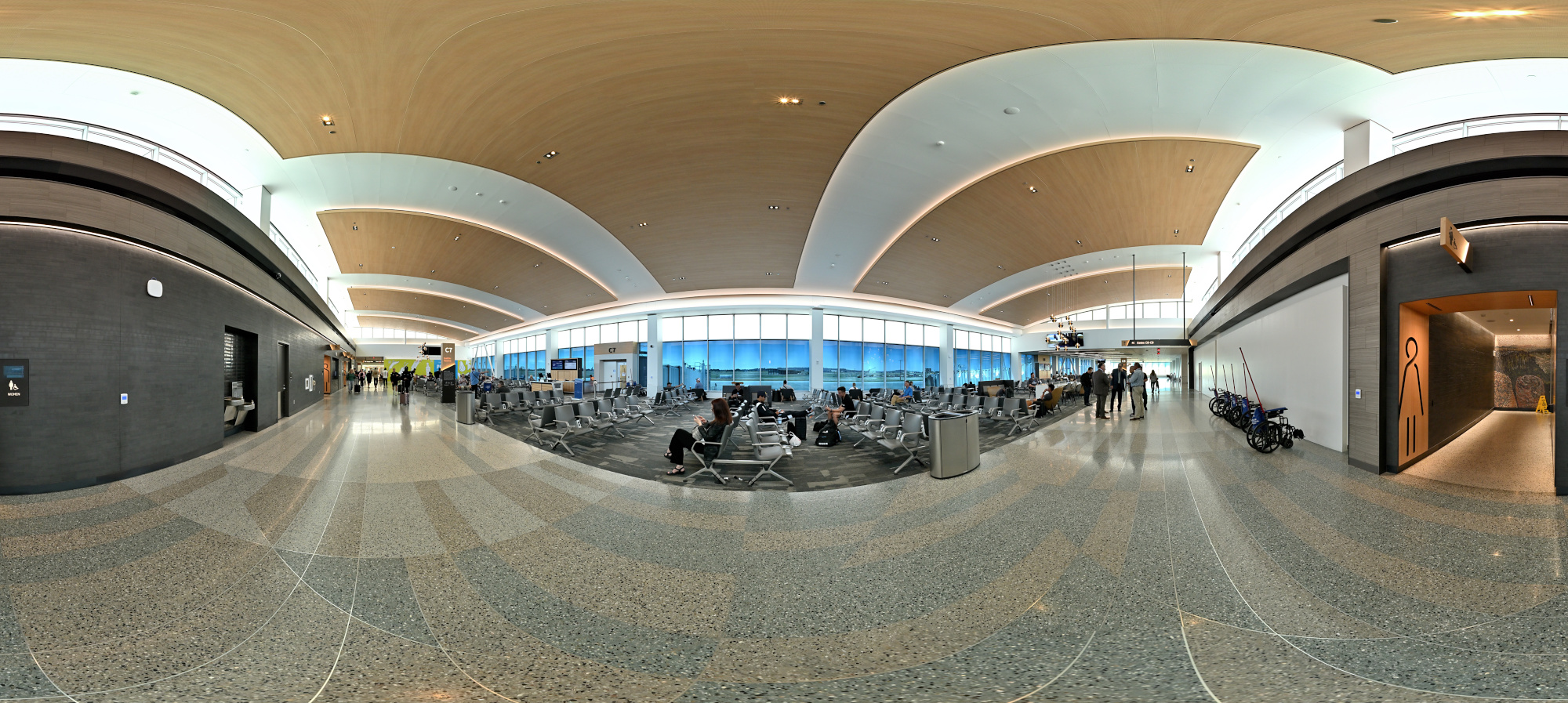-
Adobe RGB: Just Add _
Understanding Adobe RGB: When a Filename Starts with an Underscore
Color management is a subtle but critical aspect of digital imaging. One often overlooked detail is how some cameras signal the use of wide-gamut color profiles like Adobe RGB using the filename itself. When a filename starts with an underscore
_, it indicates that the image was captured using the Adobe RGB color space. This is a filename-based convention and not embedded in the image metadata._DSC1234.JPG→ Adobe RGB DSC1234.JPG→ sRGB Visual Comparison
Below is a comparison of the same image displayed with and without Adobe RGB interpretation. Notice the richer greens and cyans on the left.
D700 1/250s f/8 ISO 200/24° 8mm f/3,5G
Using Adobe RGB
Without Adobe RGB (as sRGB)
Why Adobe RGB?
Adobe RGB is a color space developed by Adobe Systems in 1998 to encompass most of the colors achievable on CMYK printers. Compared to the standard sRGB, Adobe RGB offers a wider gamut, especially in the green and cyan regions. This makes it ideal for professional printing and high-end image editing workflows.
Color Space Gamut Size Best For Display Compatibility sRGB Smaller Web, general use, non-color-managed devices Universally supported Adobe RGB Larger Printing, professional editing, preserving rich colors Requires color-managed software The CIE 1931 xy Chromaticity Diagram
It shows color hue and saturation (not brightness).
- x-axis: how much red vs green is in the color.
- y-axis: how much green vs blue is in the color.
It comes from the CIE XYZ color system, where Y relates to brightness.
Like a map of all visible colors:- The curved edge is pure spectral colors (rainbow).
- Inside the shape are all mixtures of colors.
- White (D65) is near the center.
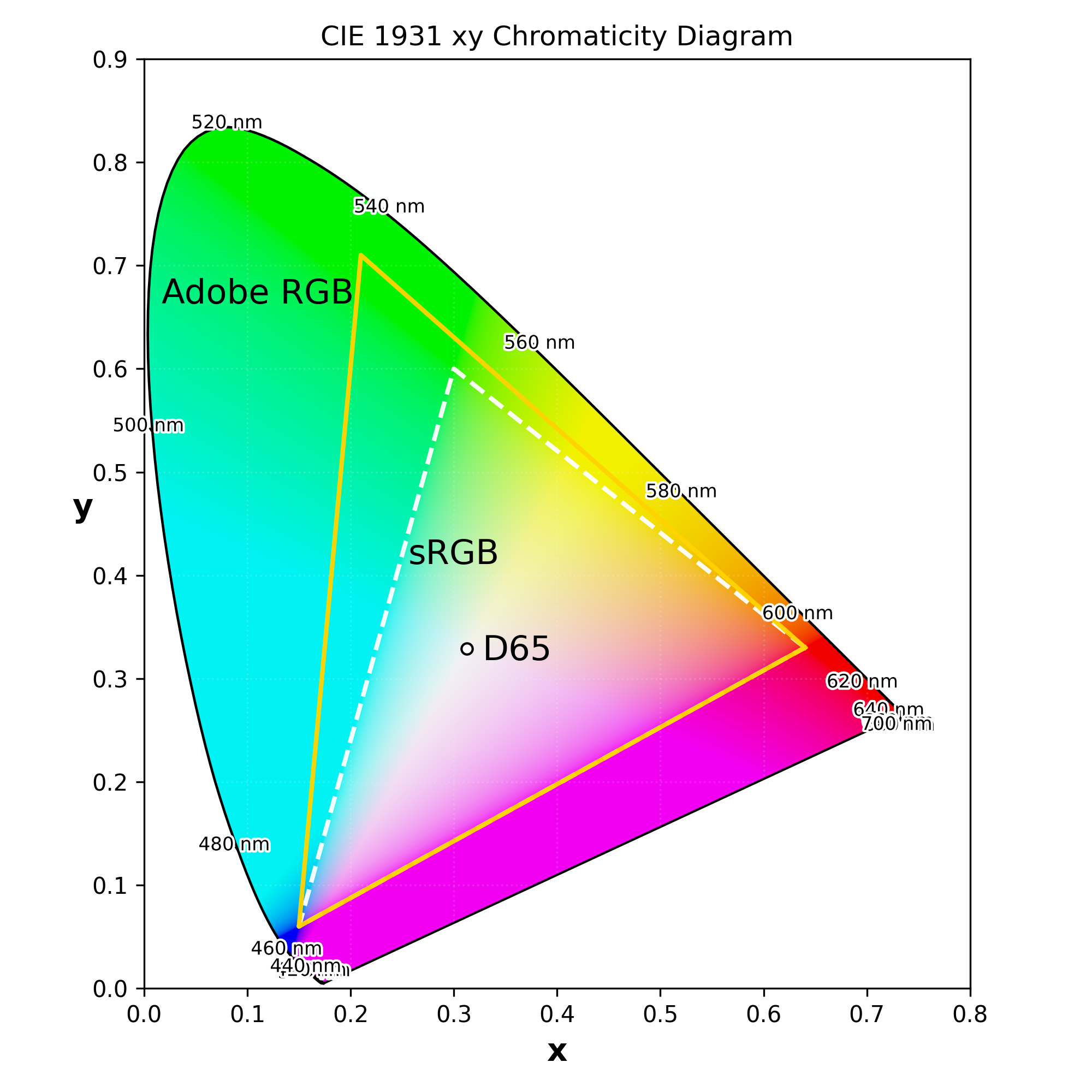
See github
sRGB: R(0.6400, 0.3300), G(0.3000, 0.6000), B(0.1500, 0.0600)
Adobe RGB: R(0.6400, 0.3300), G(0.2100, 0.7100), B(0.1500, 0.0600)
White point D65: (0.3127, 0.3290)Working with Adobe RGB Images
When working with Adobe RGB images, especially in everyday scenarios, it is important to consider how they will appear across different devices and platforms.
General Use
For typical viewing and sharing, converting Adobe RGB images to sRGB is recommended. sRGB is the standard color space for the web and for devices that do not support color management, which helps ensure consistent appearance.
Accurate Conversion
Before publishing or sharing images online, ensure they are converted to sRGB to maintain consistent appearance across devices. Software with reliable color management support, such as the cPicture App, interprets embedded ICC1 profiles and filename-based color space conventions with quiet precision. This helps ensure that colors appear as intended, even in situations where other tools might not get it quite right, often without the user realizing why.
-
ICC (International Color Consortium) profiles are embedded metadata that describe how colors should be interpreted. Without proper ICC support, colors may appear dull or inaccurate, especially in wide-gamut spaces like Adobe RGB.
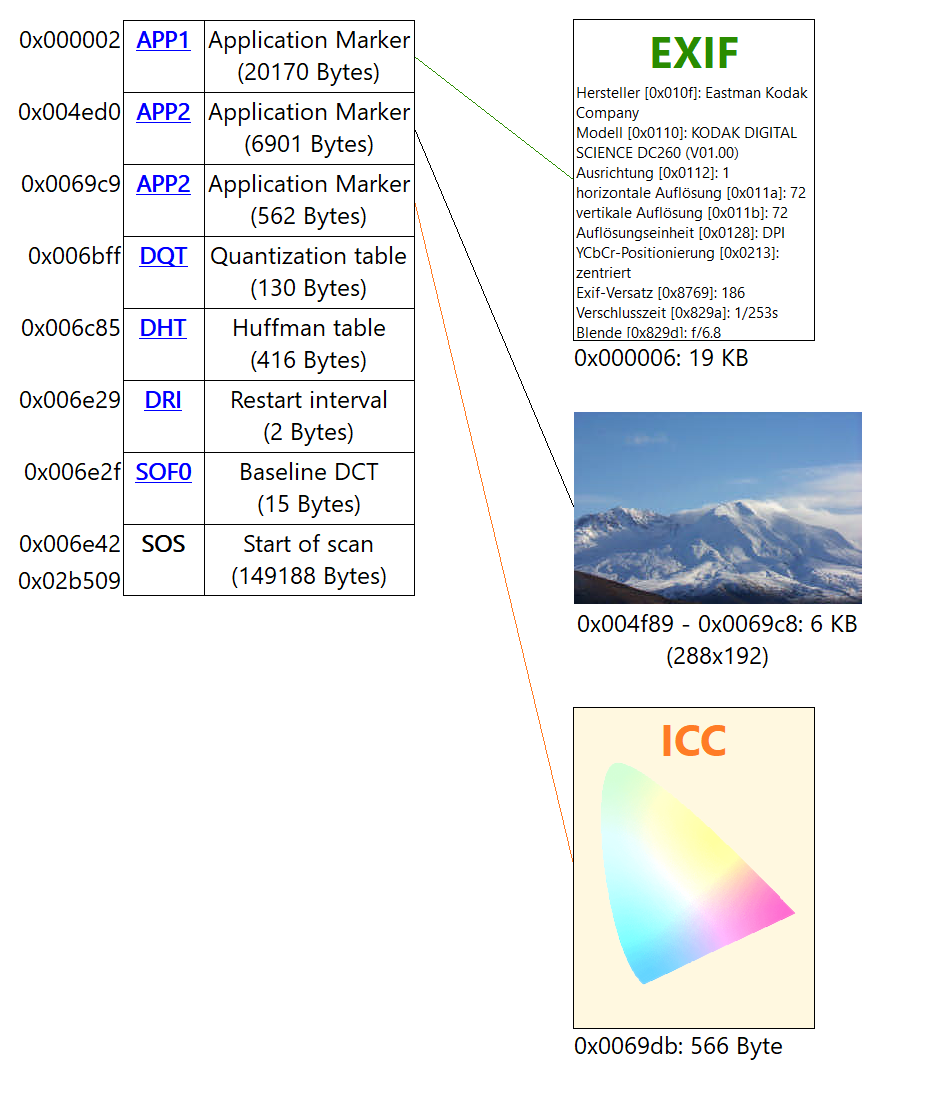 ↩
↩
-
Seattle Art Museum
A cold, wet, and grey Sunday. Pacific Northwest in autumn is nature's way of saying, "Stay indoors."
So thats where we stay. In the Seattle Art Museum, of course.
Where architecture curves into art — captured in a fisheye projection1/200s f/5,6 ISO 200/24° f=7,5mm
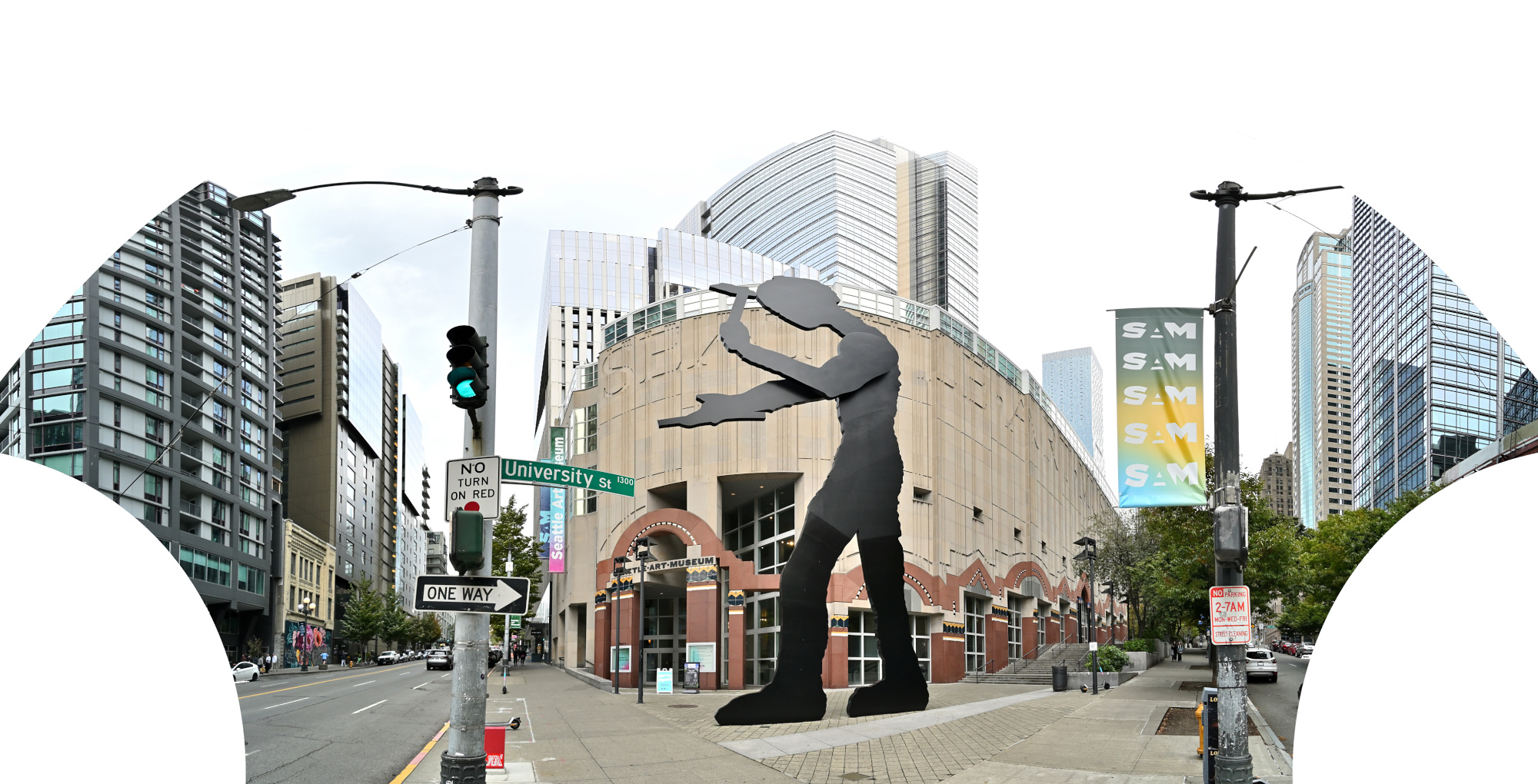
Interactive Panorama Seattle Art Museum 1
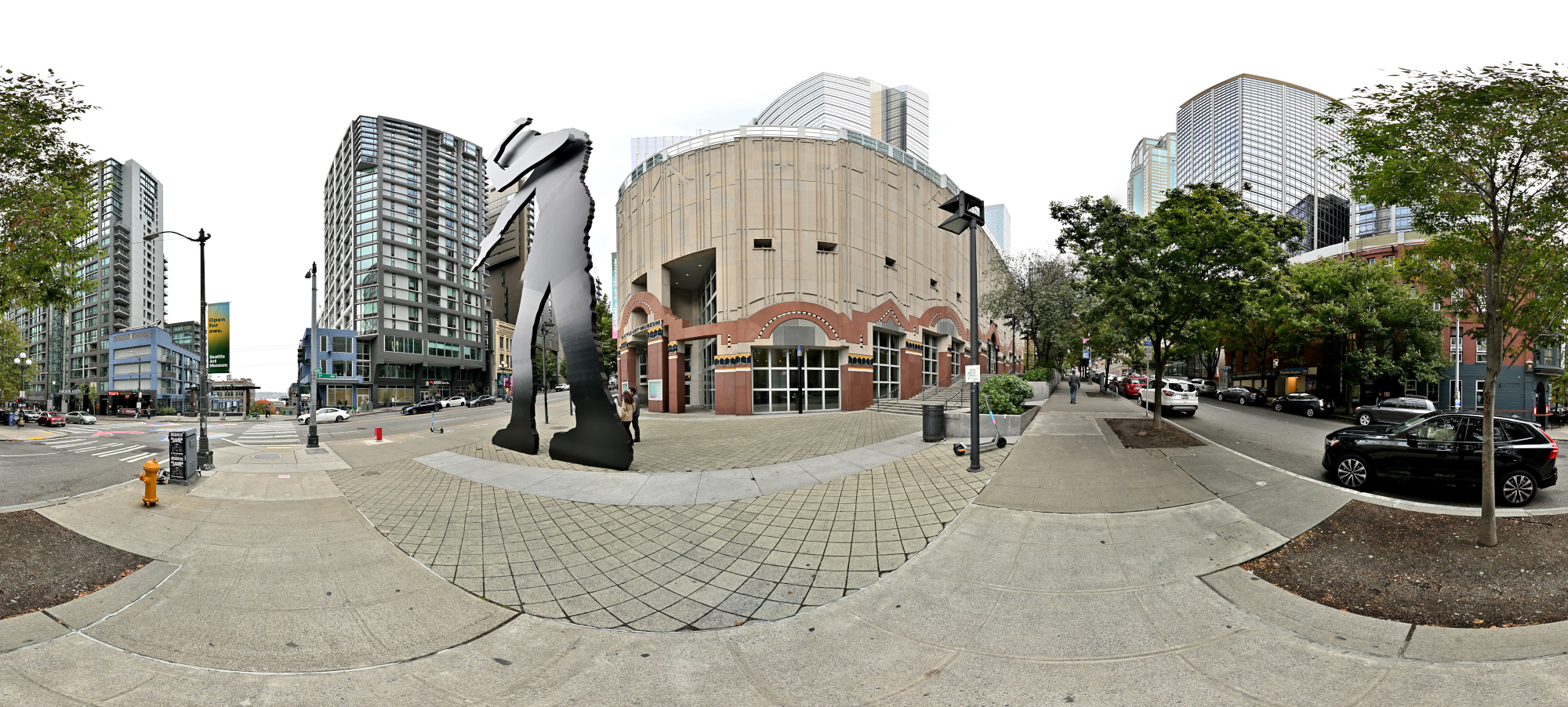
1/200s f/5,6 ISO 200/24° f=7,5mm
Interactive Panorama Seattle Art Museum 2
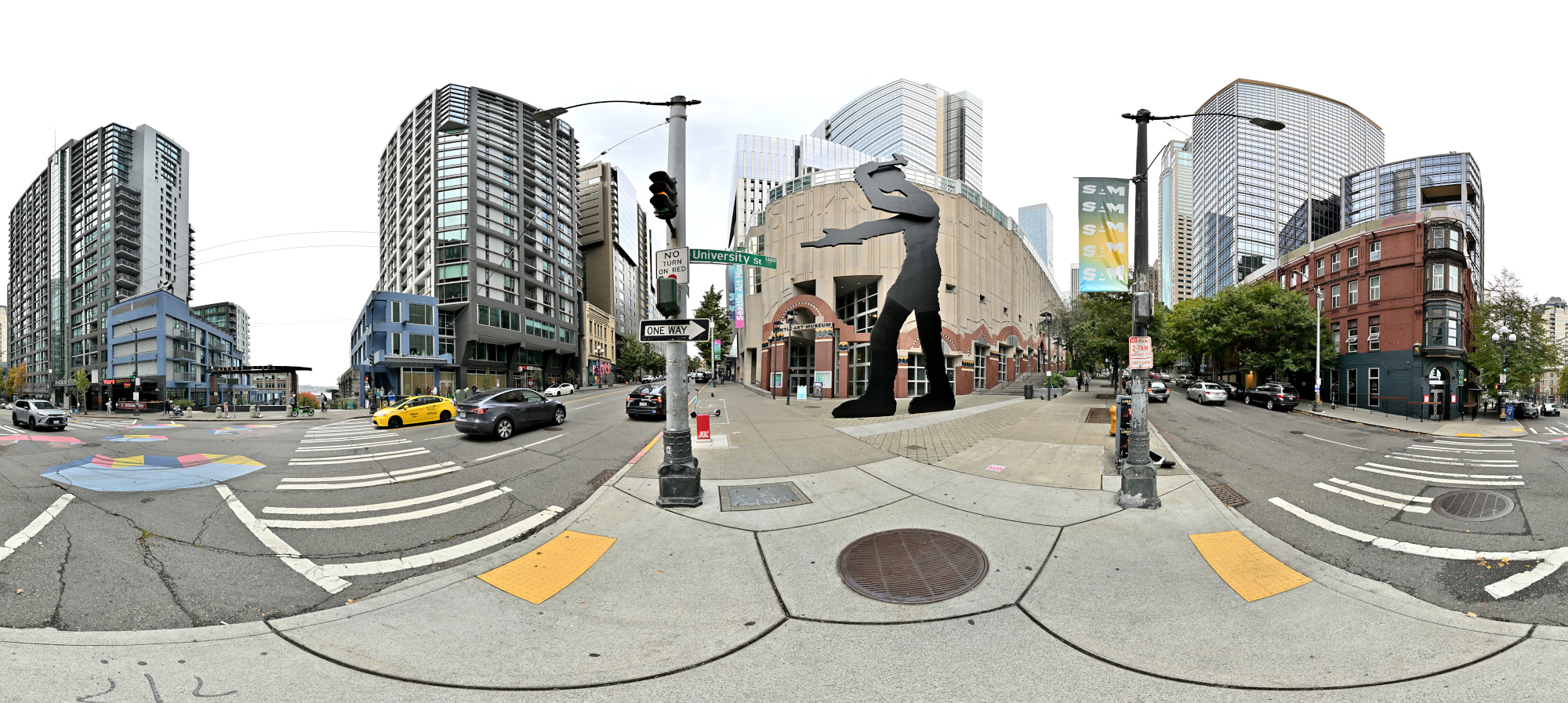
1/200s f/5,6 ISO 200/24° f=7,5mm
FriendsWithYou: Little Cloud Sky
Location: Brotman Forum (Main Foyer)
1/50s f/5,6 ISO 640/29° f=7,5mm
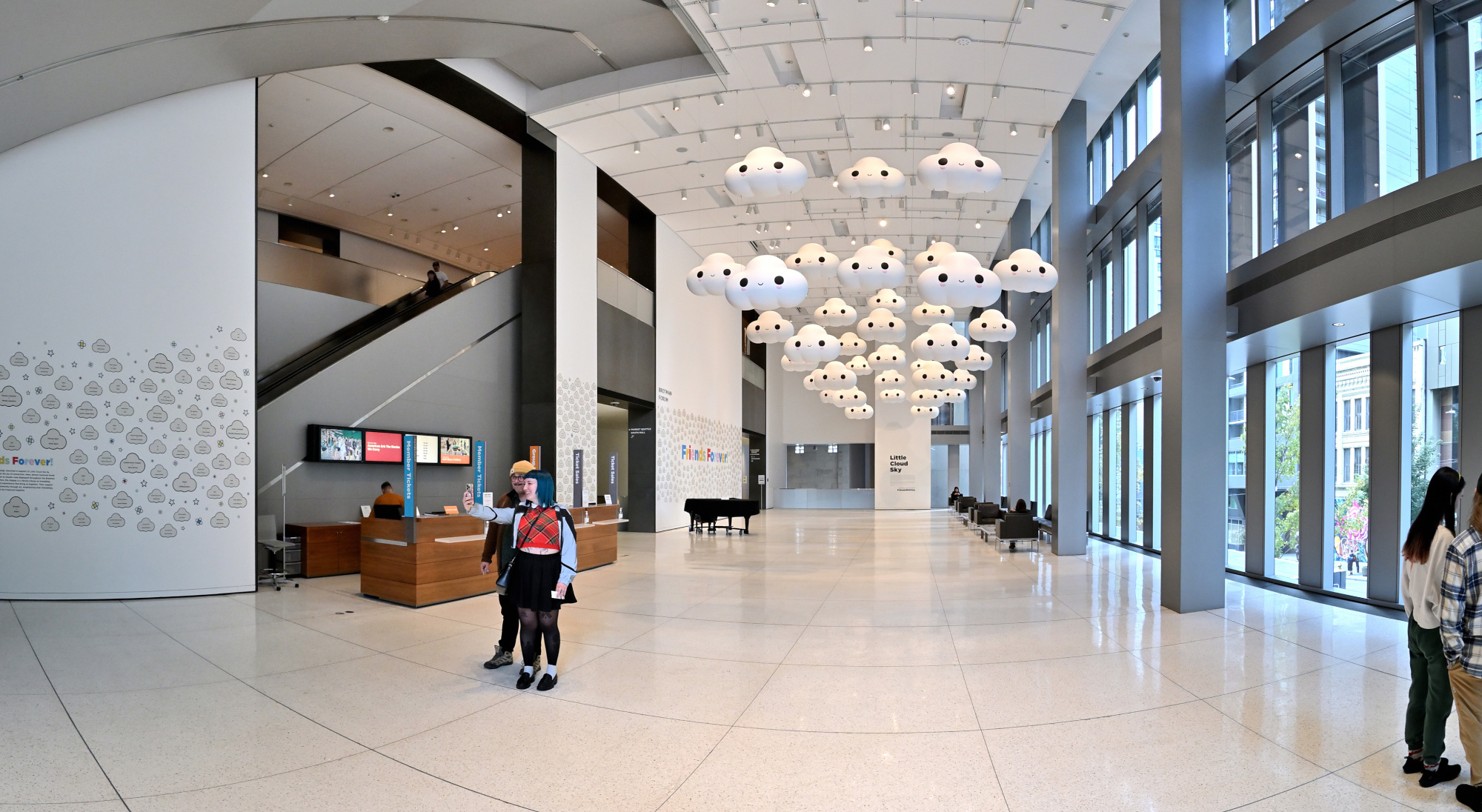
1/30s f/5,6 ISO 250/25° f=7,5mm

1/40s f/5,6 ISO 1000/31° f=7,5mm
1/30s f/5,6 ISO 2000/34° f=7,5mm
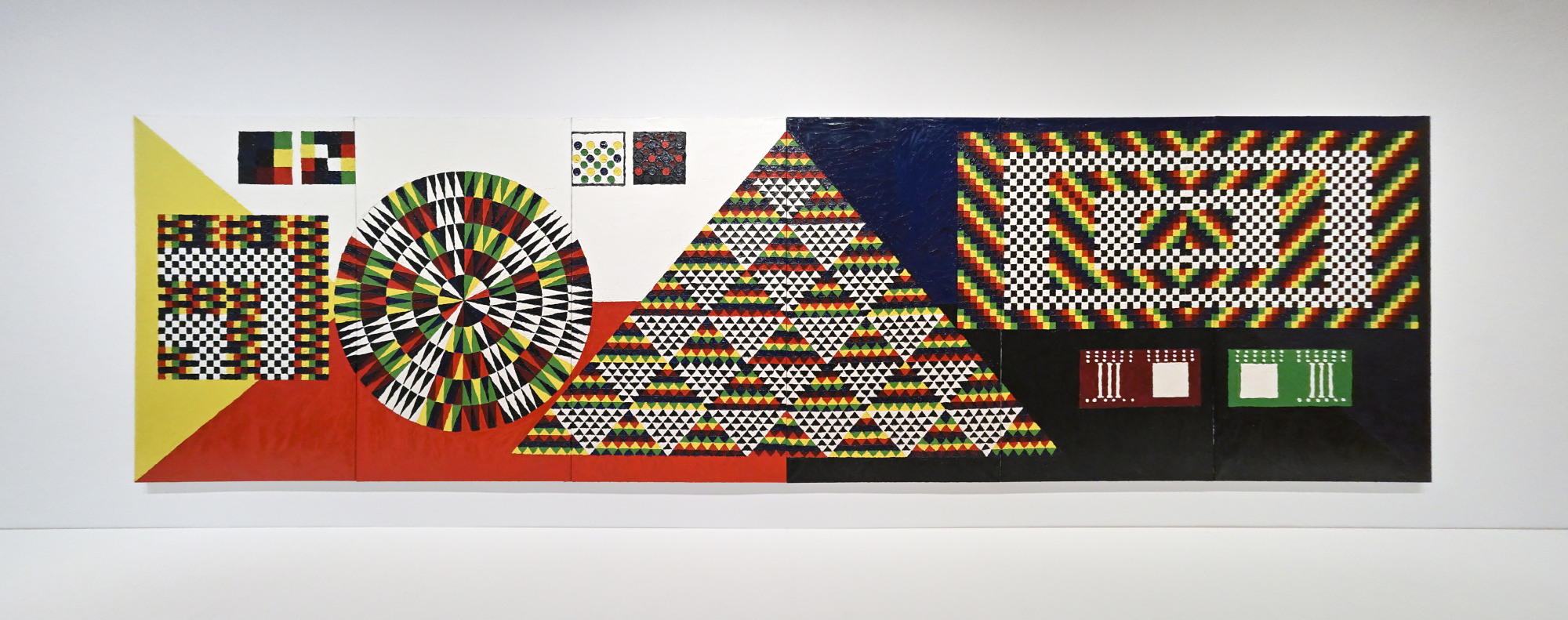
American Art: The Stories We Carry
This exhibition includes several works by Andy Warhol, highlighting his iconic Pop Art style.
1/40s f/5,6 ISO 2000/34° f=7,5mm
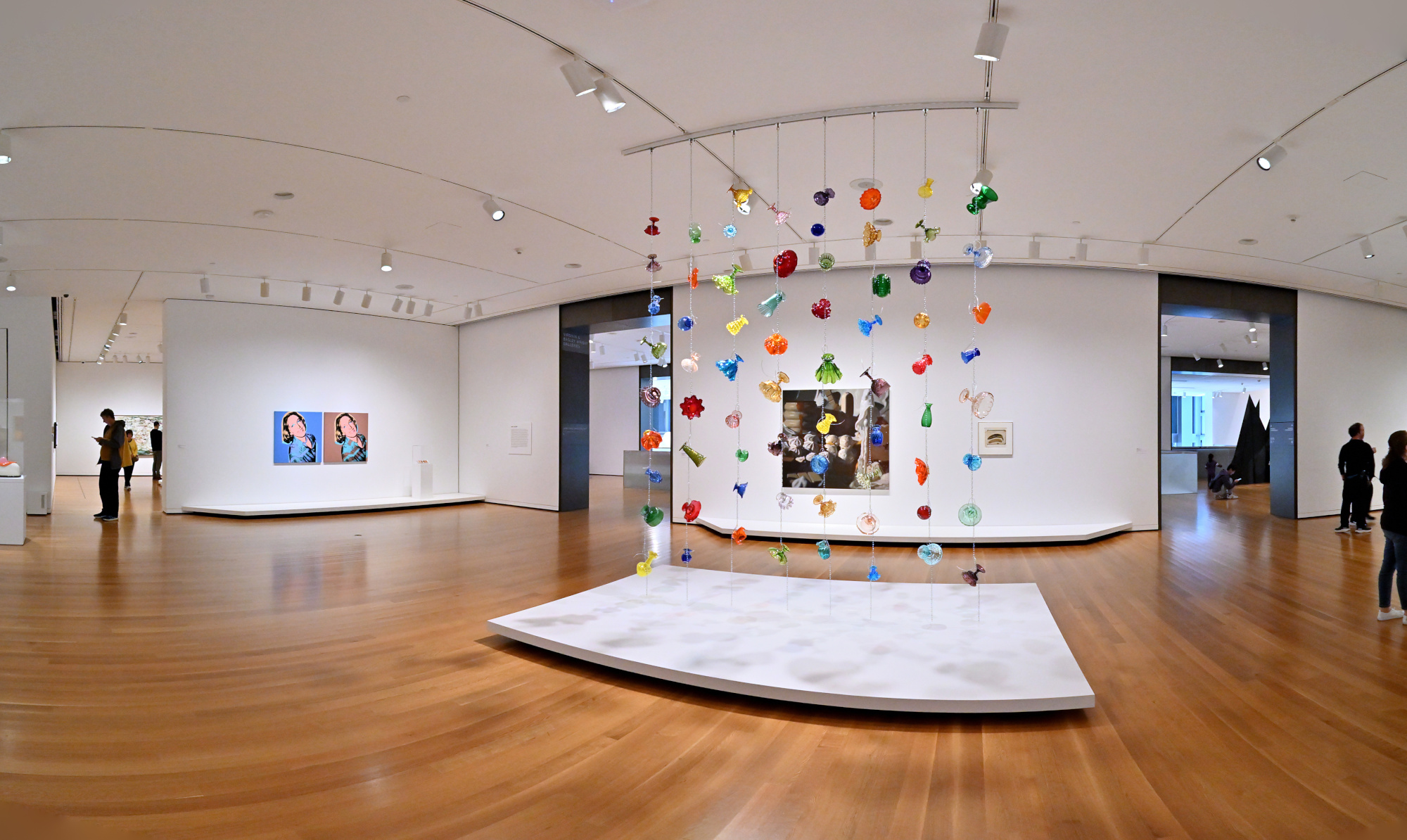
1/40s f/5,6 ISO 2500/35° f=7,5mm
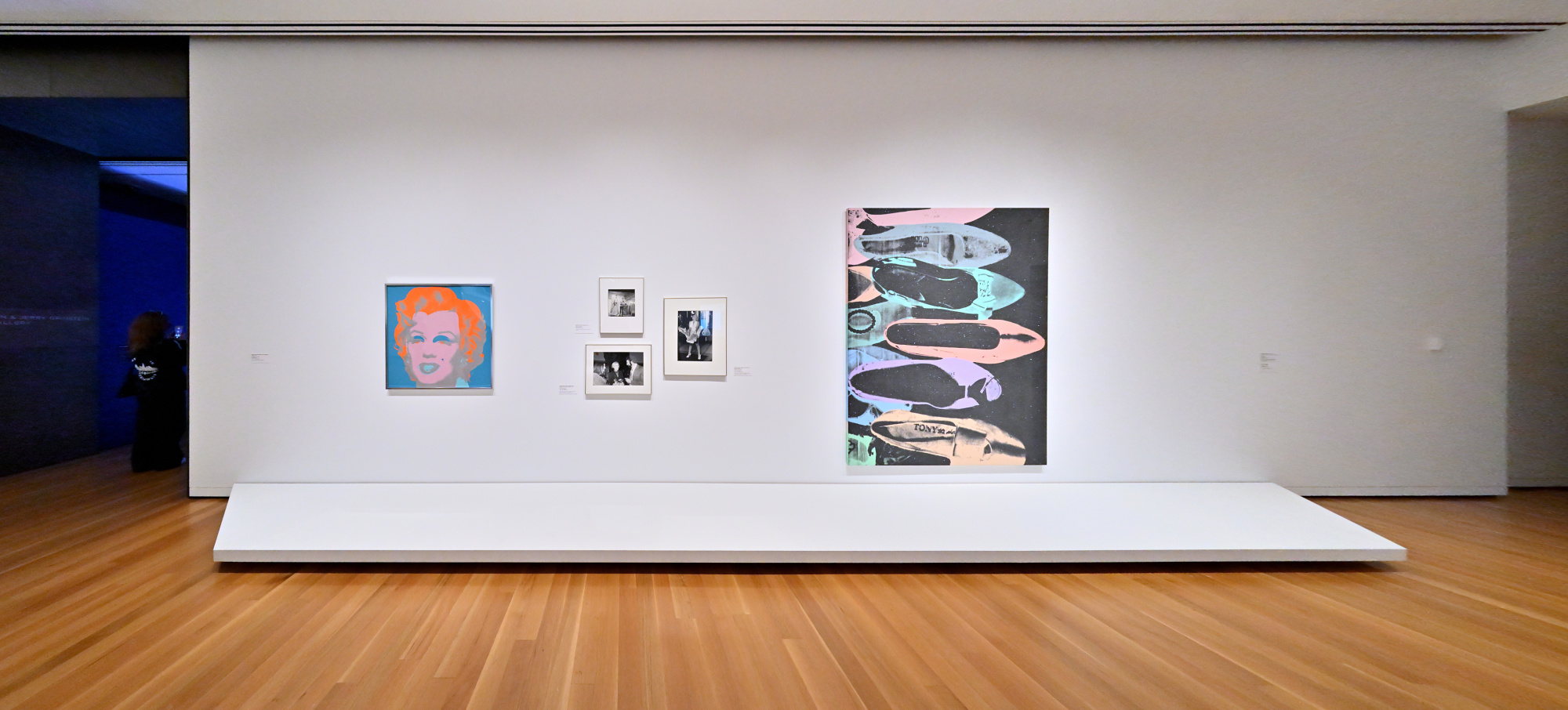
1/40s f/5,6 ISO 6400/39° f=7,5mm
1/50s f/5,6 ISO 3200/36° f=7,5mm
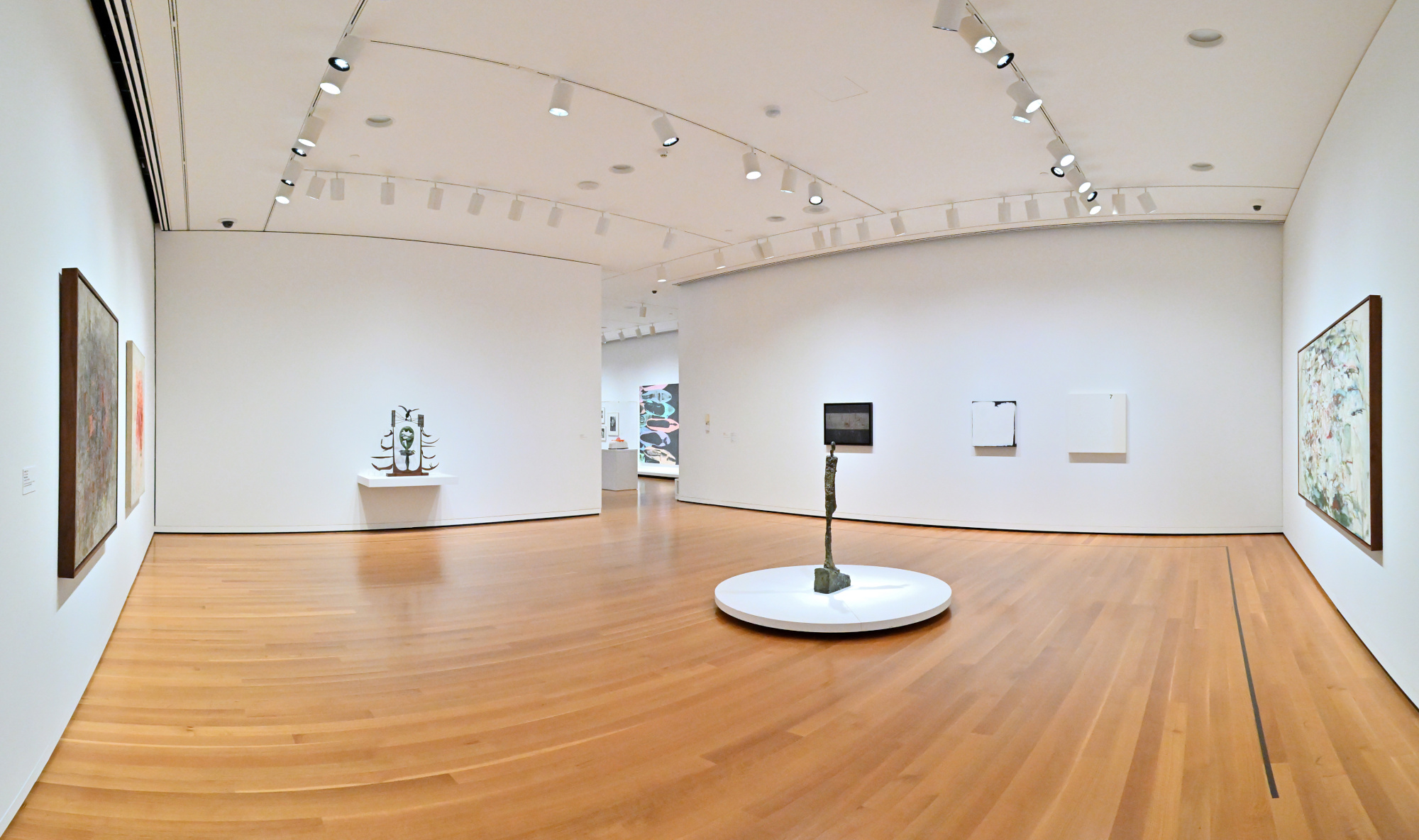
1/50s f/5,6 ISO 3200/36° f=7,5mm
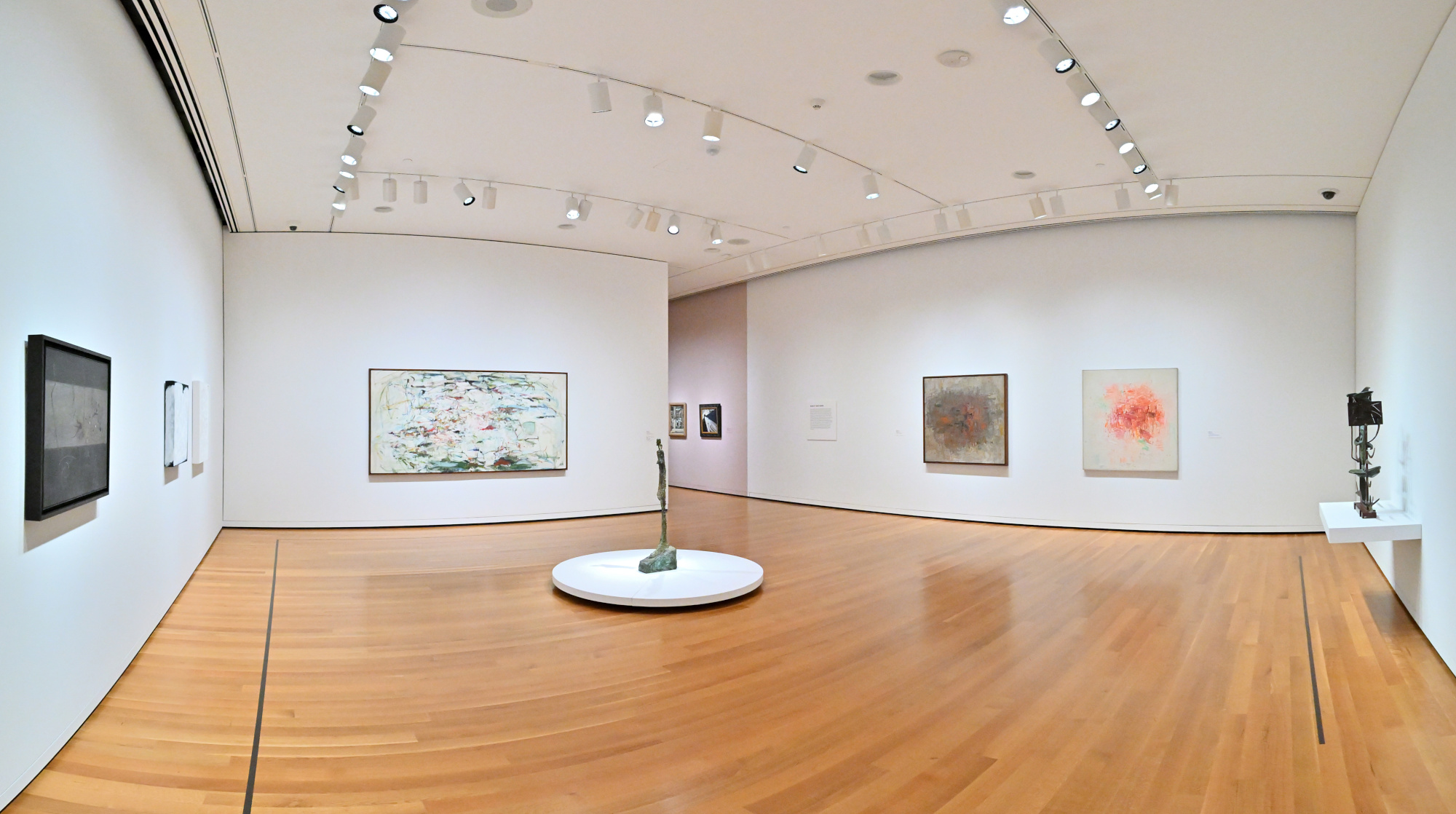
Interactive Panorama American Art: The Stories We Carry

1/40s f/5,6 ISO 2500/35° f=7,5mm
1/50s f/5,6 ISO 1000/31° f=7,5mm
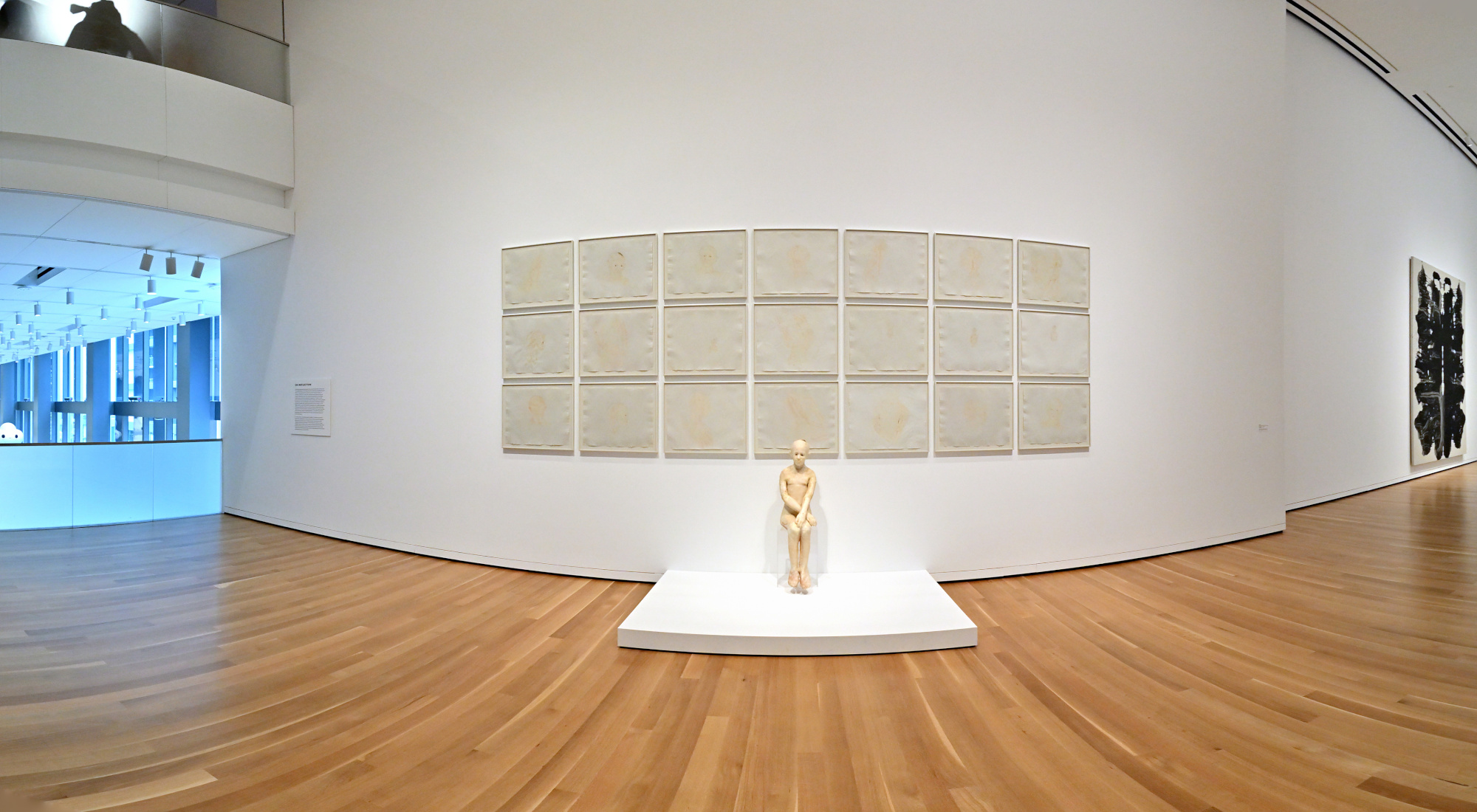
1/50s f/5,6 ISO 1000/31° f=7,5mm
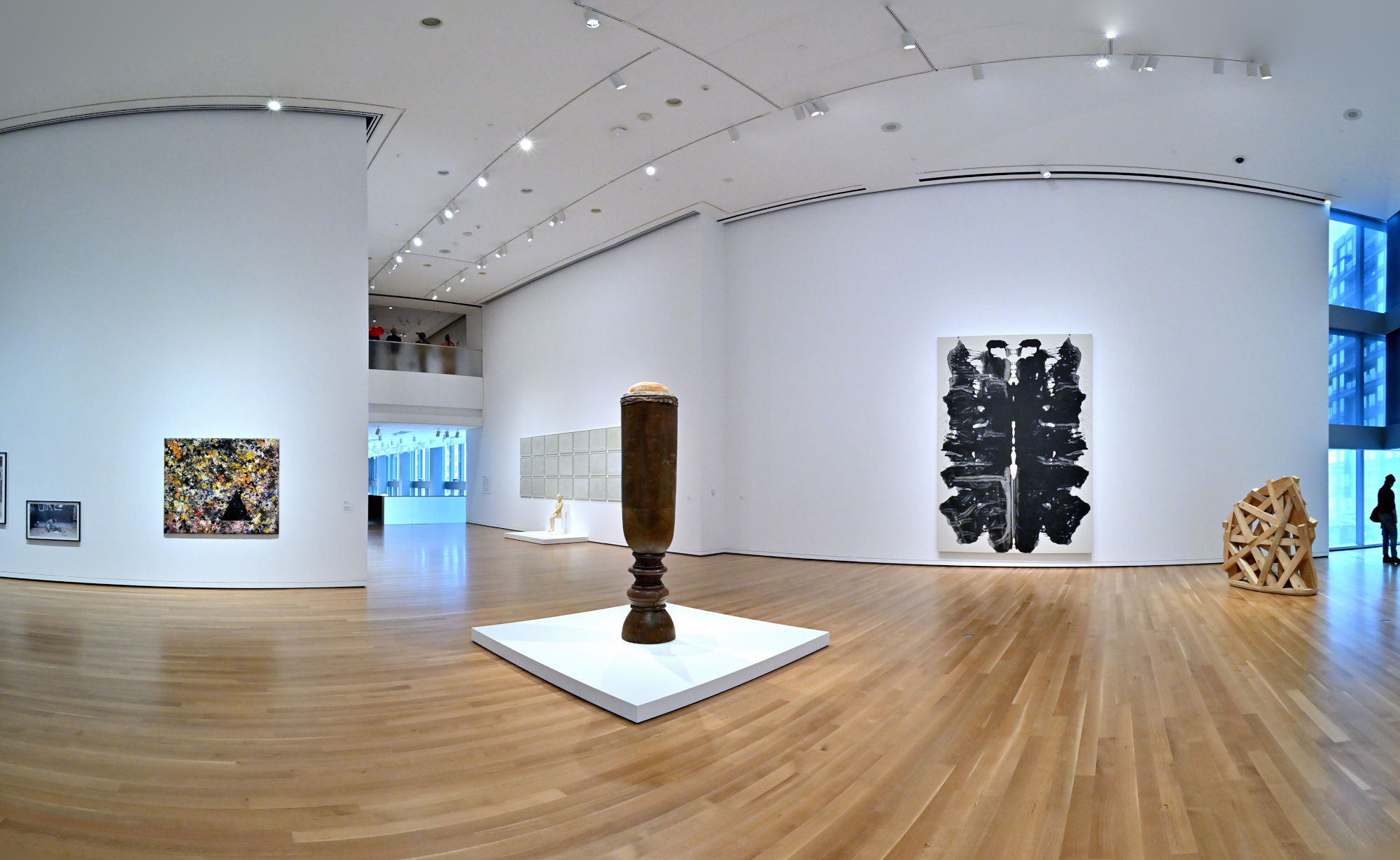
1/50s f/5,6 ISO 1600/33° f=7,5mm
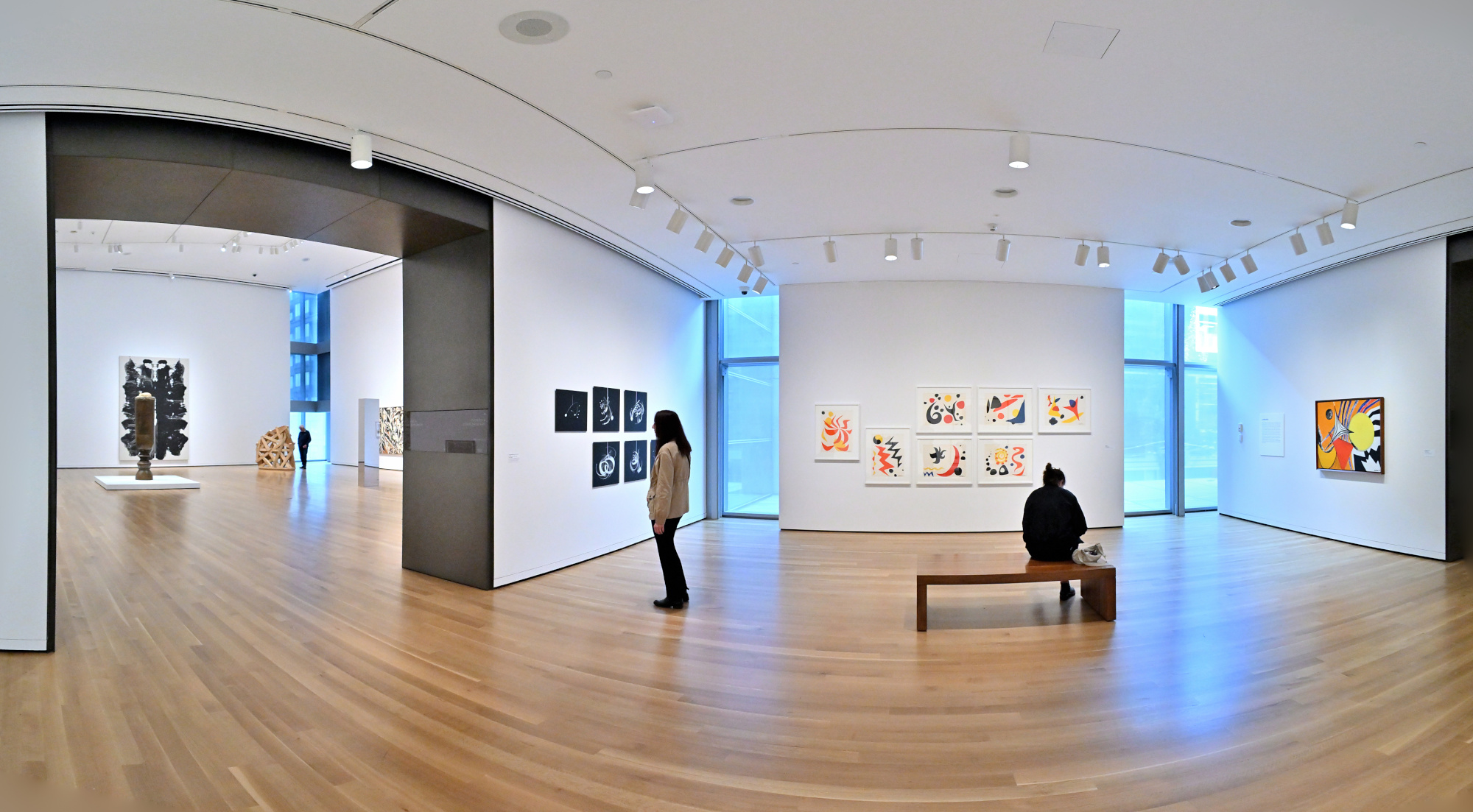
1/50s f/5,6 ISO 1600/33° f=7,5m
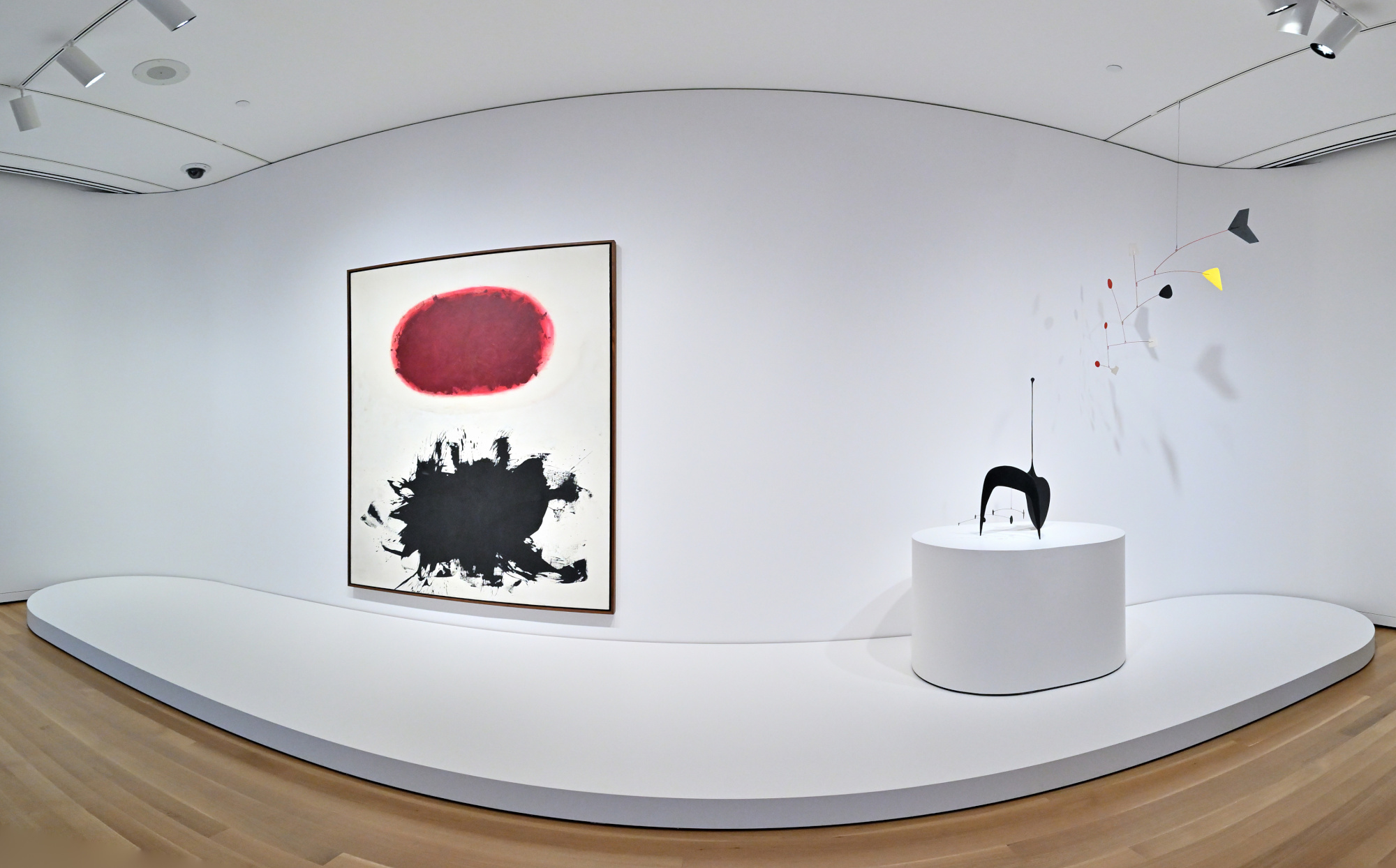

1/80s f/5,6 ISO 5000/38° f=7,5mm
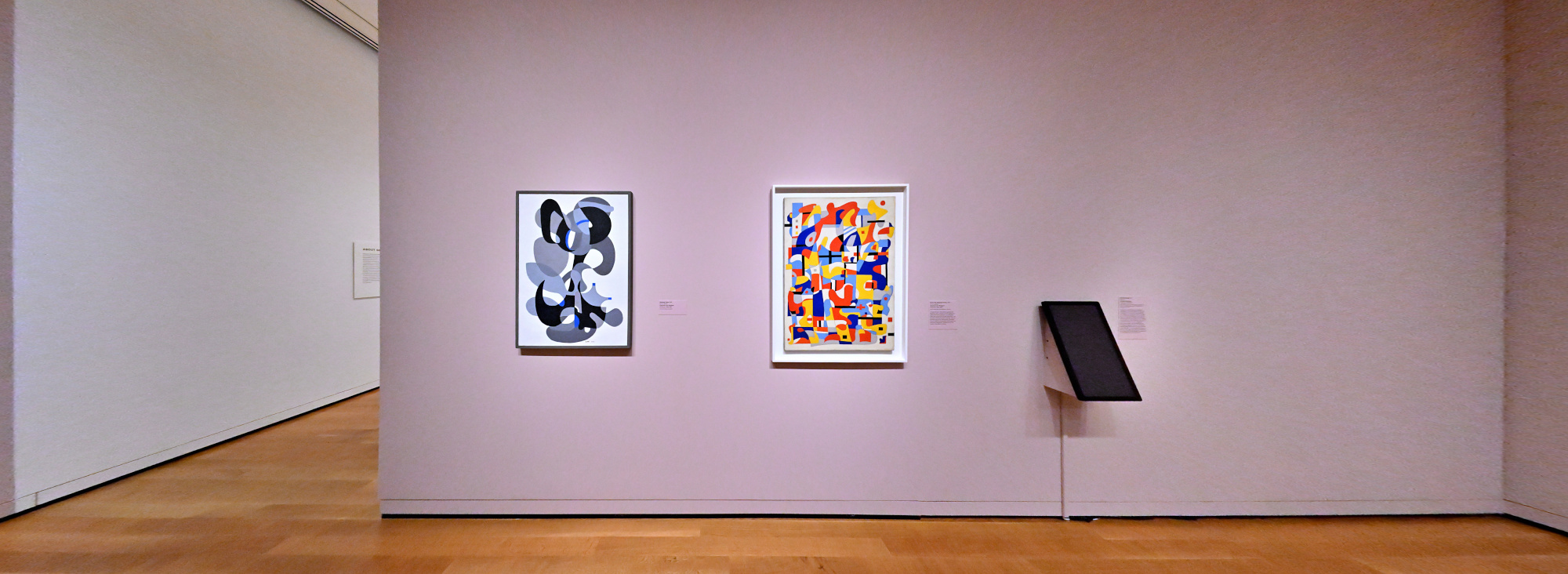
Only Connect: The Art of Devotion
1/50s f/5,6 ISO 16000/43° f=7,5mm
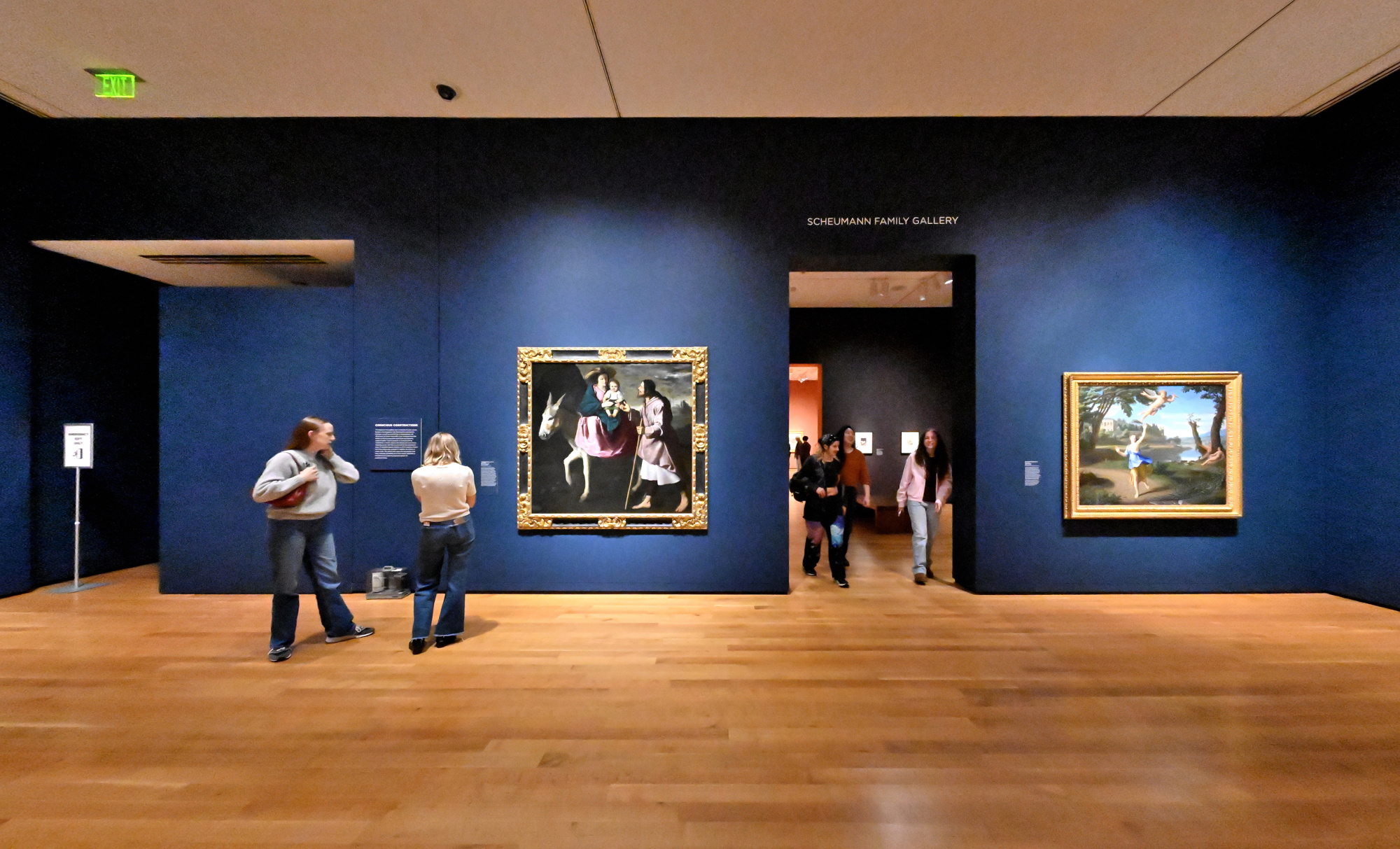
SAM Stories, The Visitation, 1643, Philippe de Champaigne
1/50s f/5,6 ISO 8000/40° f=7,5mm

Interactive Panorama Only Connect: The Art of Devotion
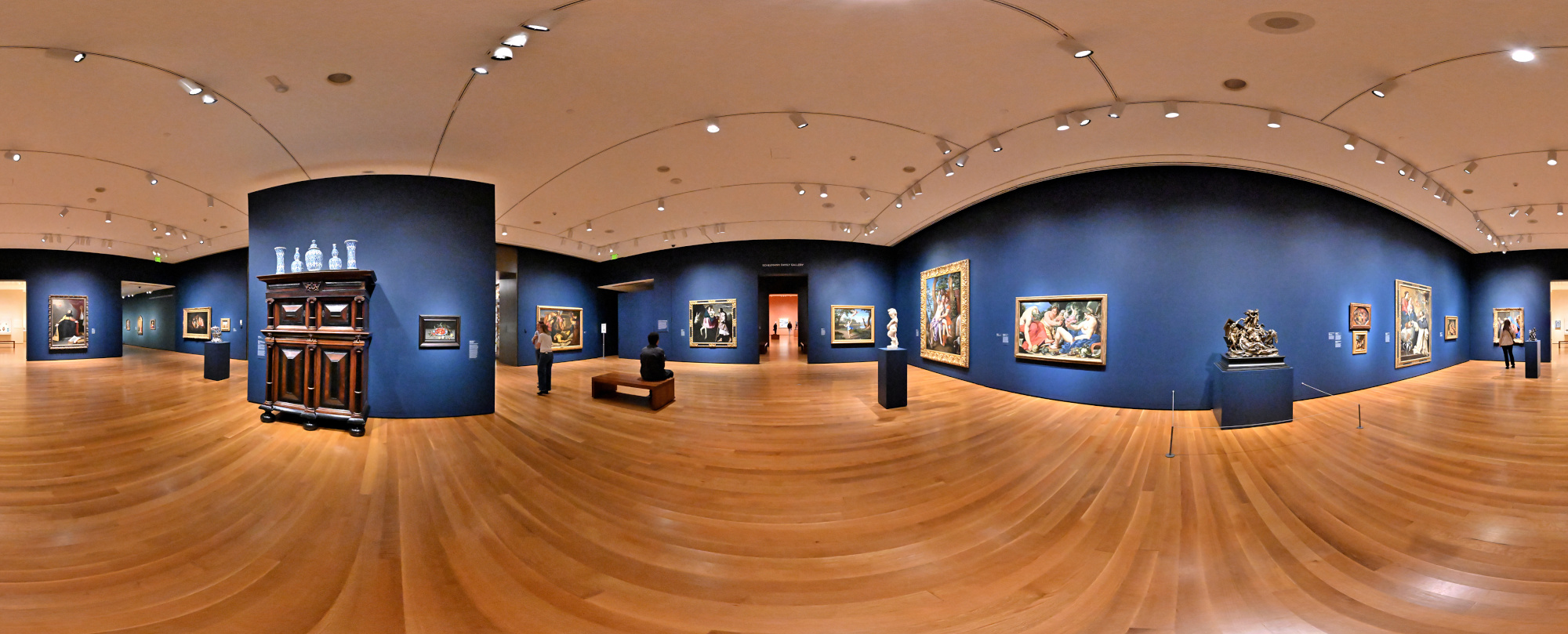
1/50s f/5,6 ISO 16000/43° f=7,5mm
A Goya worth reversing entropy for, but today I let time flow forward through my lens. Tenet.
SAM Stories1/50s f/5,6 ISO 6400/39° f=7,5mm
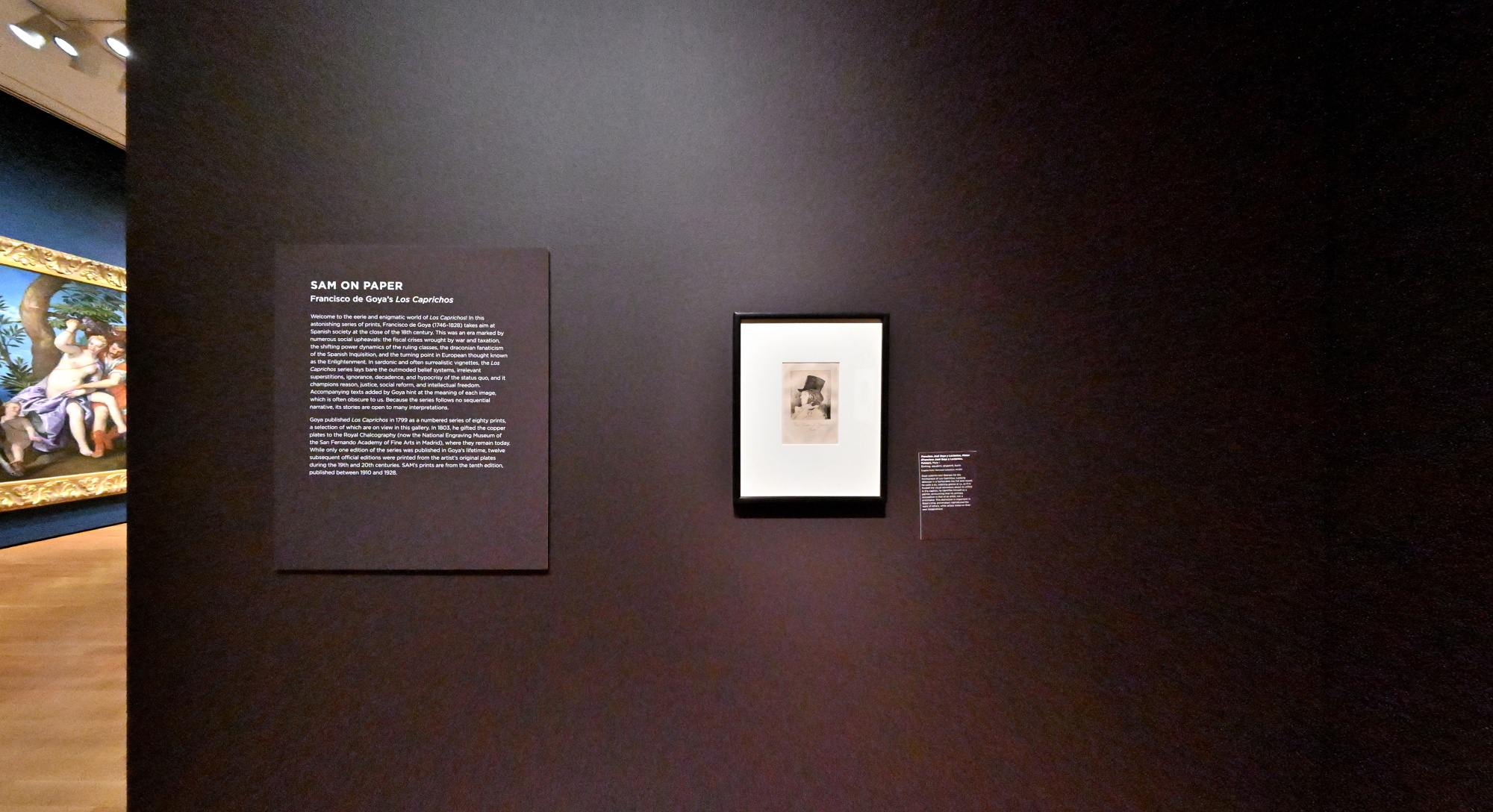
Art and Life Along the Northwest Coast
1/50s f/5,6 ISO 4000/37° f=7,5mm
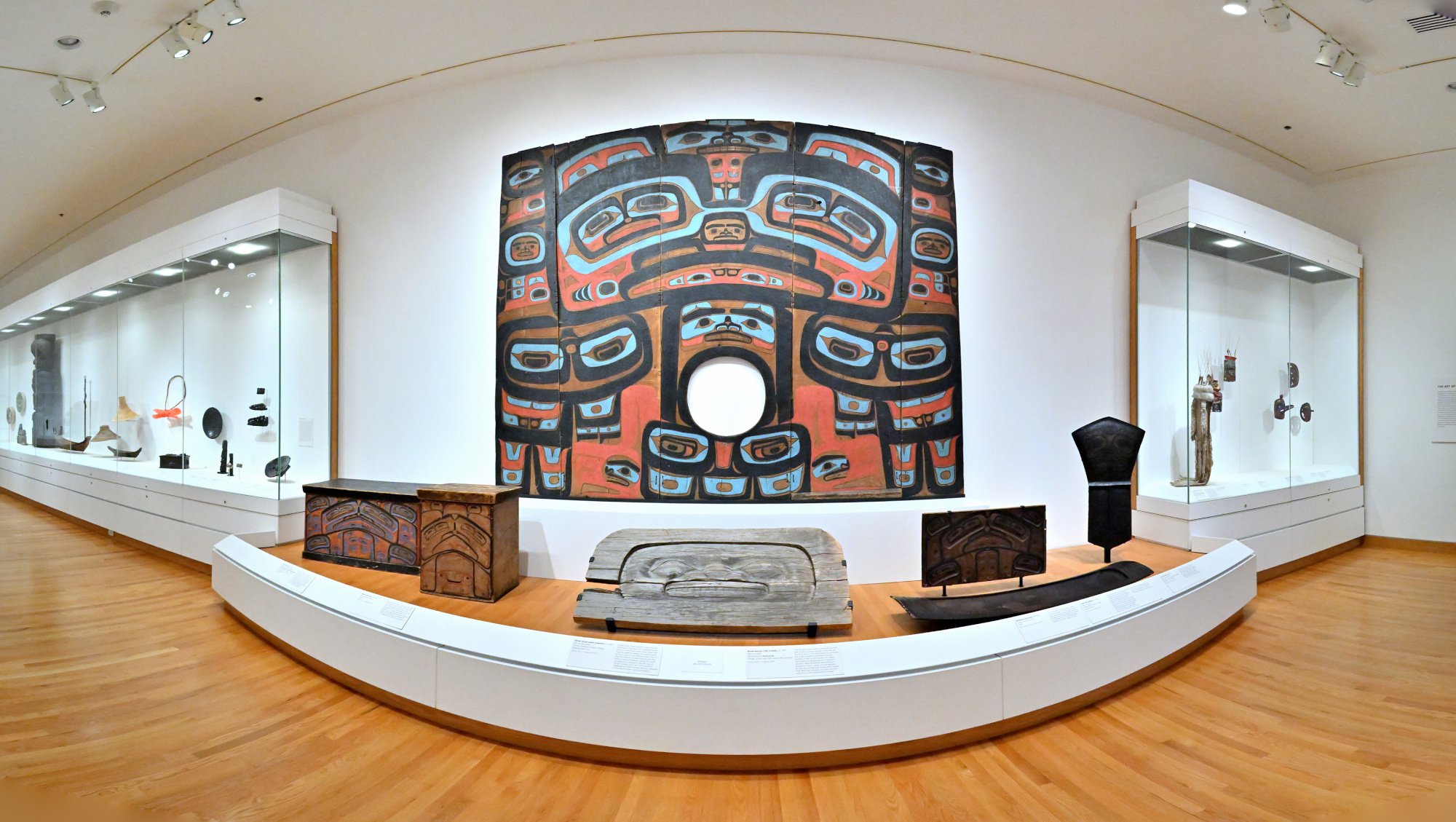
1/50s f/5,6 ISO 4000/37° f=7,5mm
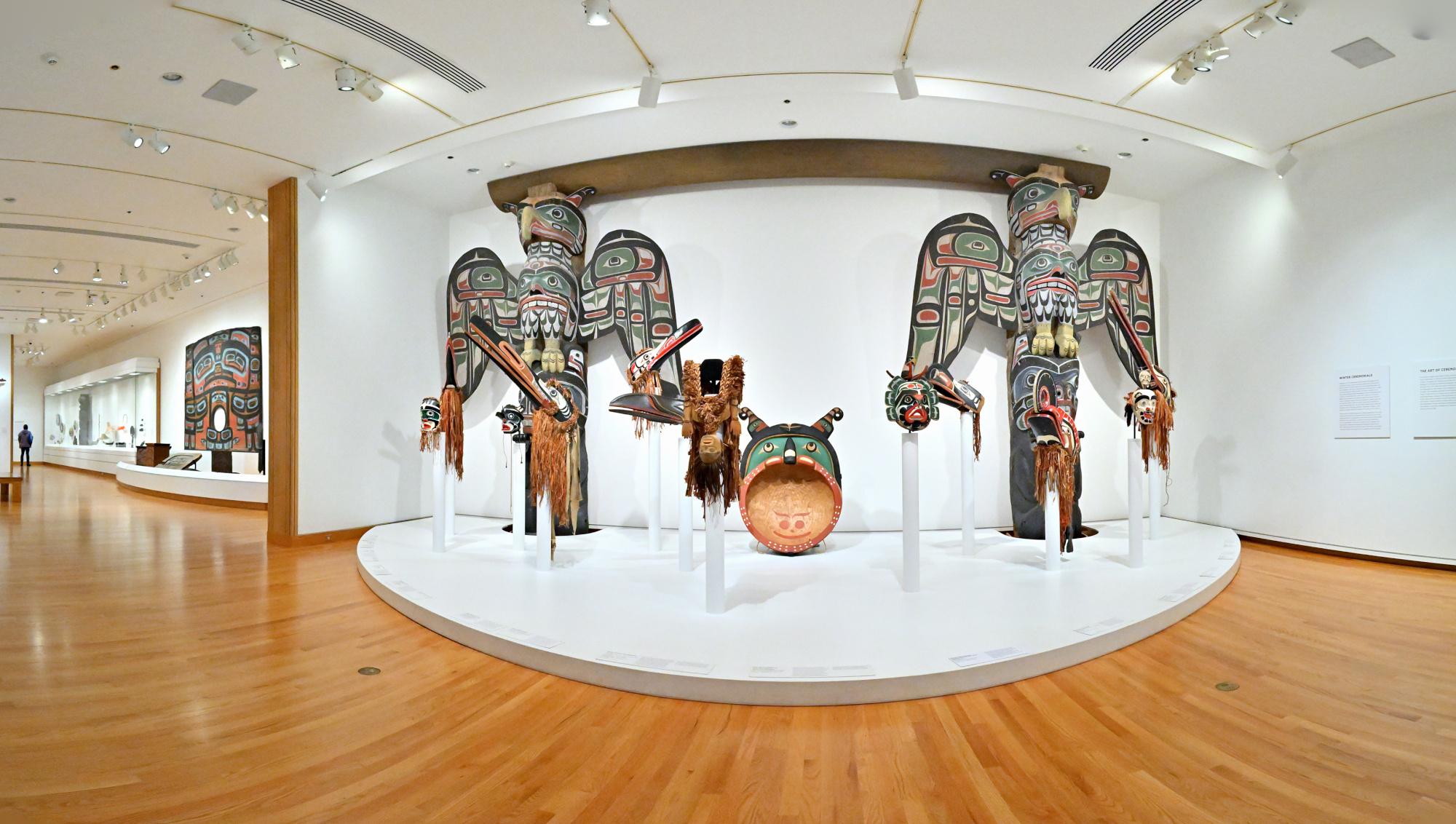
1/50s f/5,6 ISO 5000/38° f=7,5mm
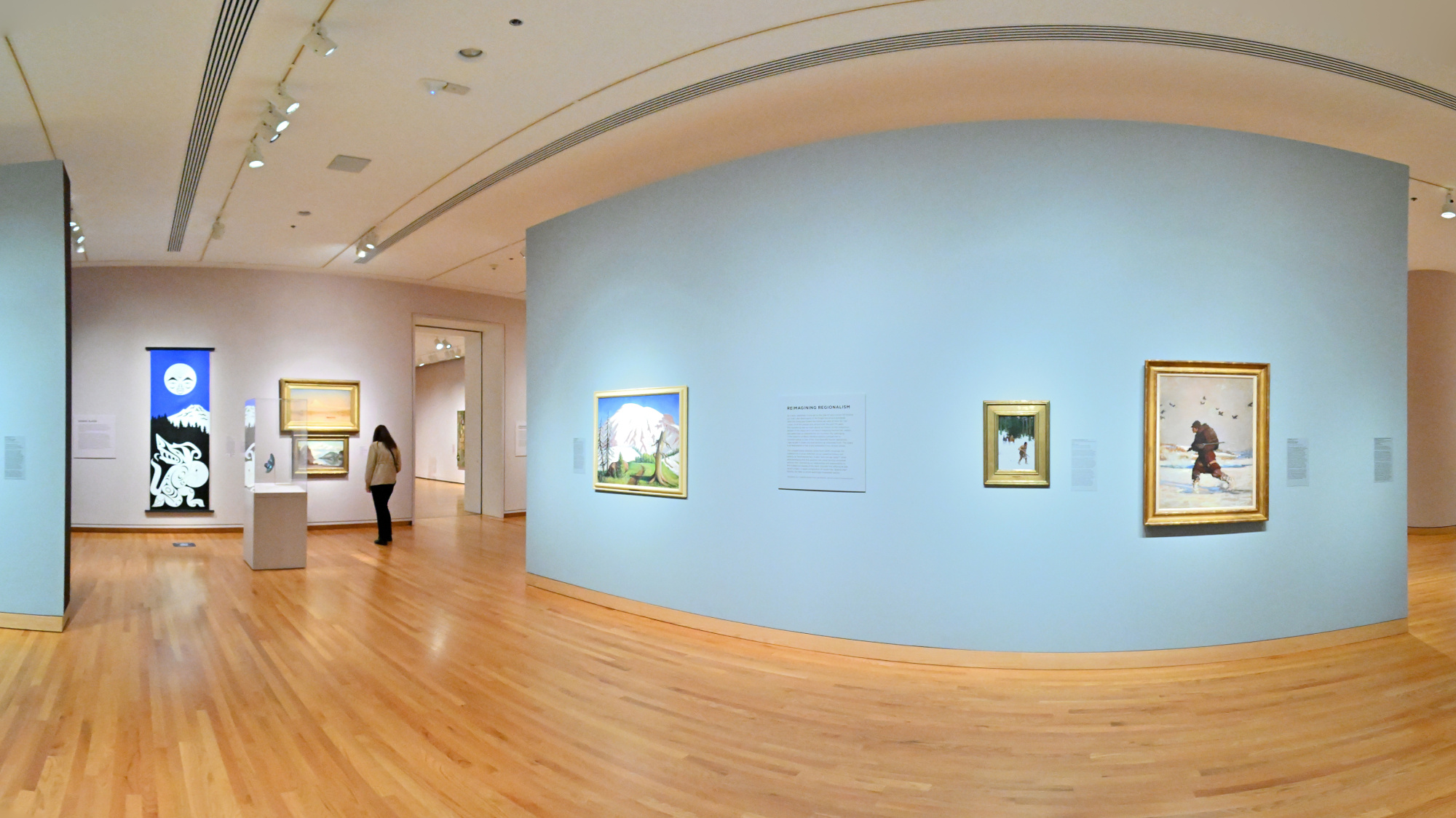
1/50s f/5,6 ISO 5000/38° f=7,5mm
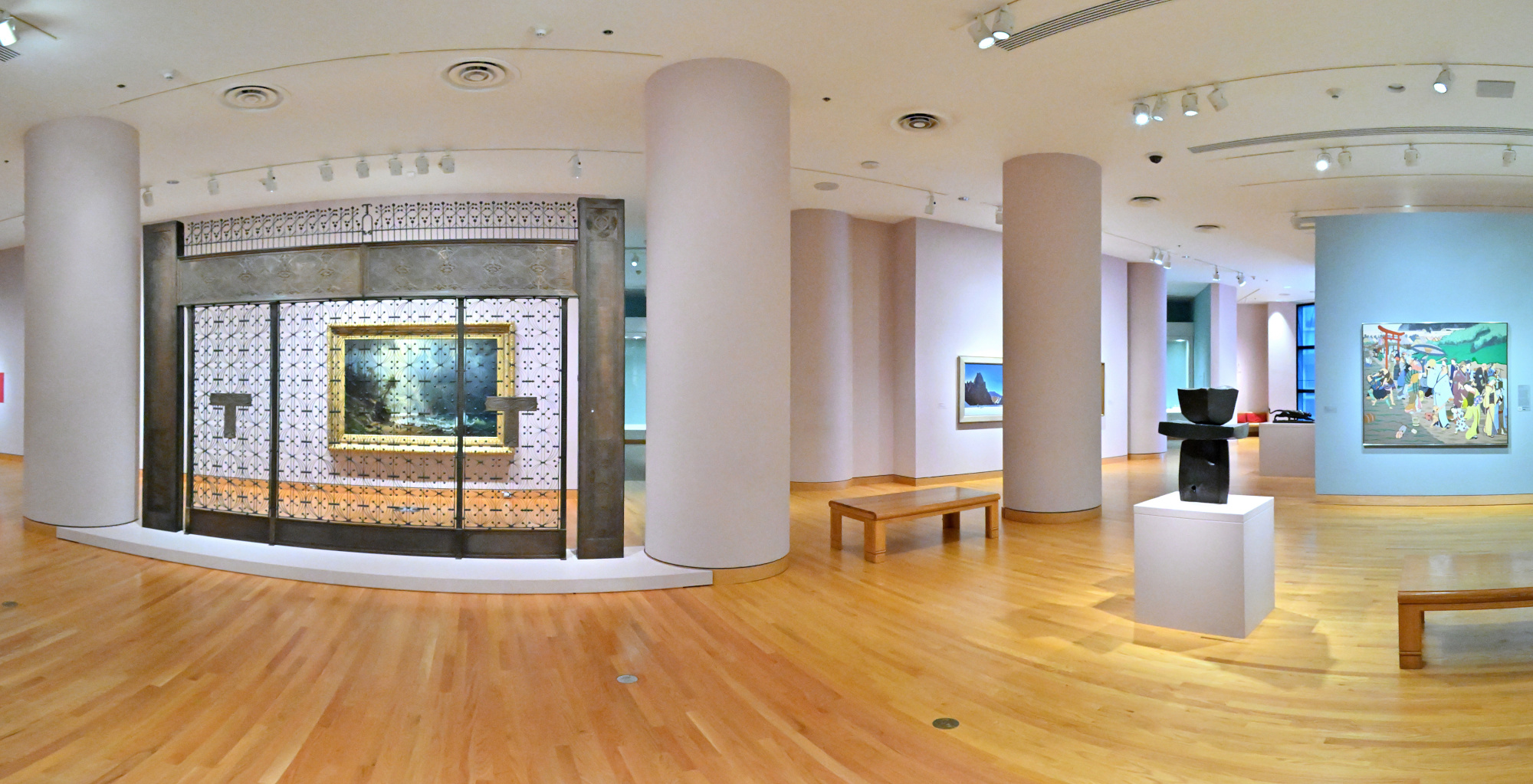
Chronicles of a Global East
1/80s f/5,6 ISO 16000/43° f=7,5mm
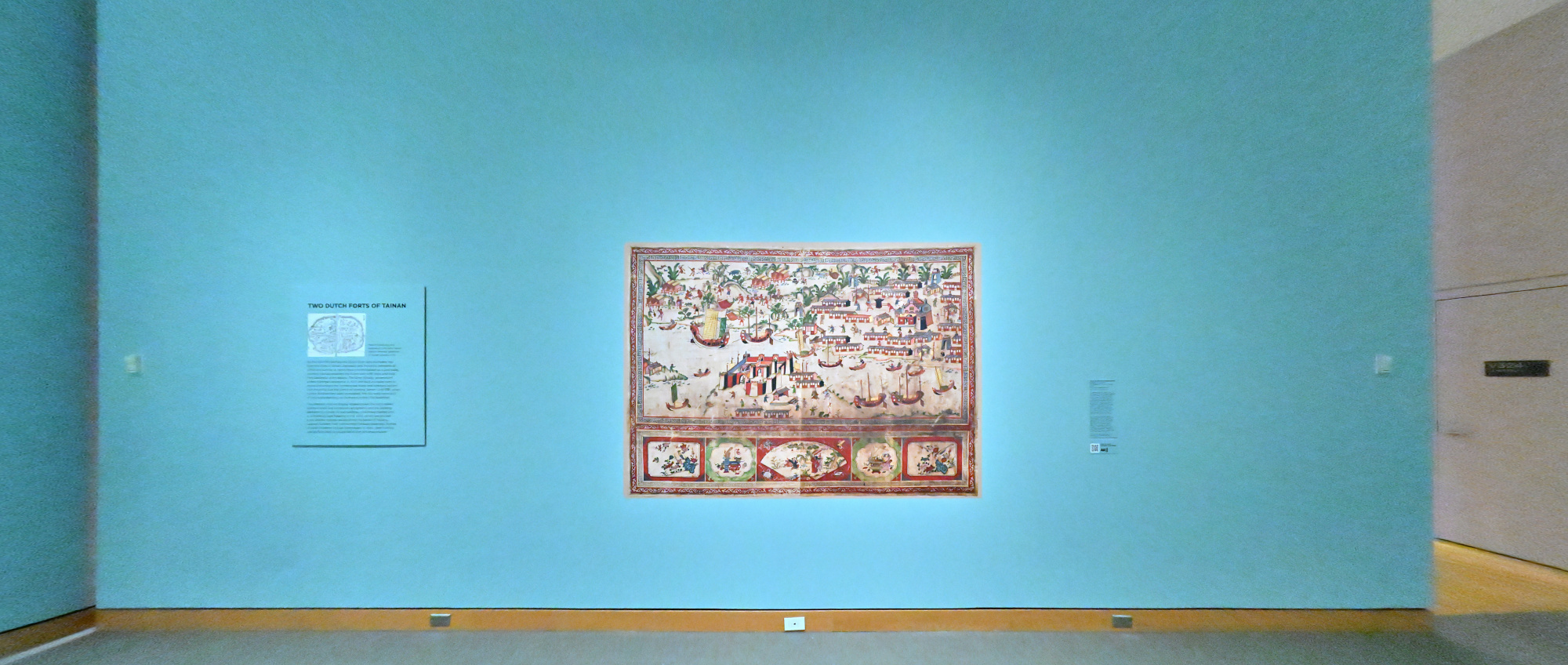
Roman Art: The Diversity of an Empire
1/50s f/5,6 ISO 4000/37° f=7,5mm
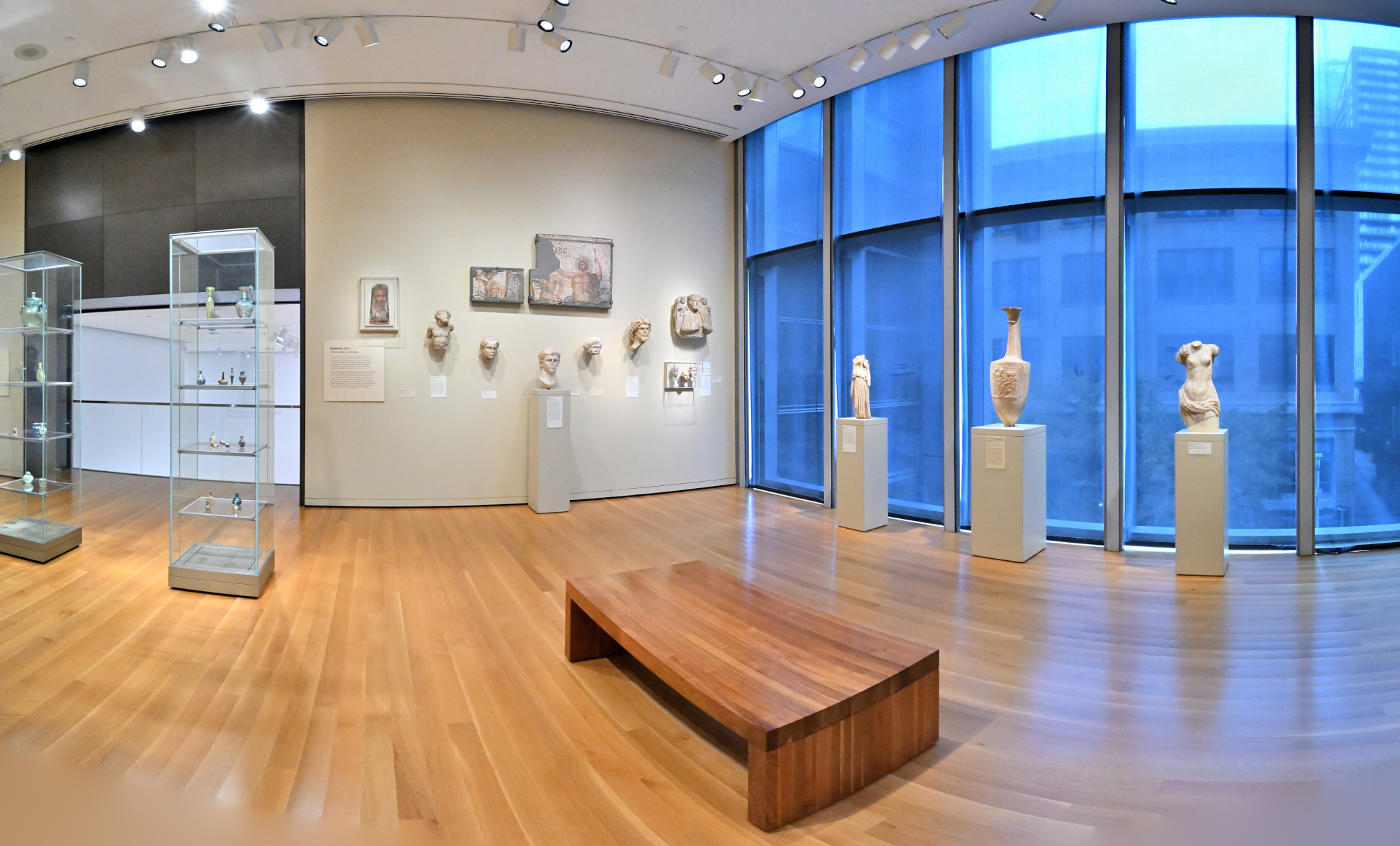
1/50s f/5,6 ISO 4000/37° f=7,5mm
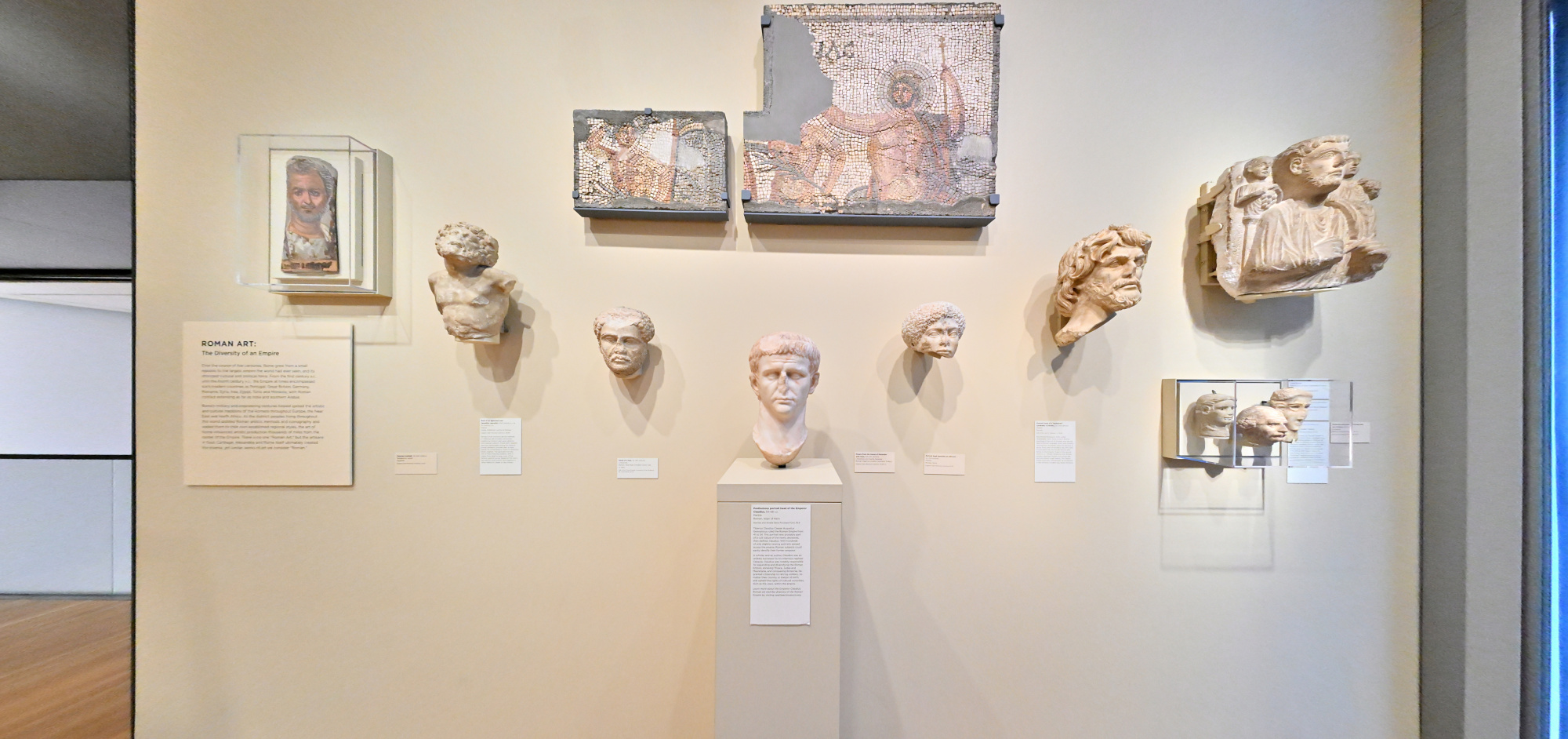
Impressionisms: The Global 19th Century
1/50s f/5,6 ISO 6400/39° f=7,5mm

Winter Landscape on the Bank of the Seine, Henri Matisse
SAM Stories and SAM's collection
1/50s f/5,6 ISO 6400/39° f=7,5mm
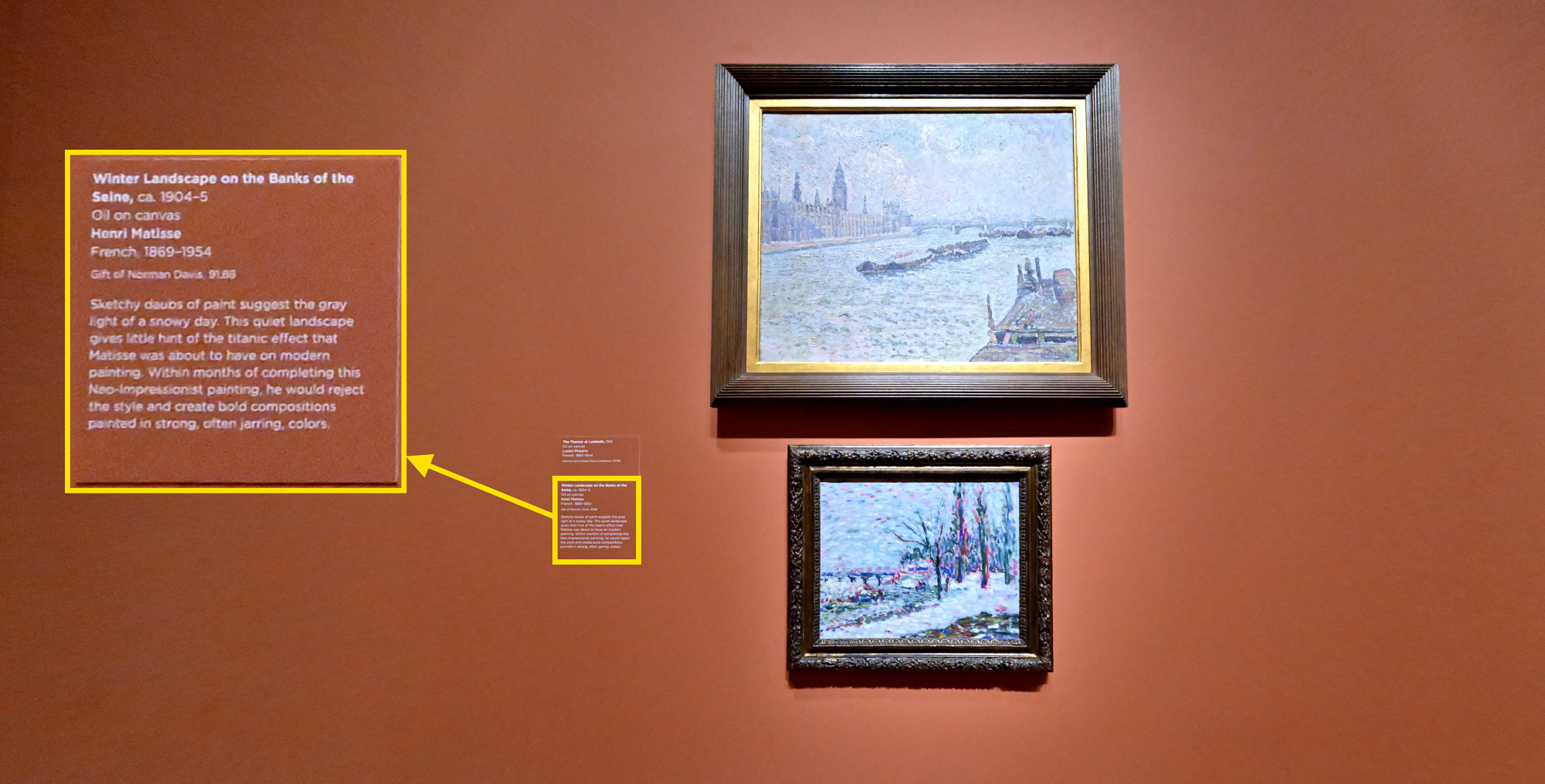
Porcelain Room
1/50s f/5,6 ISO 8000/40° f=7,5mm

The Italian Room
SAM Stories and SAM's collection
1/50s f/5,6 ISO 8000/40° f=7,5mm
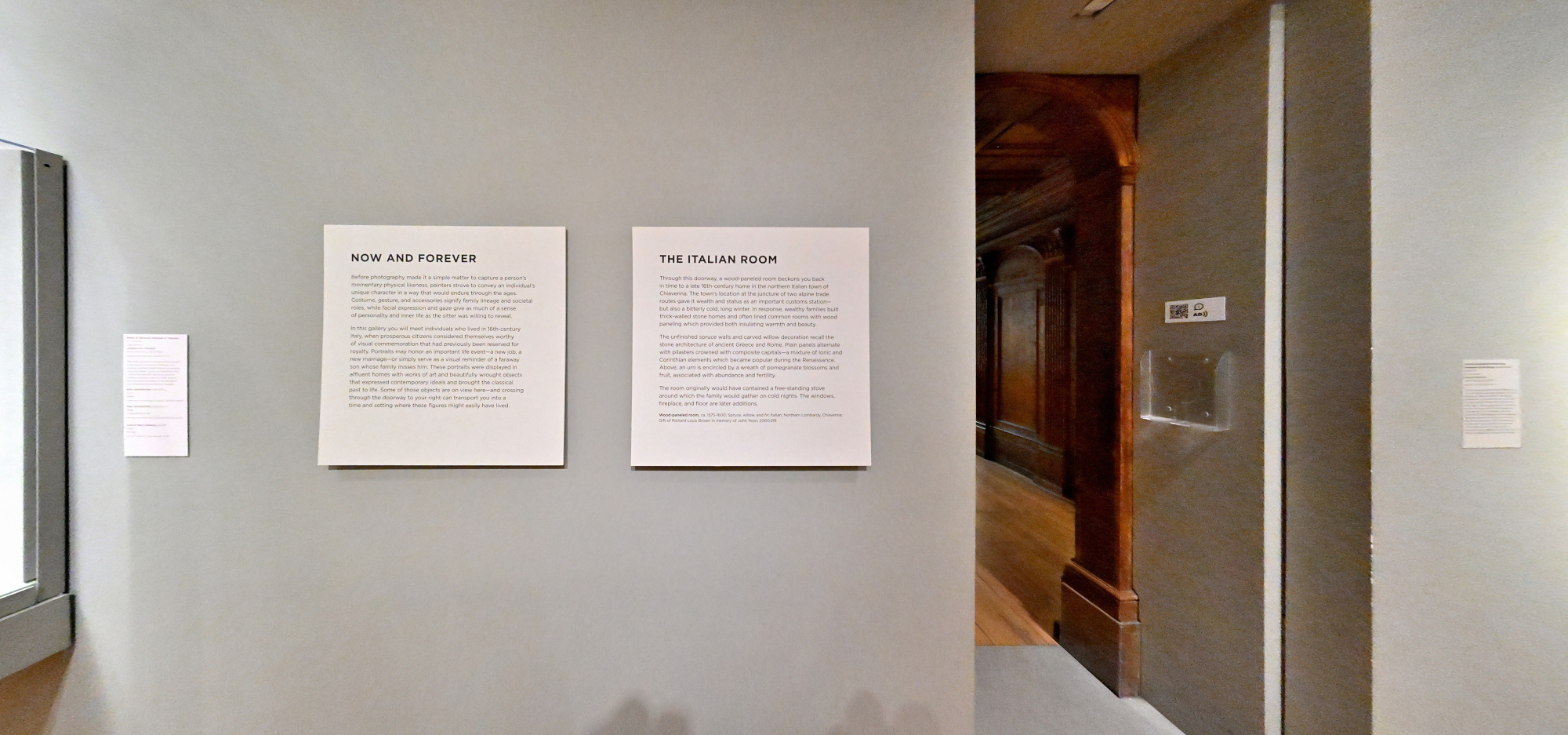
Interactive Panorama The Italian Room
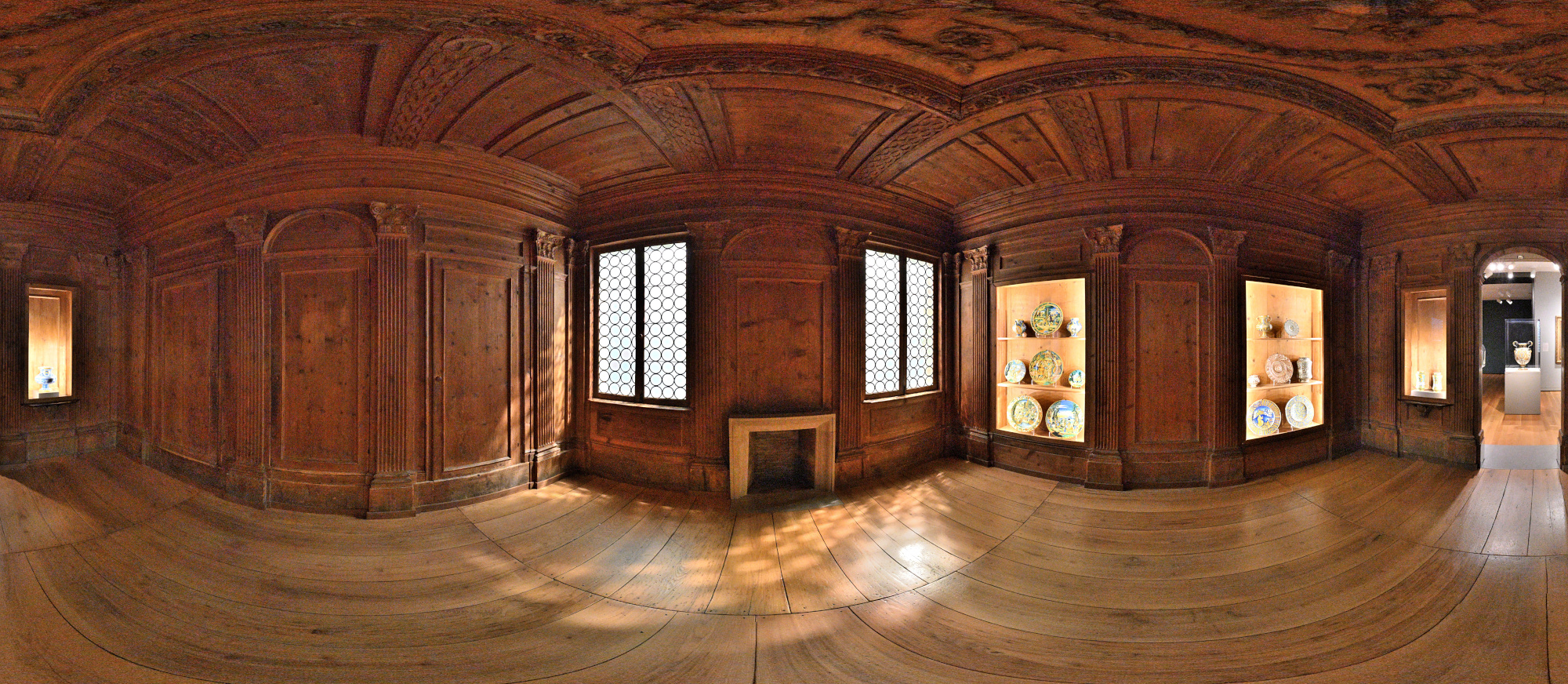
Noise reduction was not applied to retain details; the images were only graded3.
There was no time for multiple exposures for HDR, and of course no tripod because we were in a museum. I only had a brief moment when the room was empty to capture a 360°×180° panorama.1/50s f/5,6 ISO 8000/40° f=7,5mm
It was really dark in this room. Here are the ungraded raw images:
1/50s f/5,6 ISO 8000/40° f=7,5mm
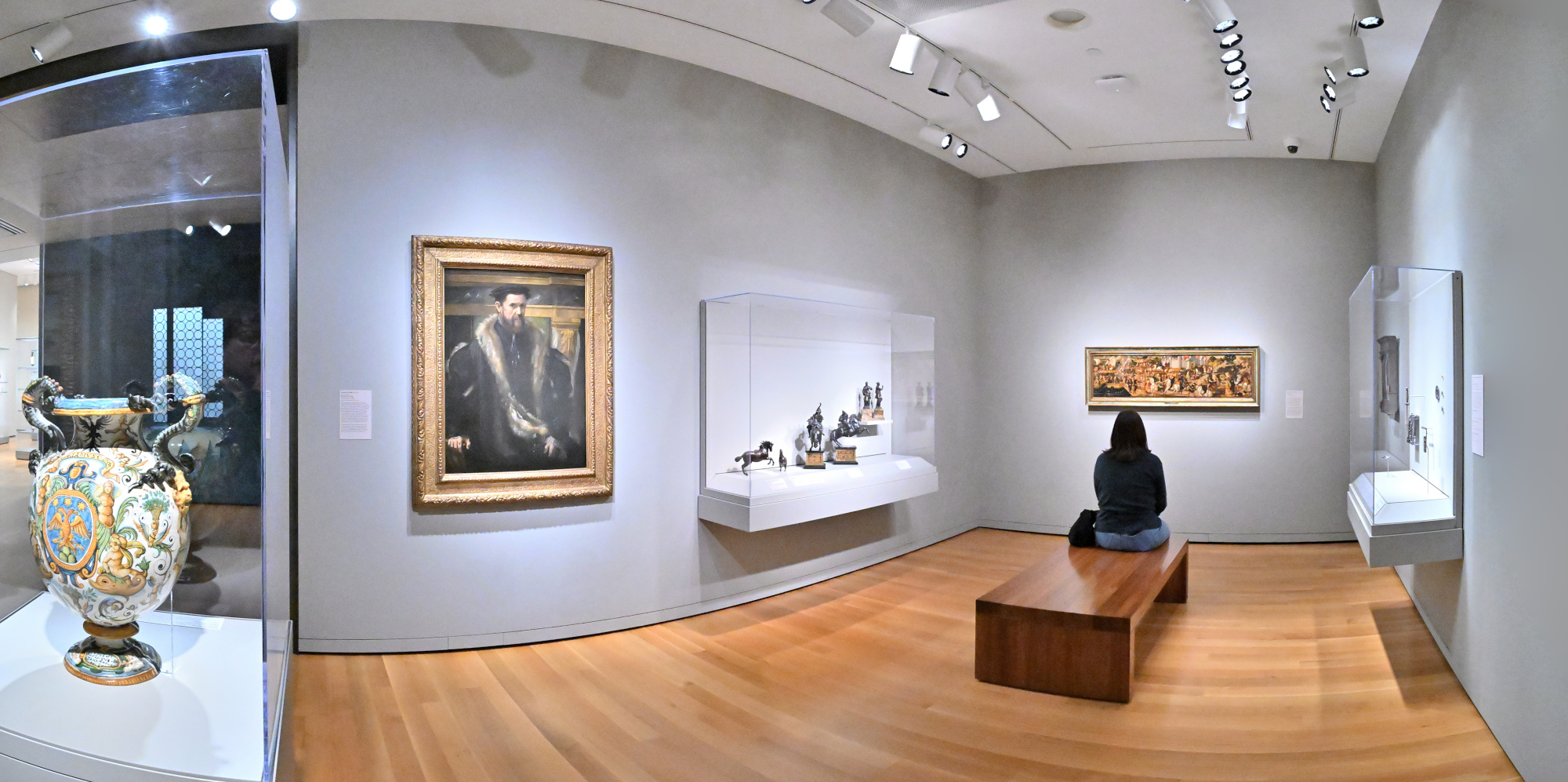
From Galleries to Sidewalks
When we left the museum, it was only partly cloudy with a hint of sunshine. The Pacific Northwest's quiet way of saying thanks for staying.
1/400s f/5,6 ISO 100/21° f=7,5mm
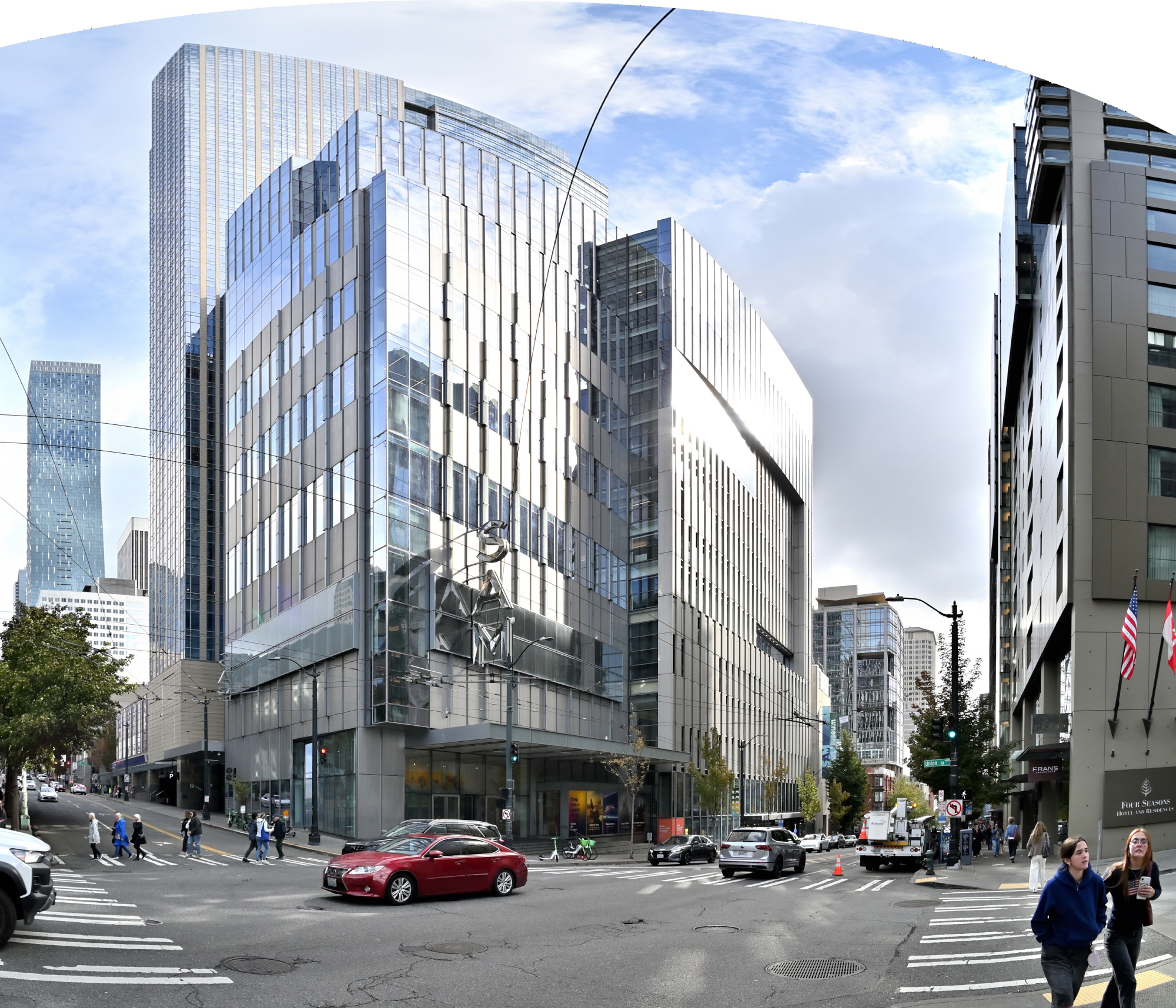
From the calm of the galleries to the vibrant pulse of Pike Place Market
1/125s f/5,6 ISO 2500/35° f=7,5mm
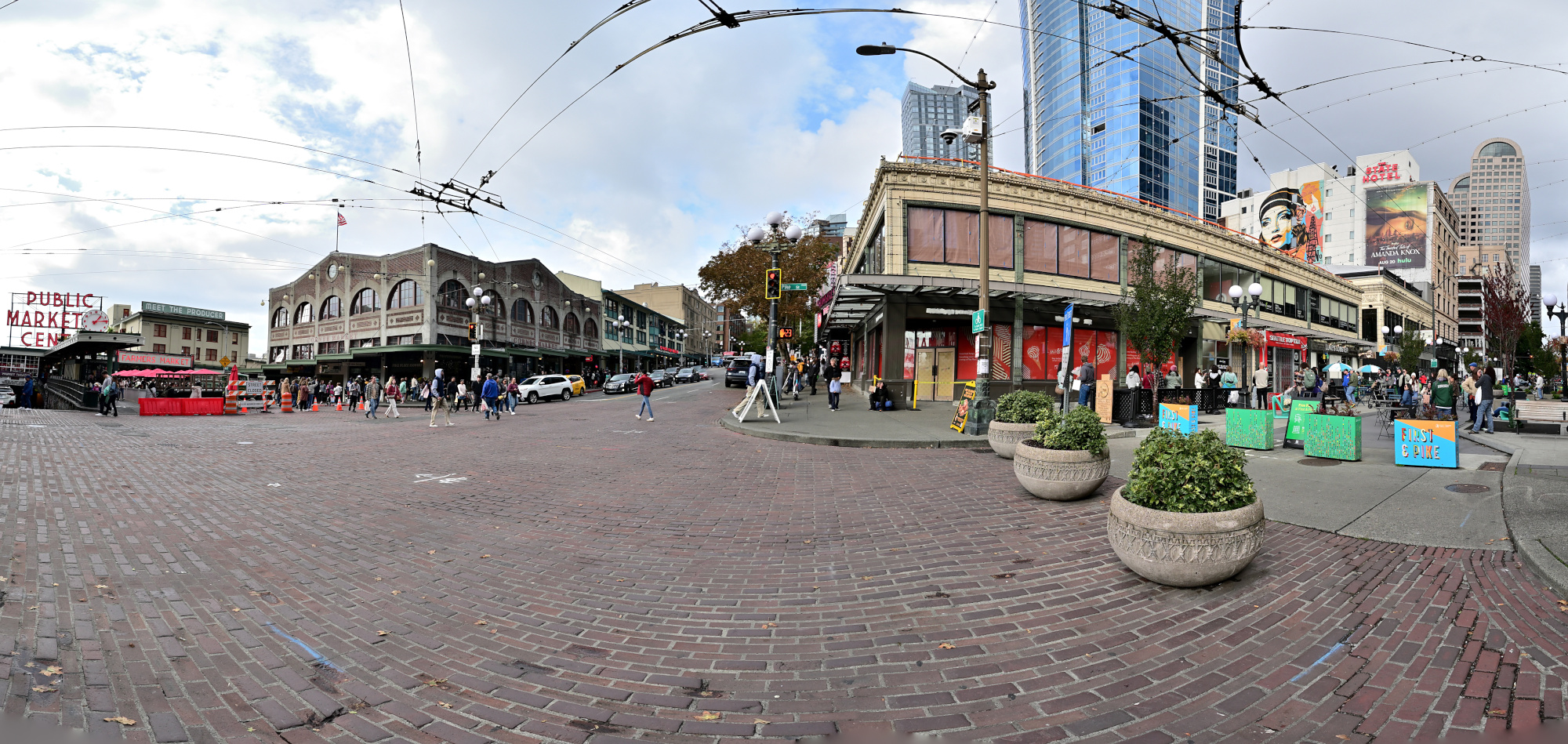
1/125s f/5,6 ISO 100/21° f=7,5mm
-
List of Exhibitions for 2025:
• FriendsWithYou: Little Cloud Sky – Jun 27, 2025 – ongoing
• Ash-Glazed Ceramics from Korea and Japan – Jul 9, 2025 – Jul 12, 2027
• Diego Cibelli: Fiori dei Miei Habiti / La Montagne Enchantée – May 31, 2024 – May 10, 2026
• Yirrkala: Art from Australia’s Top End – May 10, 2024 – ongoing
• Lessons from the Institute of Empathy – Mar 31, 2018 – ongoing
• Impressionisms: The Global Nineteenth Century – Mar 27, 2024 – ongoing
• American Art: The Stories We Carry – Oct 20, 2022 – ongoing
• Chronicles of a Global East – Oct 20, 2022 – ongoing
• Pacific Species – Dec 22, 2022 – ongoing
• Cosmic Beings in Mesoamerican and Andean Art – Nov 10, 2018 – ongoing
• Art and Life Along the Northwest Coast – Nov 26, 2014 – ongoing
• Only Connect: The Art of Devotion – Apr 29, 2011 – ongoing
• Porcelain Room – May 5, 2007 – ongoing
↩ -
In this context, graded refers to applying tone curve adjustments to brighten dark areas and make details more visible. ↩
-
-
Nikon Z50 II
To expand my Nikon setup, I added the Z50 II to complement my Z30, which I primarily use for panoramic photography with a fisheye lens.
Both cameras are light weight and have a small form factor that makes it a perfect set that can fit in a small travel bag.Regarding the travel bag, I was curious how the complimentary Nikon GL X Nikon Splash Crossbody Bag (Black) fits into the overall setup and how I might make use of it.
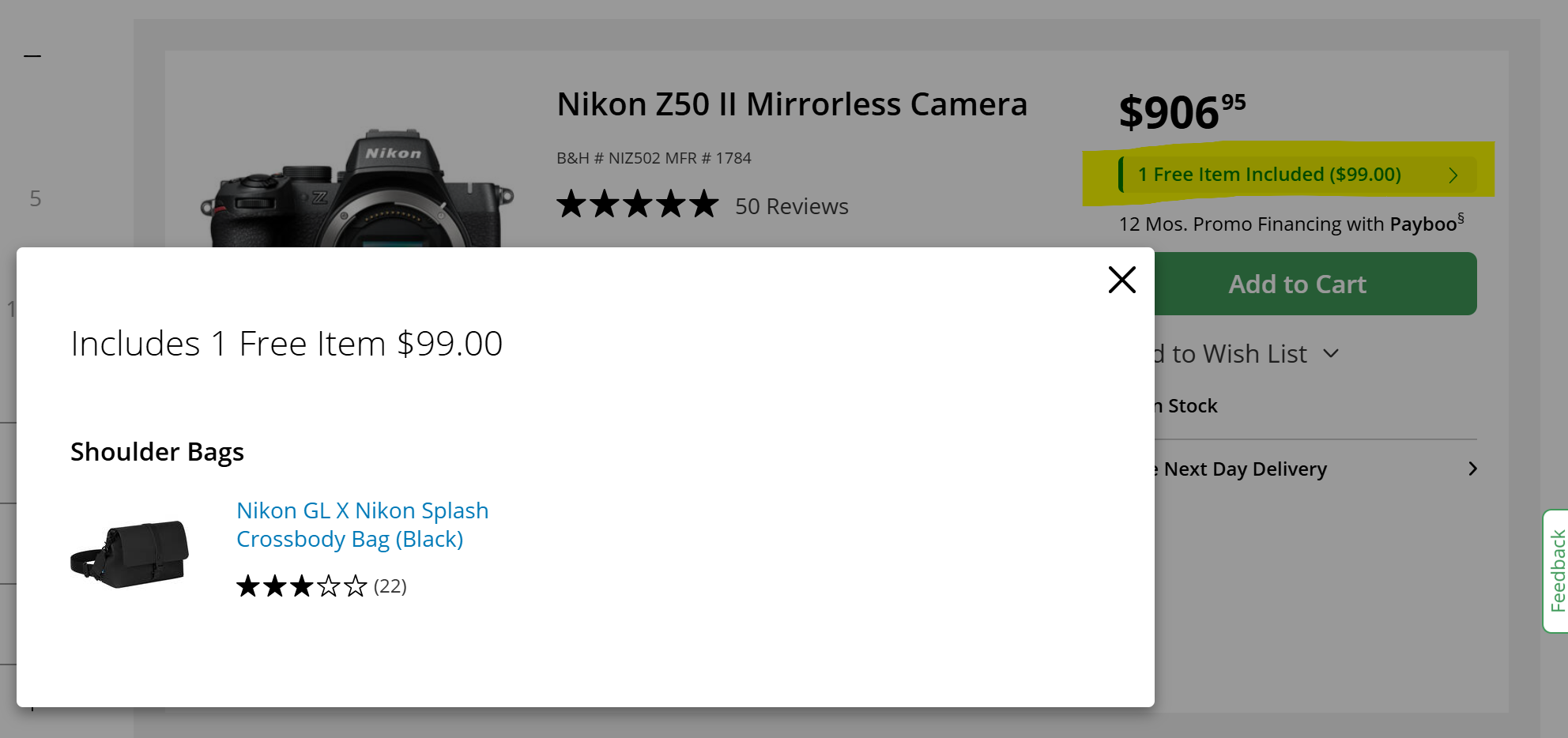
It quickly became clear what it was: a bag. Technically. Ideal for transporting your hopes, dreams, and maybe a lens cap.
When the Accessory Is More Fiction Than Function
The Nikon GL X Nikon Splash Crossbody Bag (Black) is normally sold separately for $99.
Imagine paying full price for it. For this price, you get a stylish crossbody bag that claims to carry your mirrorless camera gear. It also claims to offer comfort, space, and practicality. What it actually offers is a tight squeeze, a stubborn flap, and a valuable lesson in product descriptions.For reference, here is the actual product description from the website:
Carry your mirrorless camera gear in this black GL X Nikon Splash Crossbody Bag from Nikon. This bag can comfortably house a small Nikon mirrorless camera with the lens attached and an extra lens. A hook-and-loop divider can be used to separate your gear in the bag's main section. This bag has two zipped pockets with large zipper pulls and a rear slip-in pocket for small items you want quick access to.
Focus on 'comfortably house a small Nikon mirrorless camera with the lens attached and an extra lens'
The Introduction
Camera and bag shown side by side. The bag appears designed for a camera that exists only in marketing illustrations. Internal volume suggests compatibility with a compact point-and-shoot, not a mirrorless system.
The Reality Check
Camera and bag shown separately. Bag looks stylish and minimal. Camera looks like it is wondering where its actual bag went.
The Attempt
Camera inserted. Fit is tight enough to qualify as compression therapy. Remaining space for a second lens is theoretical. Bag closure now requires optimism and duct tape.
The Closure Crisis
Flap refuses to close. Camera exceeds internal volume. Bag now functions as a loosely draped accessory with aspirations of utility.
First Set of Photos Taken While the Bag Watched Helplessly
1/125s f/2,8 ISO 1000 40mm f/2,0
1/250s f/3,2 ISO 400/27° 40mm f/2,0
1/125s f/2,8 ISO 500 40mm f/2,0
1/125s f/2,8 ISO 720 40mm f/2,0
1/125s f/2,8 ISO 800/30° 40mm f/2,0
1/250s f/3,2 ISO 1600/33° 40mm f/2,0
Second Set of Photos Taken While the Bag Stayed Indoors, Quietly Accepting Its Fate
1/500s f/8 ISO 100/21°

1/500s f/8 ISO 100/21° 18-140mm f/3,5-6,3 VR f=92mm/138mm
1/500s f/8 ISO 100/21° 18-140mm f/3,5-6,3 VR f=47mm/70mm
1/500s f/8 ISO 100/21° 18-140mm f/3,5-6,3 VR f=40mm/60mm
1/320s f/6,3 ISO 100/21° 18-140mm f/3,5-6,3 VR f=23mm/35mm
1/400s f/7,1 ISO 100/21° 18-140mm f/3,5-6,3 VR f=29mm/44mm
1/320s f/7,1 ISO 100/21° 18-140mm f/3,5-6,3 VR f=44mm/66mm
1/500s f/8 ISO 100/21° 18-140mm f/3,5-6,3 VR f=26mm/39mm
1/400s f/7,1 ISO 100/21° 18-140mm f/3,5-6,3 VR f=82mm/123mm
1/500s f/6,3 ISO 180 50-250mm f/4,5-6,3 VR f=250mm/375mm
1/500s f/5,6 ISO 6400/39° 50-250mm f/4,5-6,3 VR f=175mm/262mm
The Nikon Z50 II should have been available decades earlier, or I should have been available decades later. It brings modern photography into focus without complicating the experience. With improved autofocus, streamlined connectivity that includes Cloud and FTP upload, and solid image quality, it is simply fun to use. I was taking a picture of my cat running, and it instantly focused on the eyes. Quite impressive.
Full-frame models offer more features, including in-body image stabilization (IBIS), but they are heavier and larger. Sometimes, things are just good enough for what you do. -
Spokane, WA
Spokane, Washington, nestled along the Spokane River in the eastern part of the state, is known for its rich history, vibrant arts scene, and stunning natural surroundings. Named after the Spokane Tribe, 'Children of the Sun' in the Salish language, the city reflects deep indigenous roots and natural beauty.
All pictures and panoramic images are taken with 1/1000s f/5,6 ISO 100/21° f=7,5mm, unless noted otherwise.
🏥 UW
Our journey begins at the University of Washington School of Medicine's Spokane campus, where the first panorama captures the academic heart of the city.
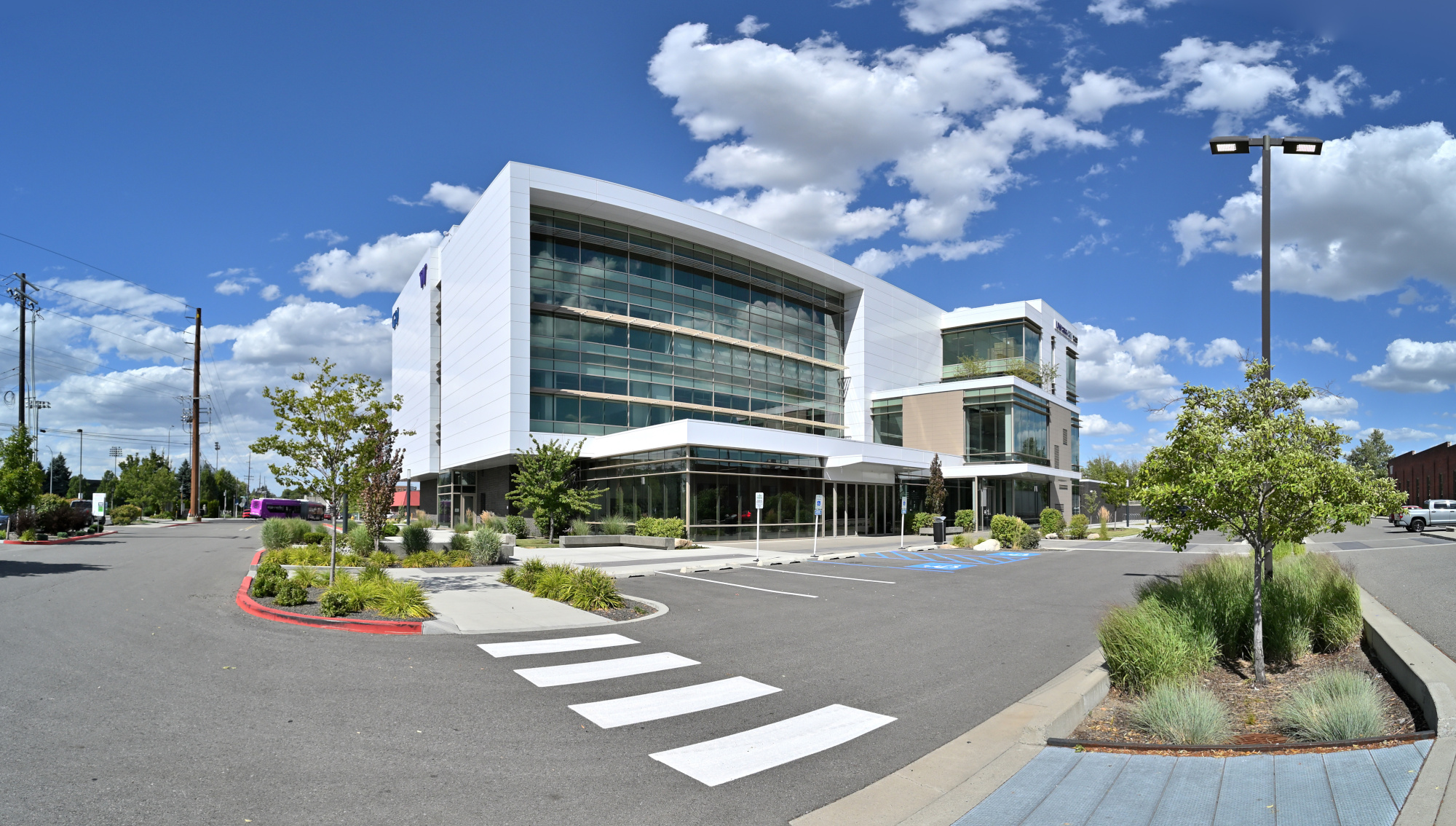

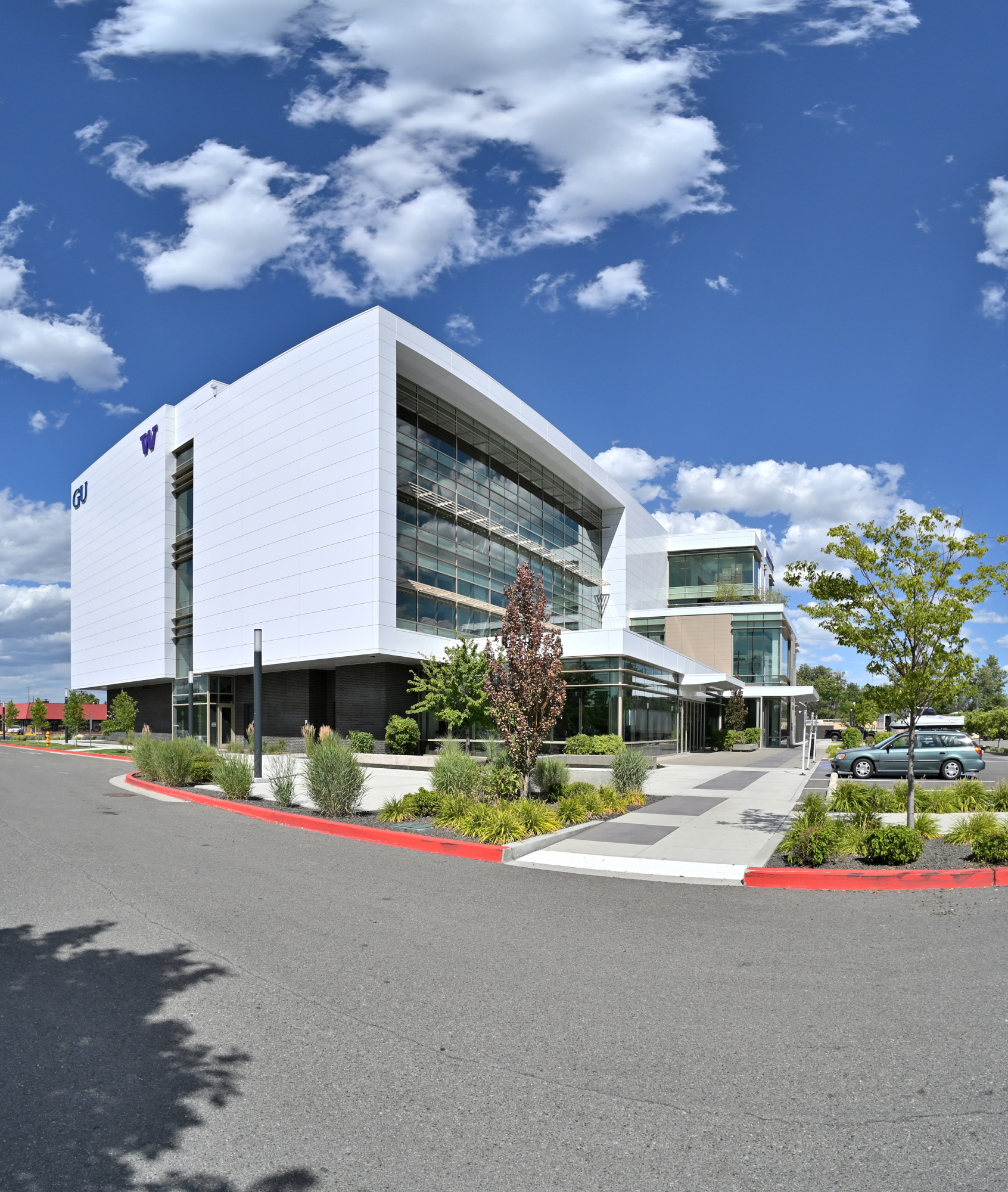
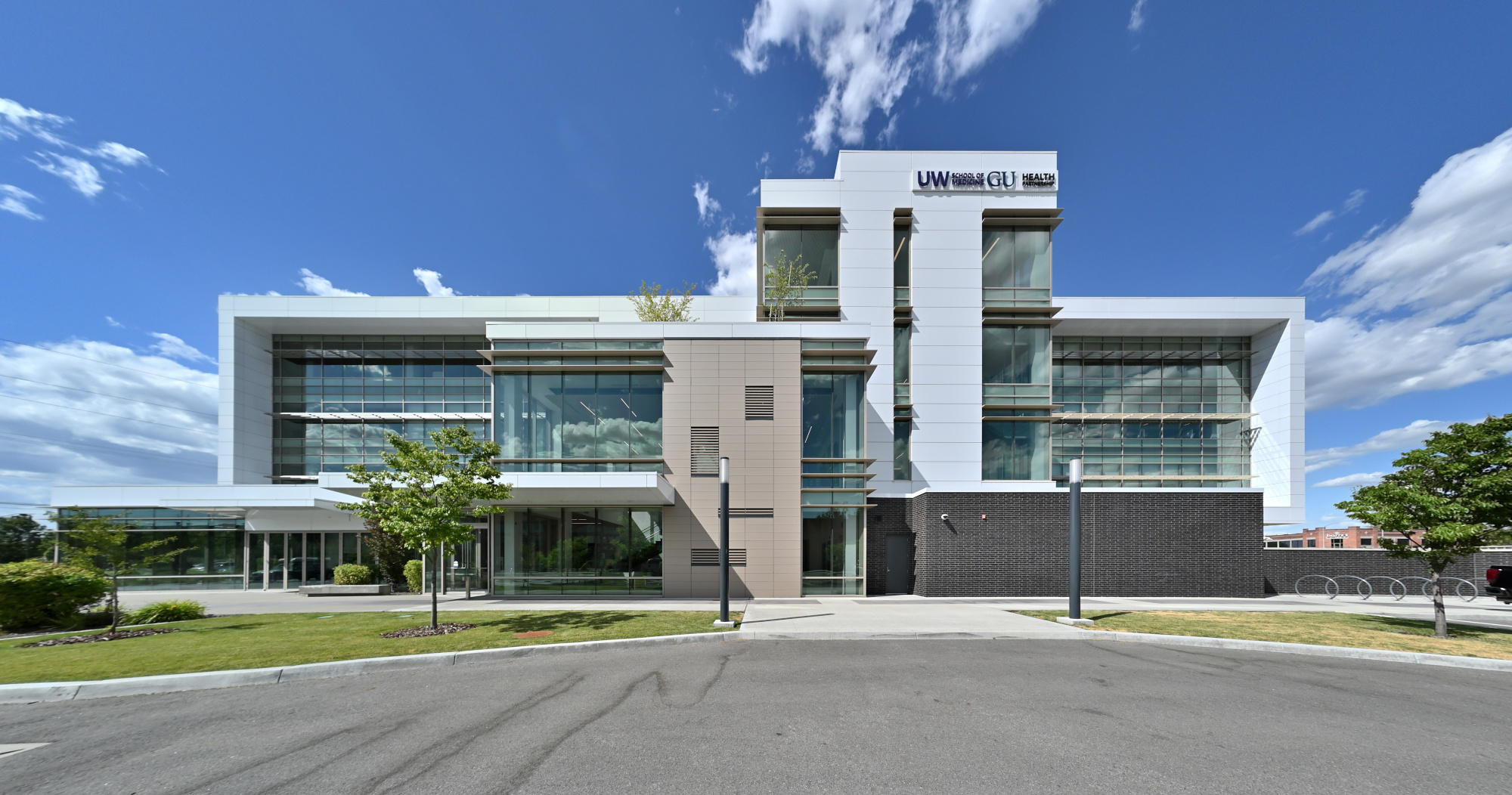
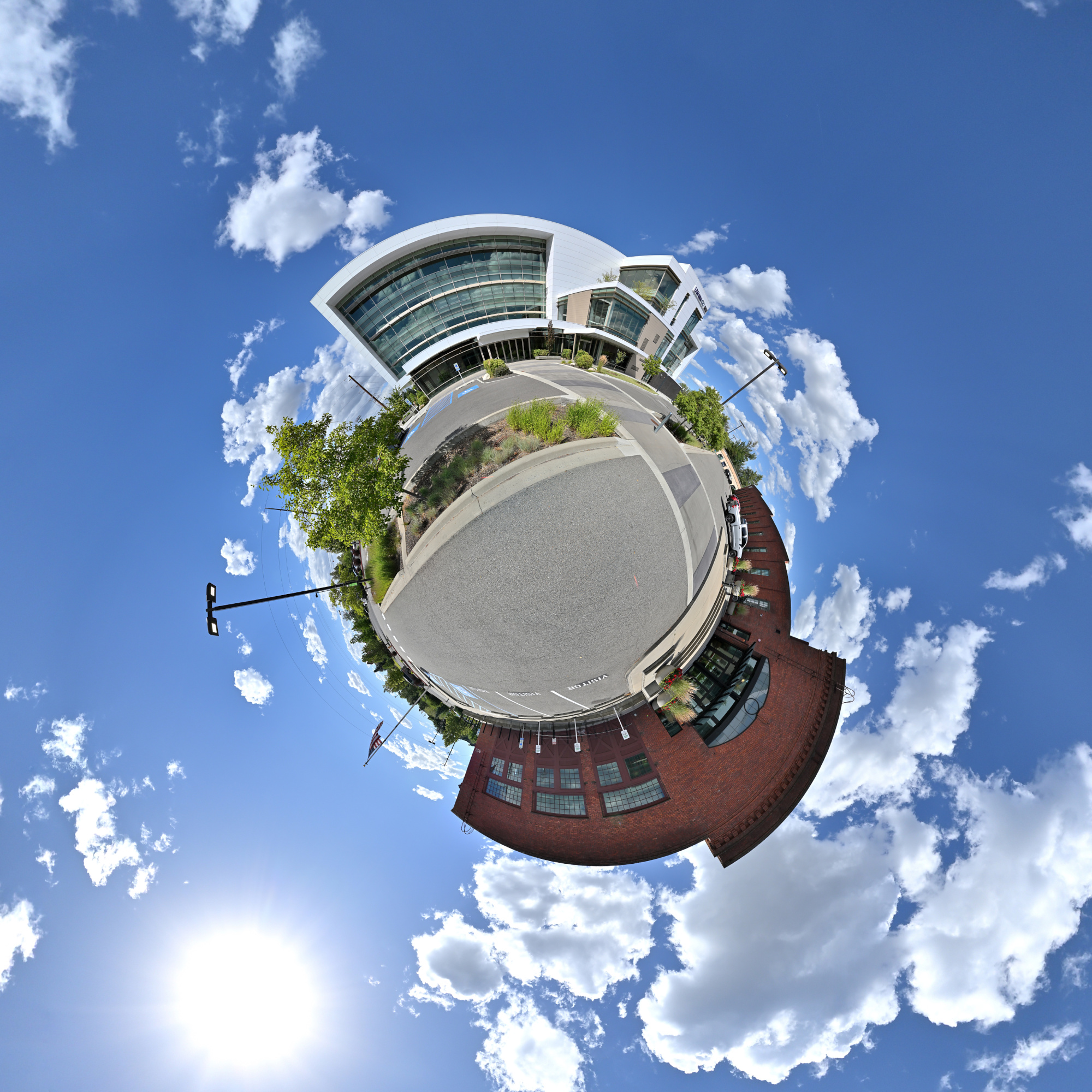
🌳 Riverfront Park
Spokane's green centerpiece, once the site of Expo '74, is now a vibrant public space full of history and movement. Bridges connect the city to Havermale Island, where some panoramas were taken. The view here spans from the upper Spokane Falls to the Pavilion, capturing the park's dynamic blend of nature, architecture, and community life.
The Centennial Sculpture on a cloudy day
And next to it, The Great Northern Clocktower

View from a nearby Hotel to the Riverfront Park
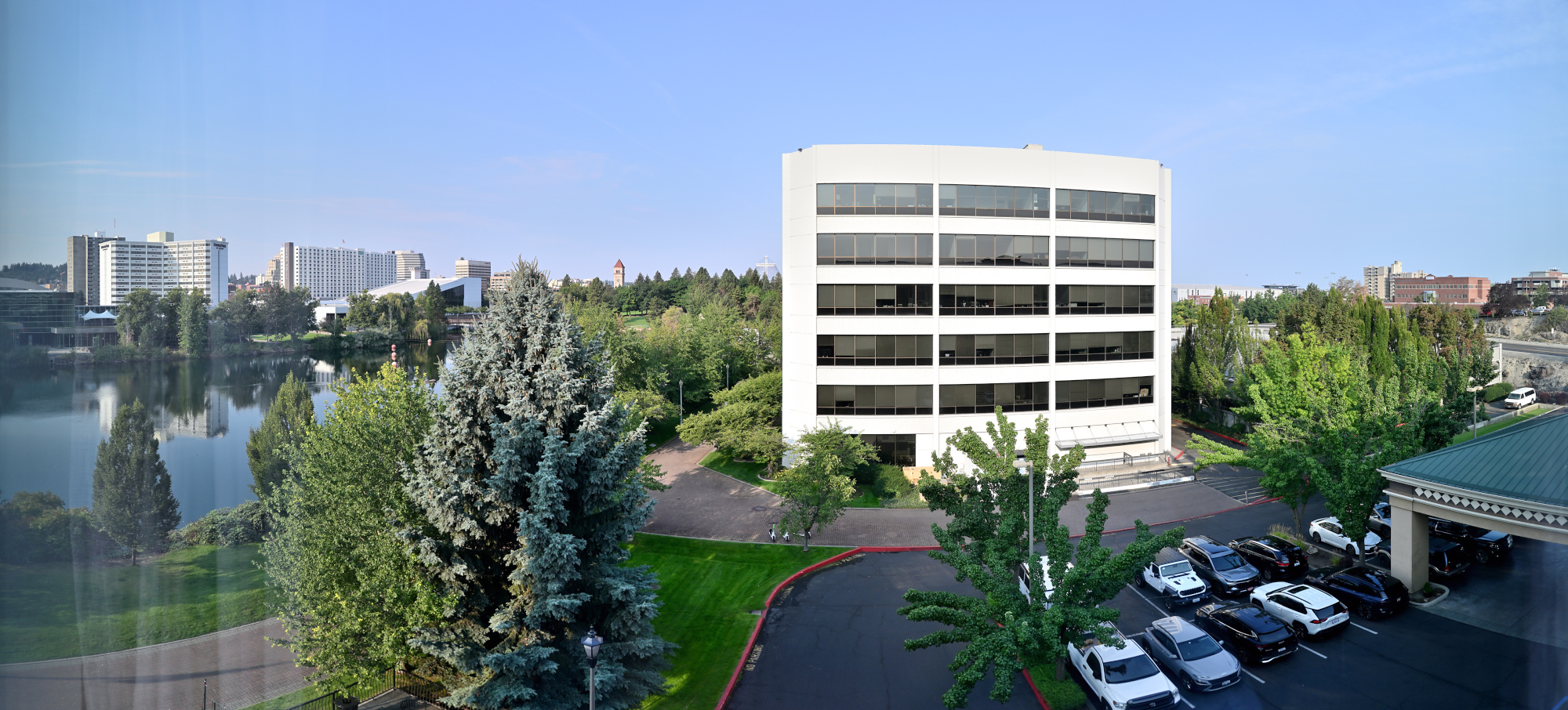
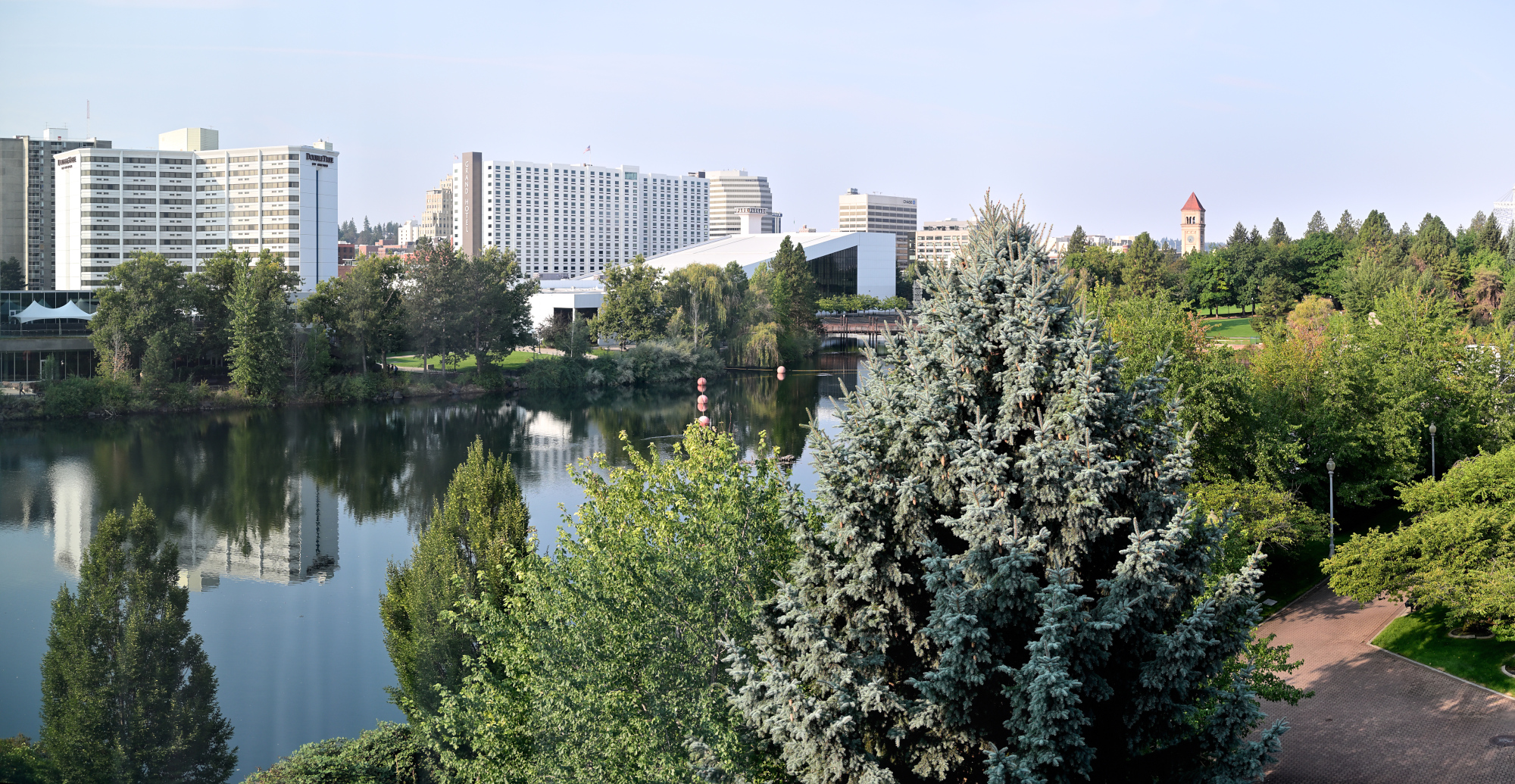
This particular panorama proved trickier than expected. Without a tripod, aligning the frames by hand made it difficult to maintain precise rotation around the nodal point, which is essential for perfect stitching. I even added an extra frame to help with stitching, but small imperfections remain. Still, the result captures the essence of the scene, even if a few pixels had a mind of their own. Sometimes, the story behind the image is part of the image itself.
Interactive Panorama Spokane Pavilion
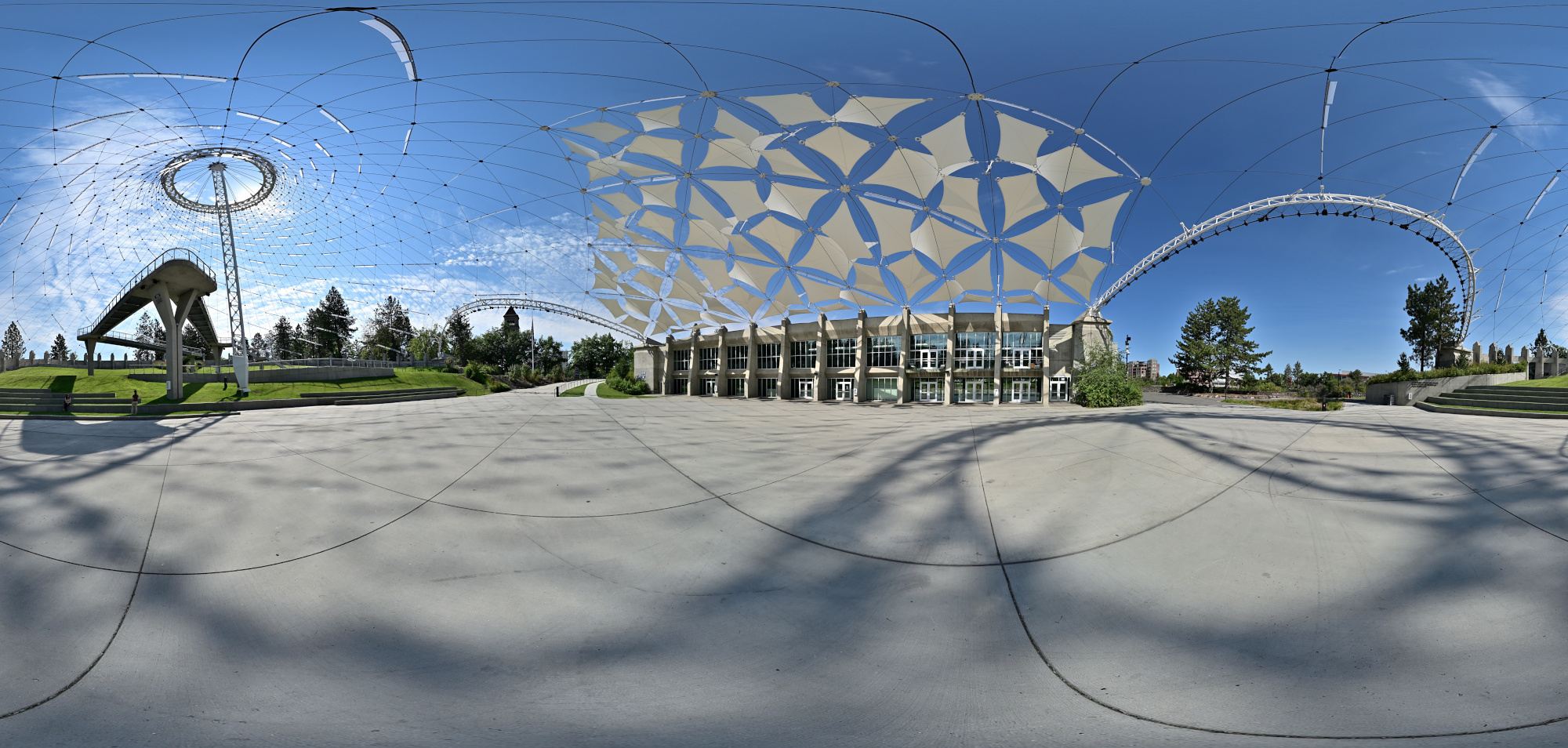
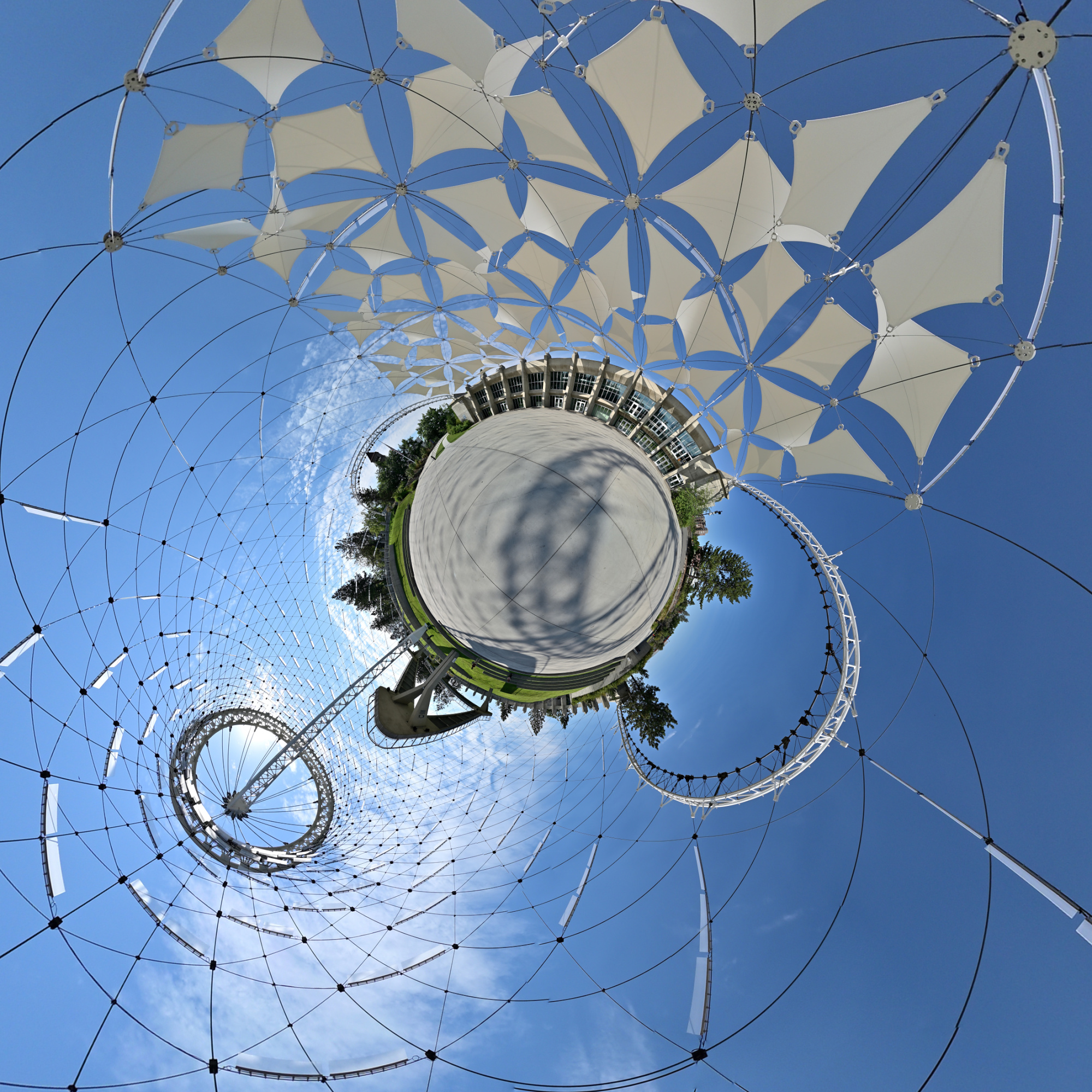
Interactive Panorama King Cole Woodbridge

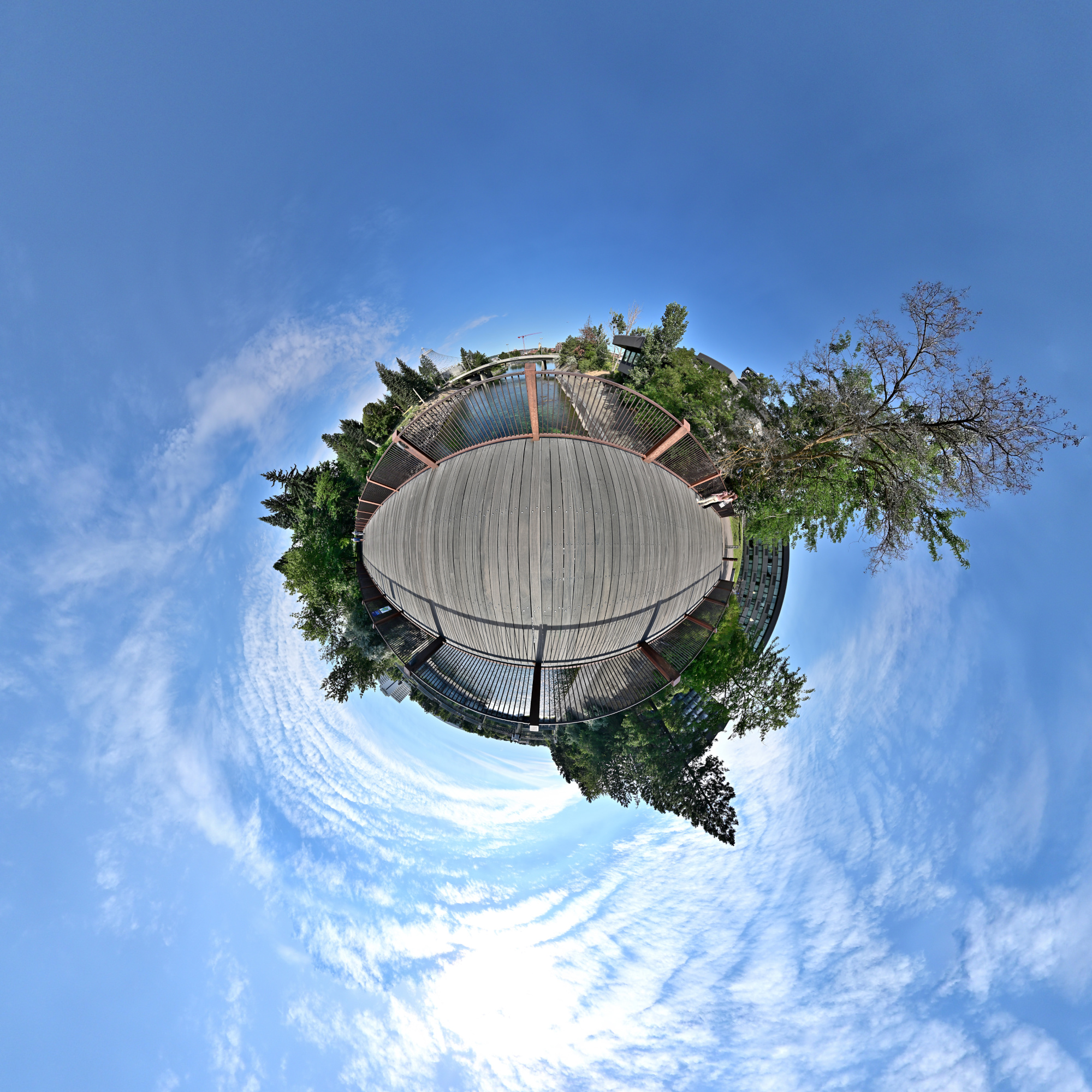
Interactive Panorama Spokane Falls Brücke

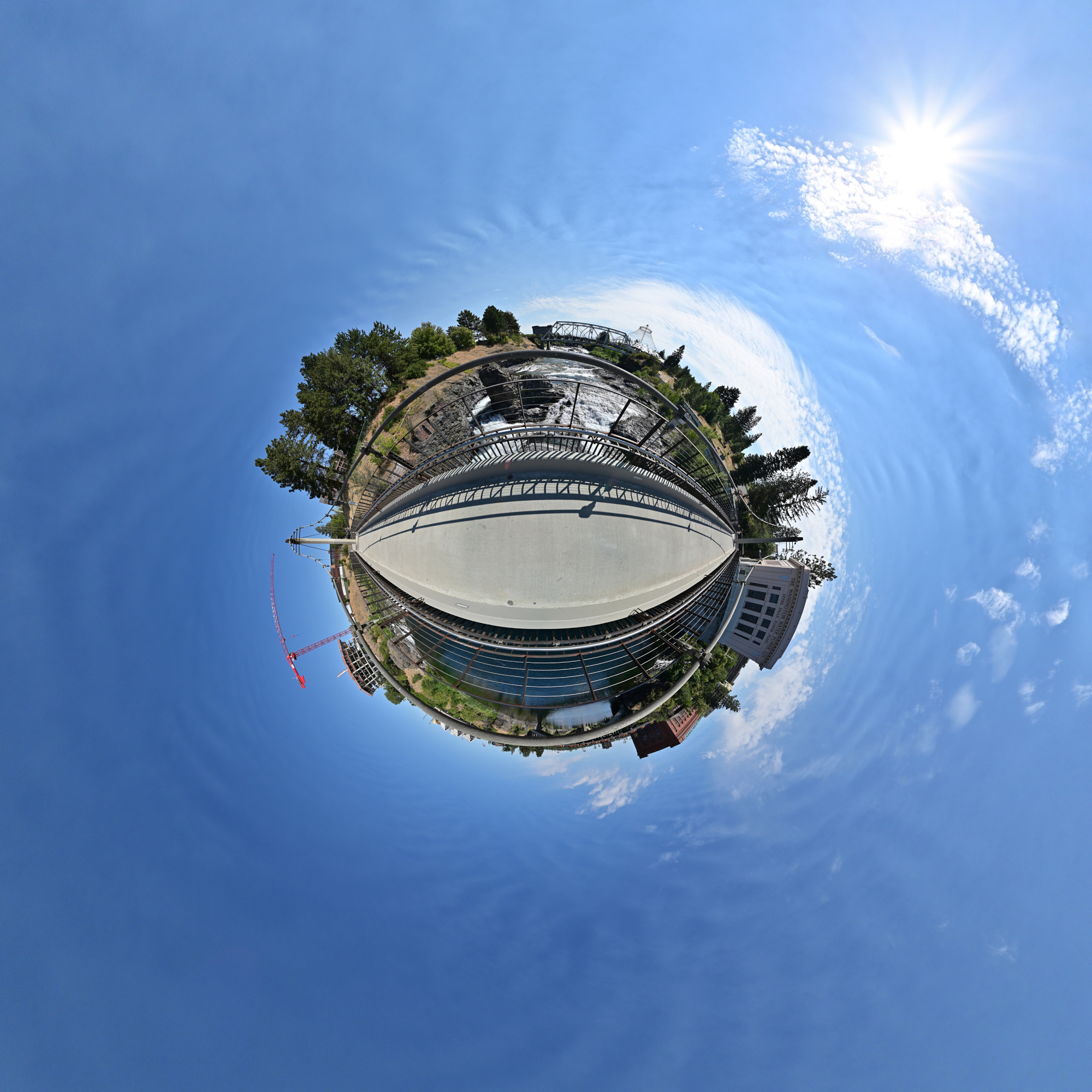
🌊 Spokane River
The Spokane River winds through the city, carving its path through stone and story alike. Along its banks, trails, bridges and parks invite exploration. The panoramic images captures the river's flow near one of its quieter bends, where reflections of sky and trees ripple across the surface.
Framed by Steel: A View Through the Bridge
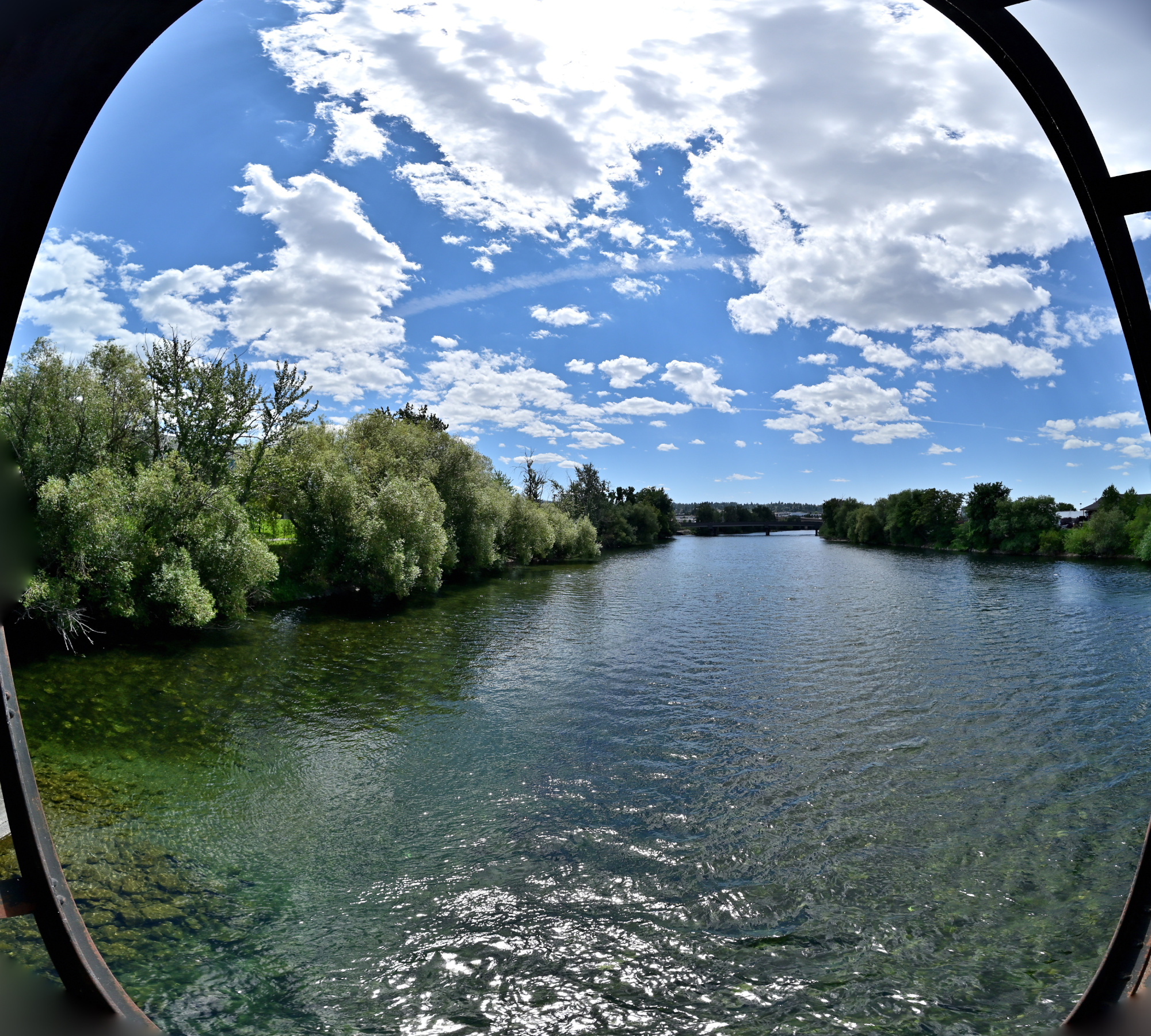
River bend

Sunlit Walk Along the Water

More Pictures Along the Riverside
The World Wide Panorama contribution for the event 'Why'
A single dead tree stands between the walkway and the riverbank. Its bare branches reaching skyward in contrast to the lush greenery around it.
Why did it die? Was it disease, drought, or simply age?
Its presence adds a quiet tension to the scene, a reminder that even in places full of life and movement, stillness and decay have their place too.Interactive Panorama Spokane River


🏢 Apartment Where We Stayed
Spokane offers a wide spectrum of hotel experiences, like a roulette wheel of hospitality. On one end, you've got places like the Ramada by Wyndham, where the décor is "early abandonment", the guests are... let's say colorful, and the rooms come with a complimentary layer of grime. On the other end, there are sleek 4-star hotels that promise luxury but sometimes deliver lukewarm service and Yelp reviews that read like cautionary tales. And in the middle? The classic 3-star American hotel, where breakfast includes a waffle machine, questionable eggs, and the lingering scent of disappointment. Choose wisely, or at least pack your sense of humor.
We were lucky. Tucked into a quiet neighborhood close to the campus, our apartment served as a perfect base for exploring the city. With morning light filtering through the windows and the scent of pine in the air, it offered a peaceful retreat.
Interactive Panorama Apartment 1
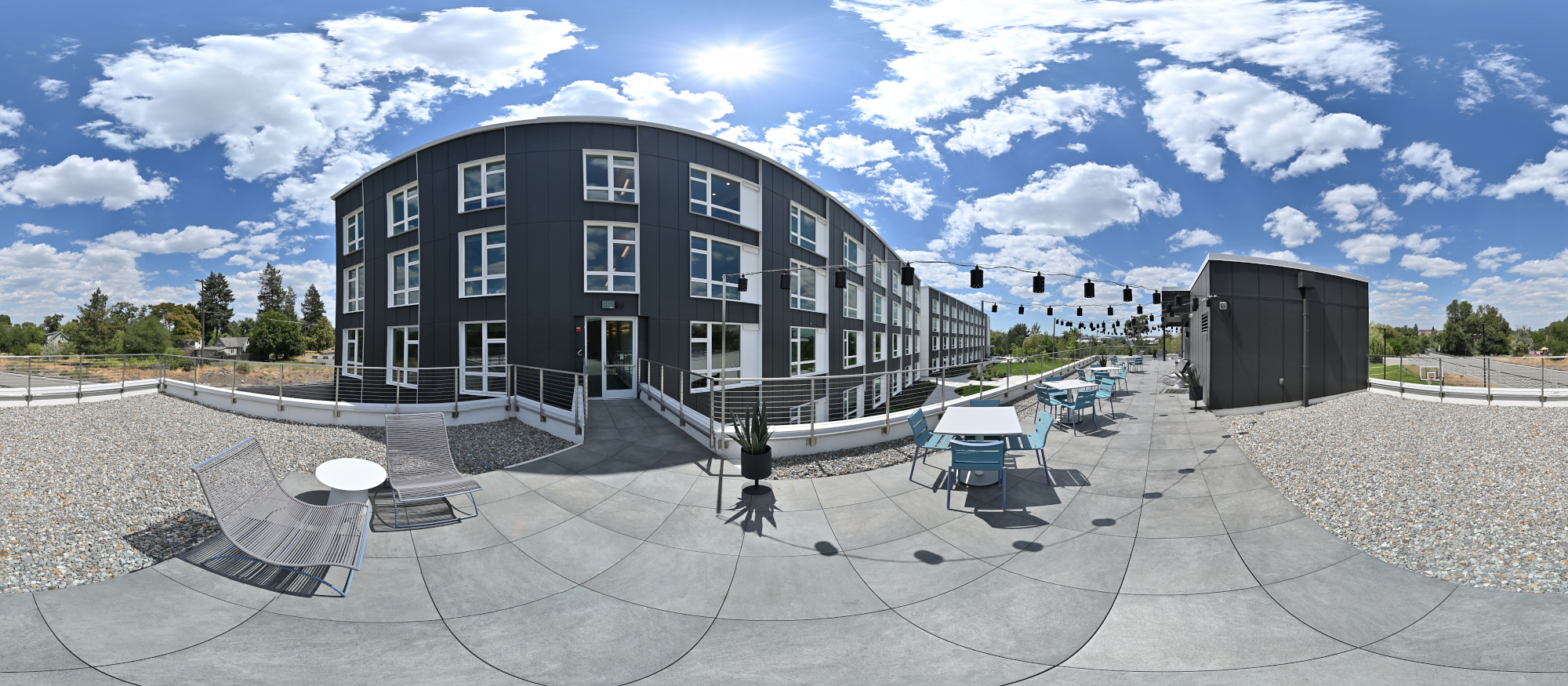
Interactive Panorama Apartment 2
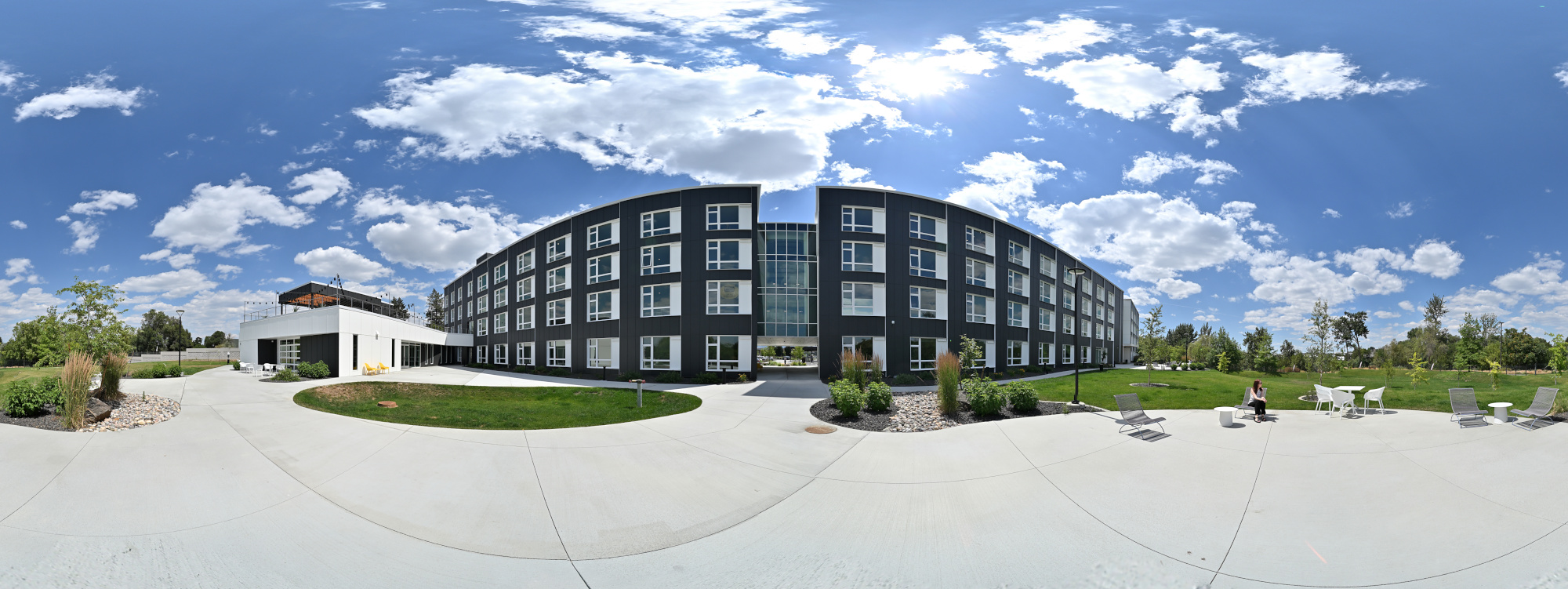
✈️ Airport
Our journey ends where we first arrived, and we leave Spokane behind with memories captured in light and lines. Spokane International Airport welcomes visitors with a mix of regional charm and modern convenience. The terminal's open design and surrounding pine-dotted landscape offer a first glimpse of the Inland Northwest's character.
1/80s f/5,6 ISO 200/24° f=7,5mm
1/80s f/5,6 ISO 160/23° f=7,5mm
The 737 arrives
Taxi-in
Passenger boarding bridge attaches
Start refueling and unloading
The windows facing the airfield are tinted with a subtle blue hue, and be corrected by adjusting the white balance (photos were taken using the sunlight white balance setting).
Forty minutes later, we rolled into Seattle and the Spokane chapter came to a close, pixels packed, panoramas pending, and the last bit of sunlight archived in RAW.
🌥️ Above the Clouds – To Spokane and Back
Every journey begins with a takeoff and ends with a landing — but what happens in between is often the most quietly beautiful. This segment captures both the outbound flight into Spokane and the return above the rugged silhouettes of the Cascade Mountains. From the first lift-off into layered skies to the final descent through fading light, the airborne chapters of this trip offer shifting perspectives: pine forests from above, rivers winding like thoughts, and clouds that blur the boundary between memory and motion.
All images and clips were captured using my Android phone.
SEA - GEG4
Boarding
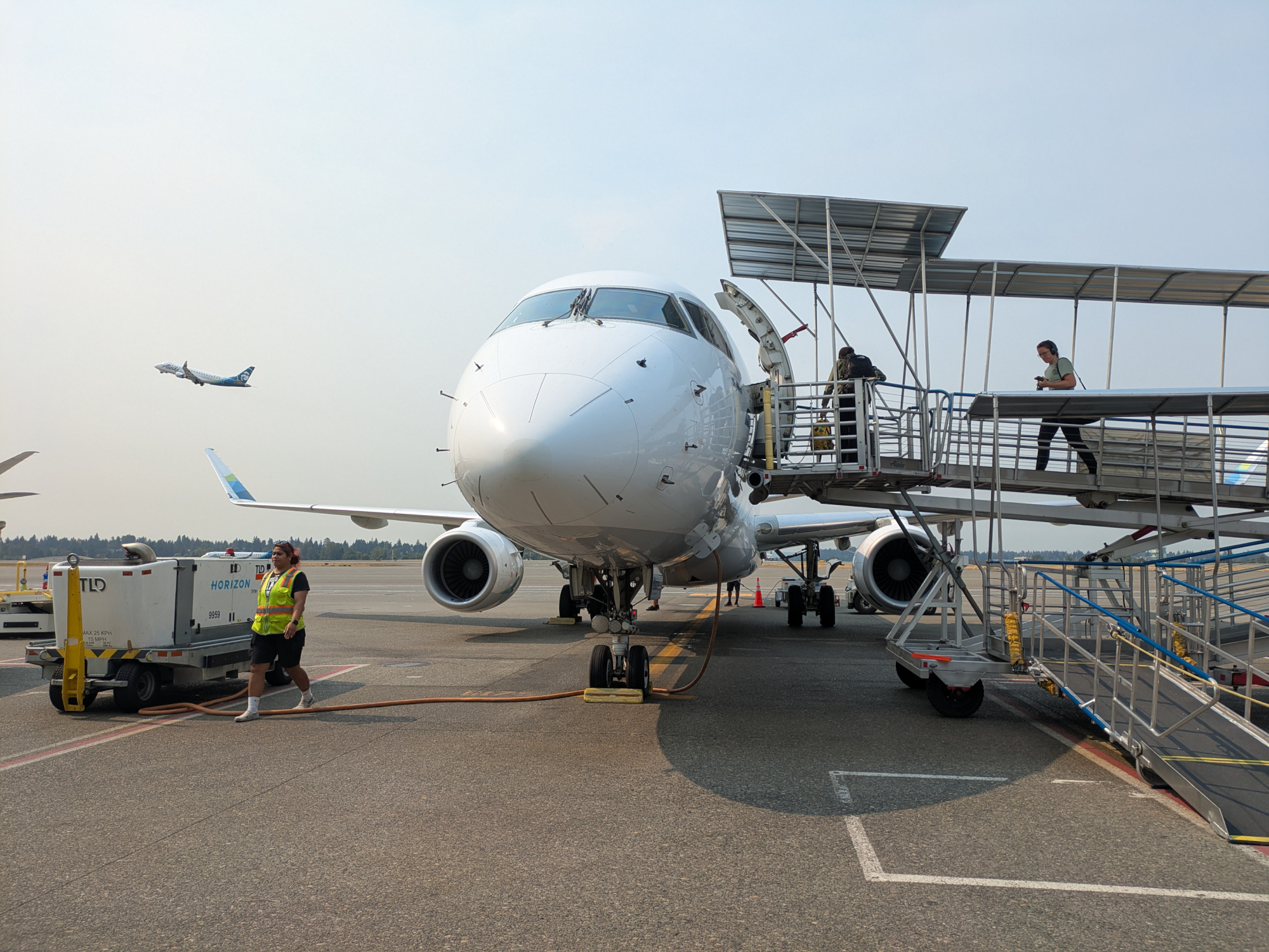
Taxi out from Seattle

Our turn now, with all the other Bombers lined up for their turn
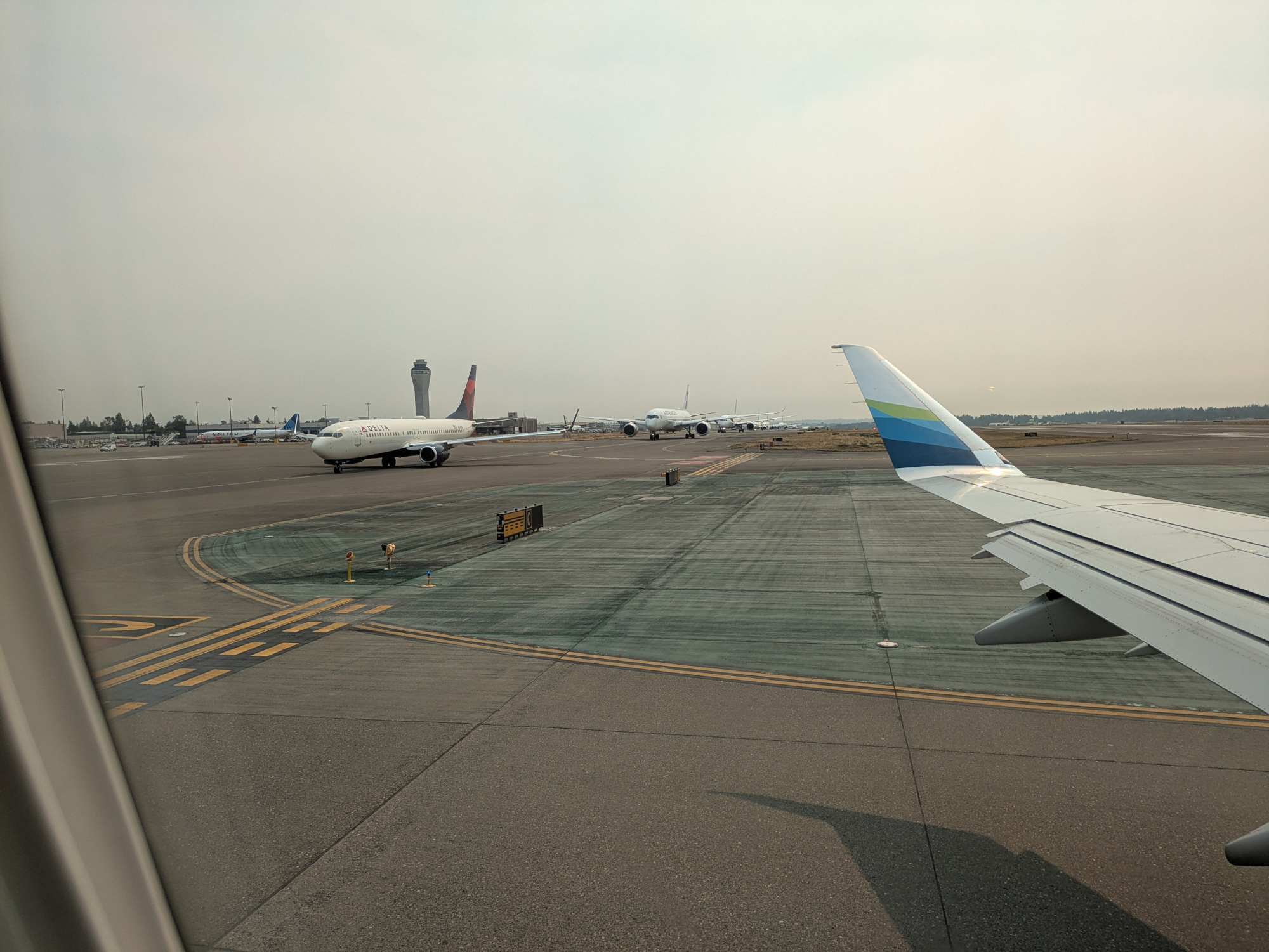
Takeoff
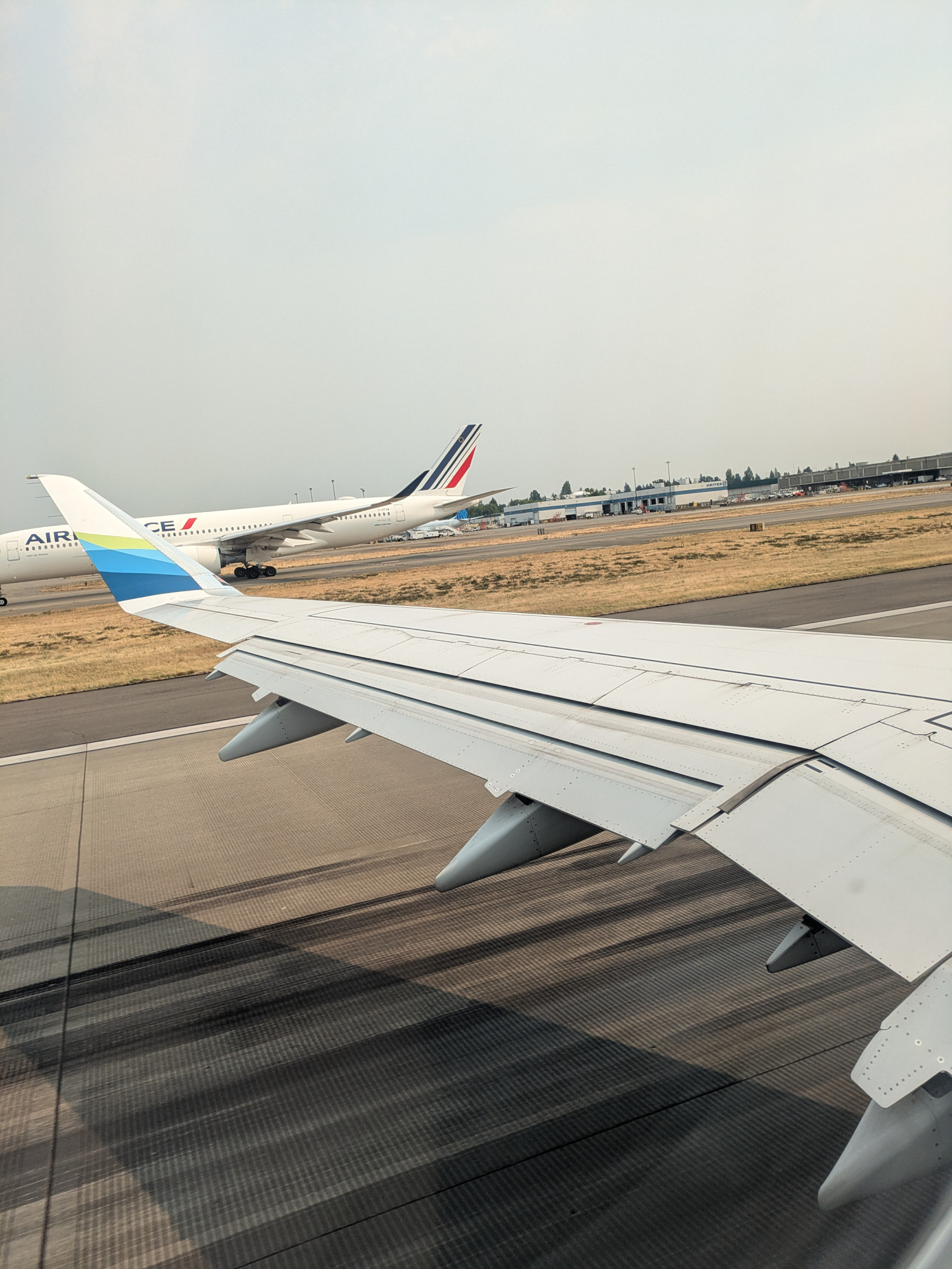
Imagine being stuck in that one for 10 hours. It is just you, sushi, and the slow unraveling of time.
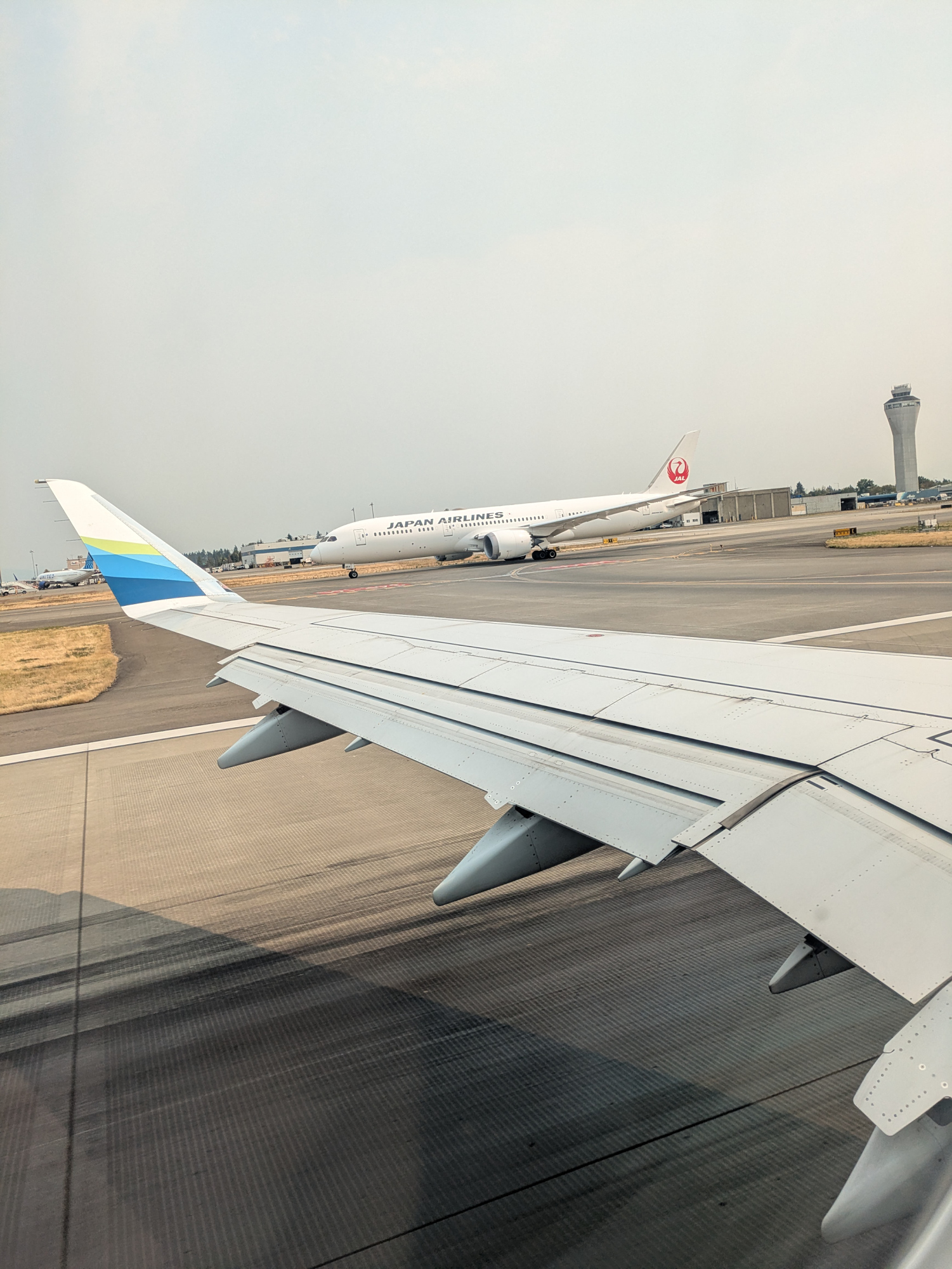
View on the Main Terminal
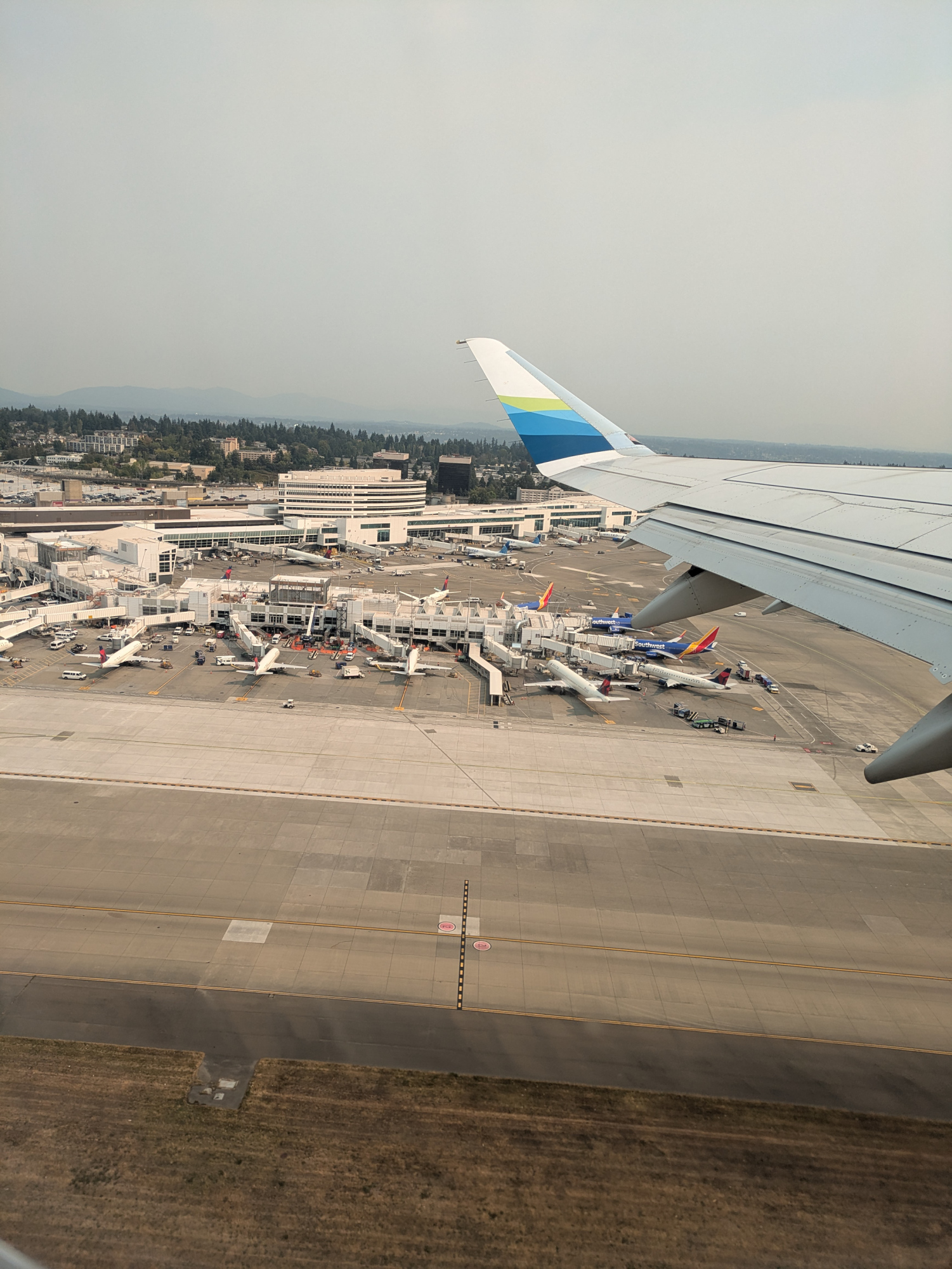
The South Terminal. The empty spot is S11, where the Frankfurt flight LH491 departs.
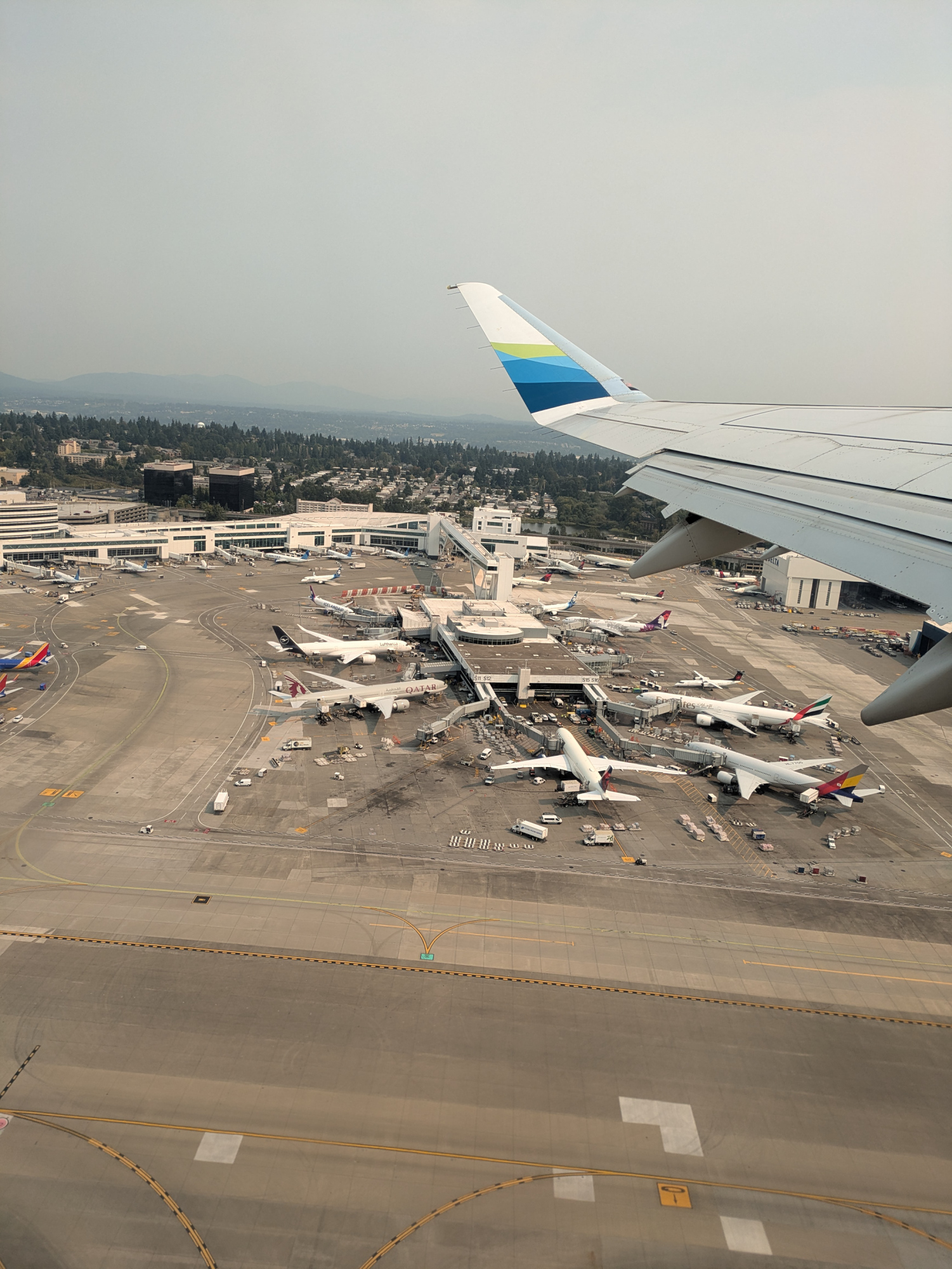
This view shows Steel Lake at the bottom and Lake Dolloff at the top, separated by Interstate 5
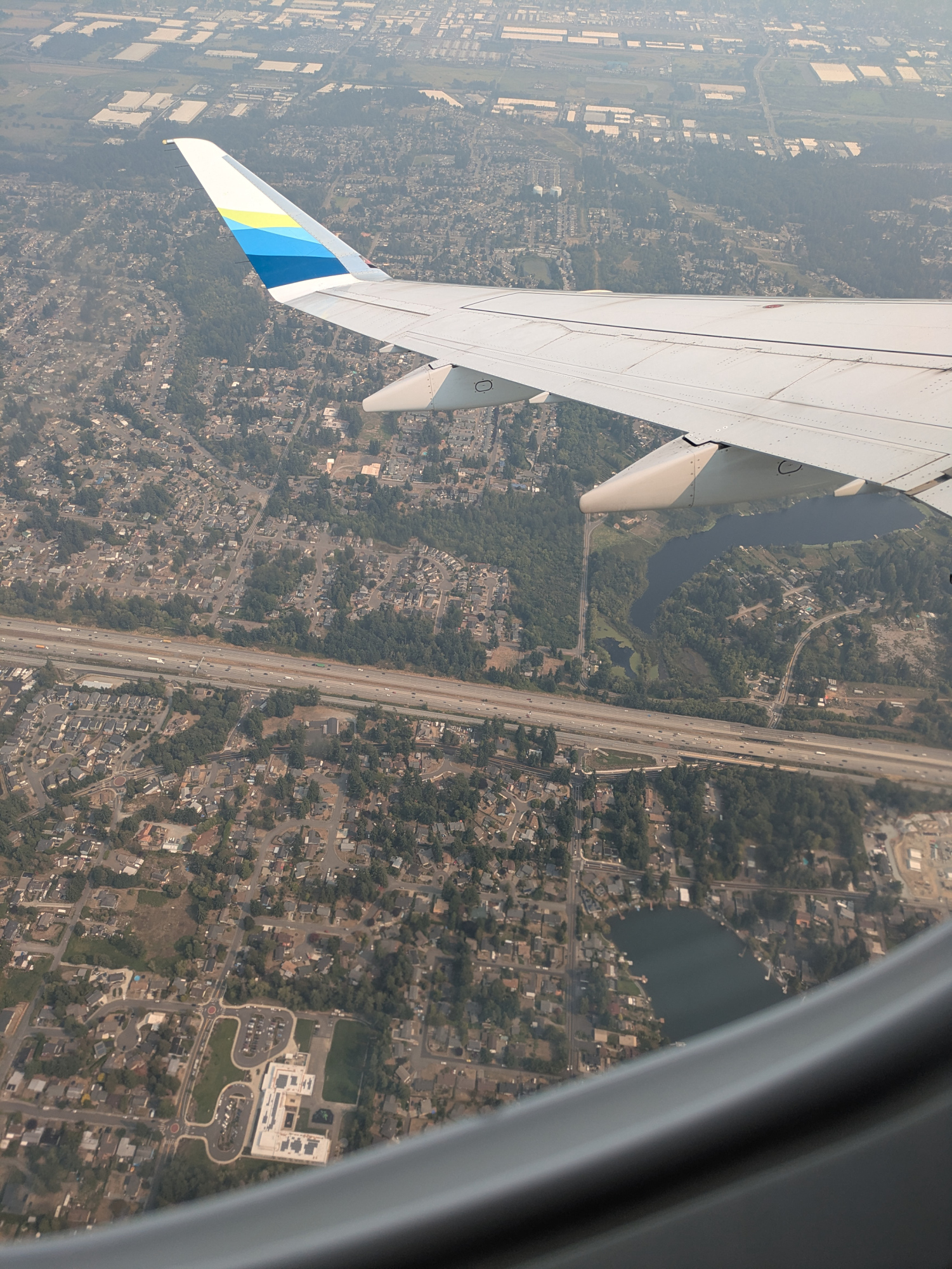
Landing in Spokane
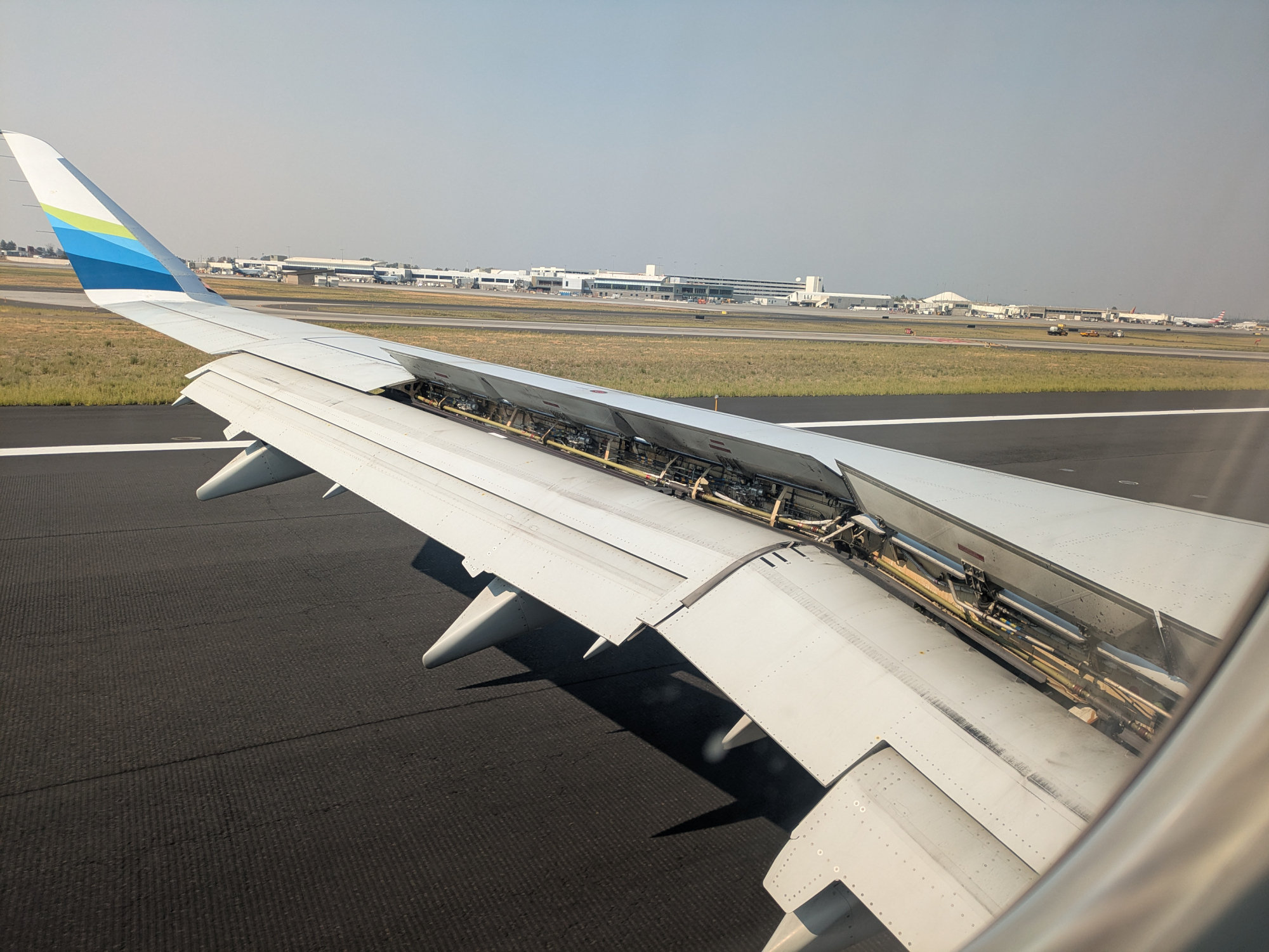
GEG - SEA
Taxi out from Spokane



That view is half of Spokane Airport
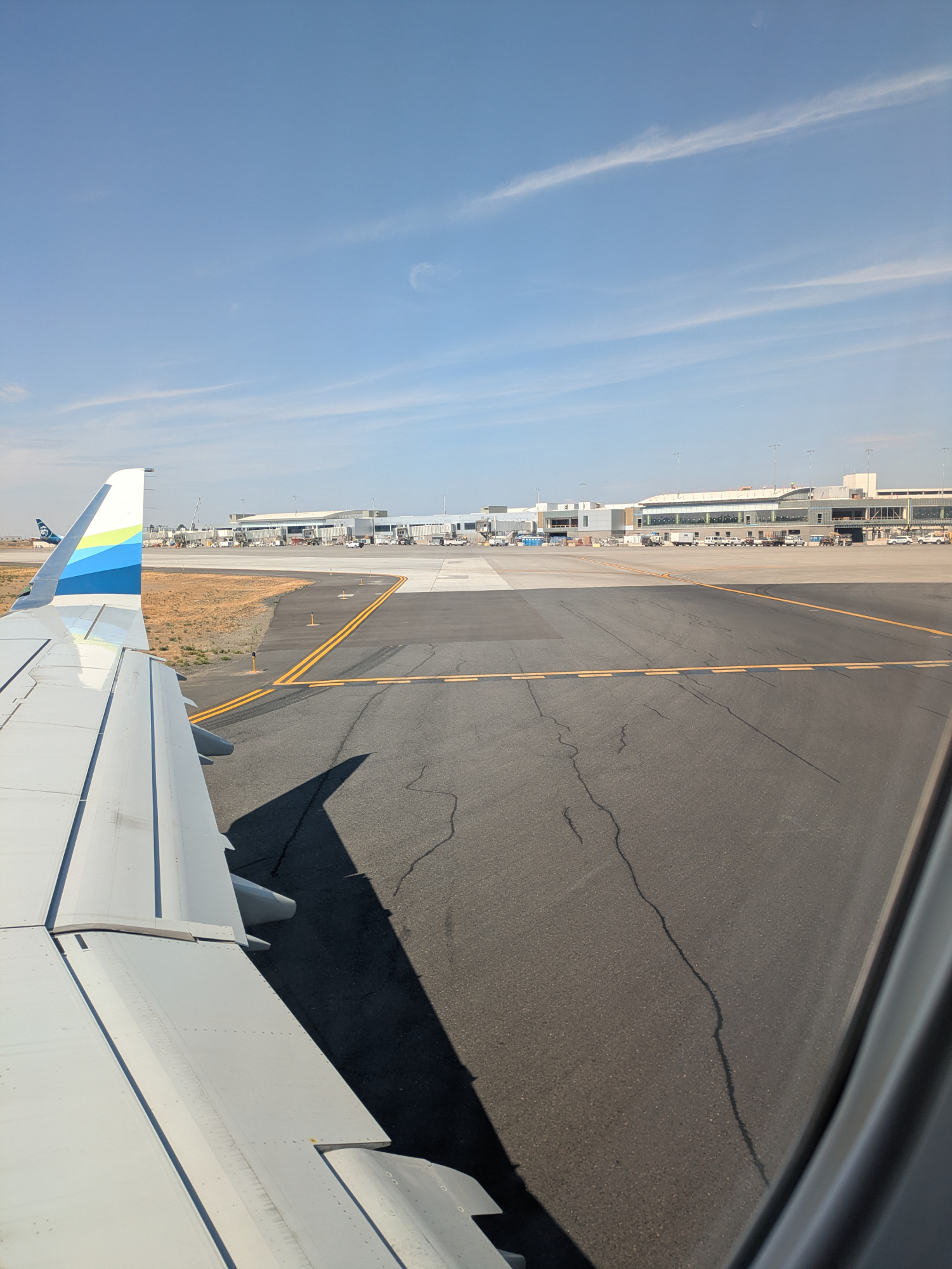
Spokane Taxi Out – In Motion
Takeoff
GEG National Forest (Unofficial)
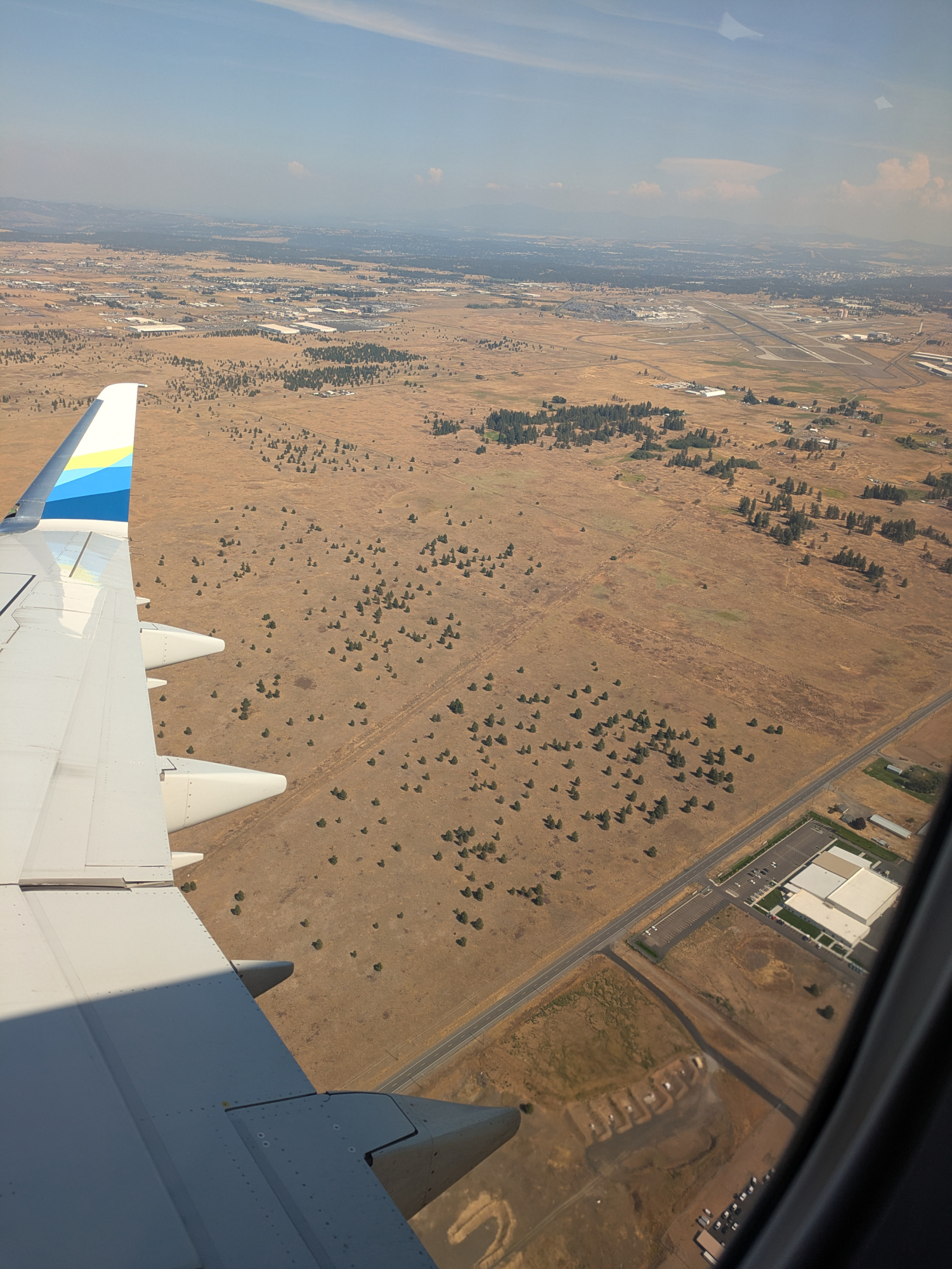
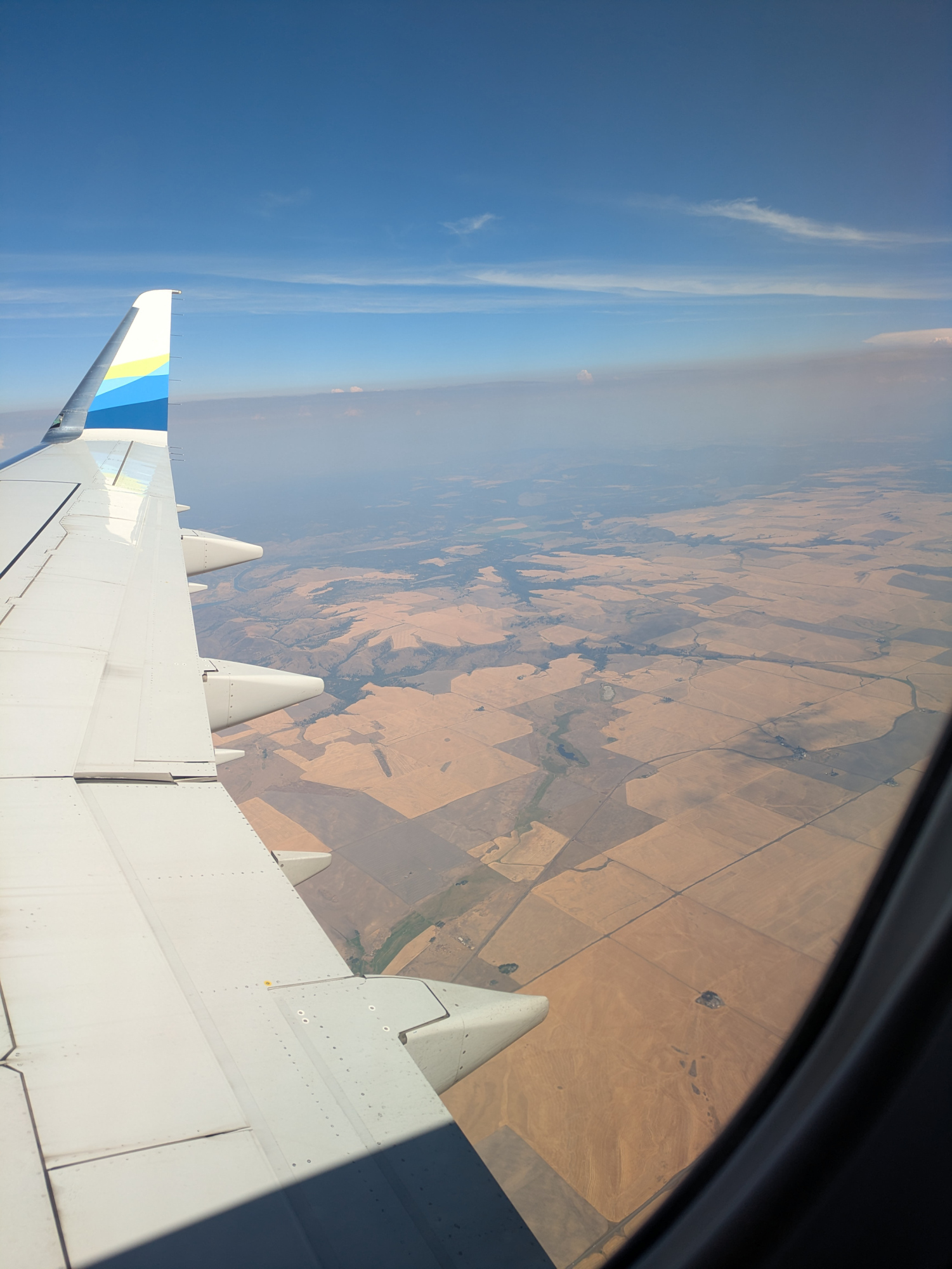
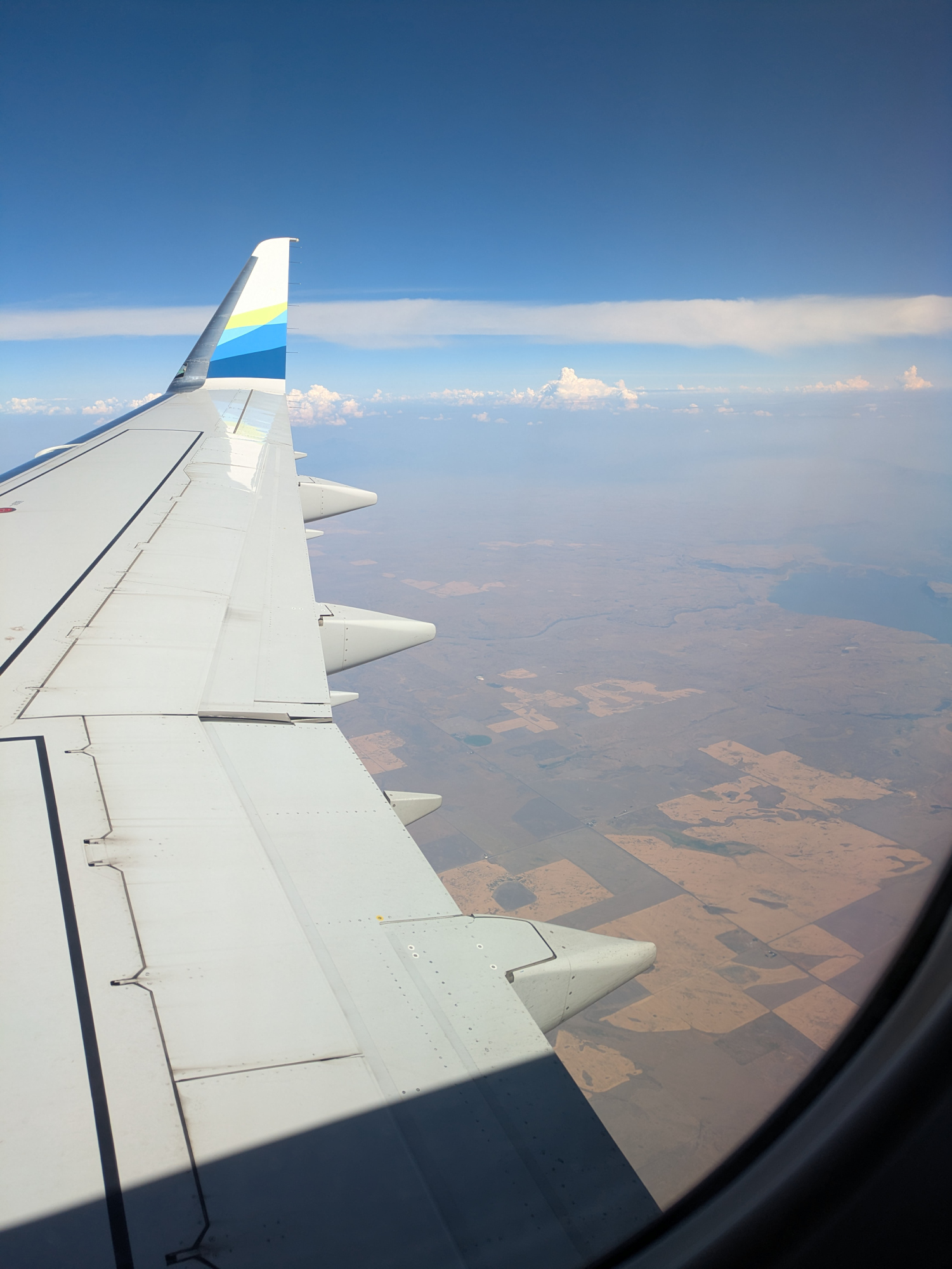
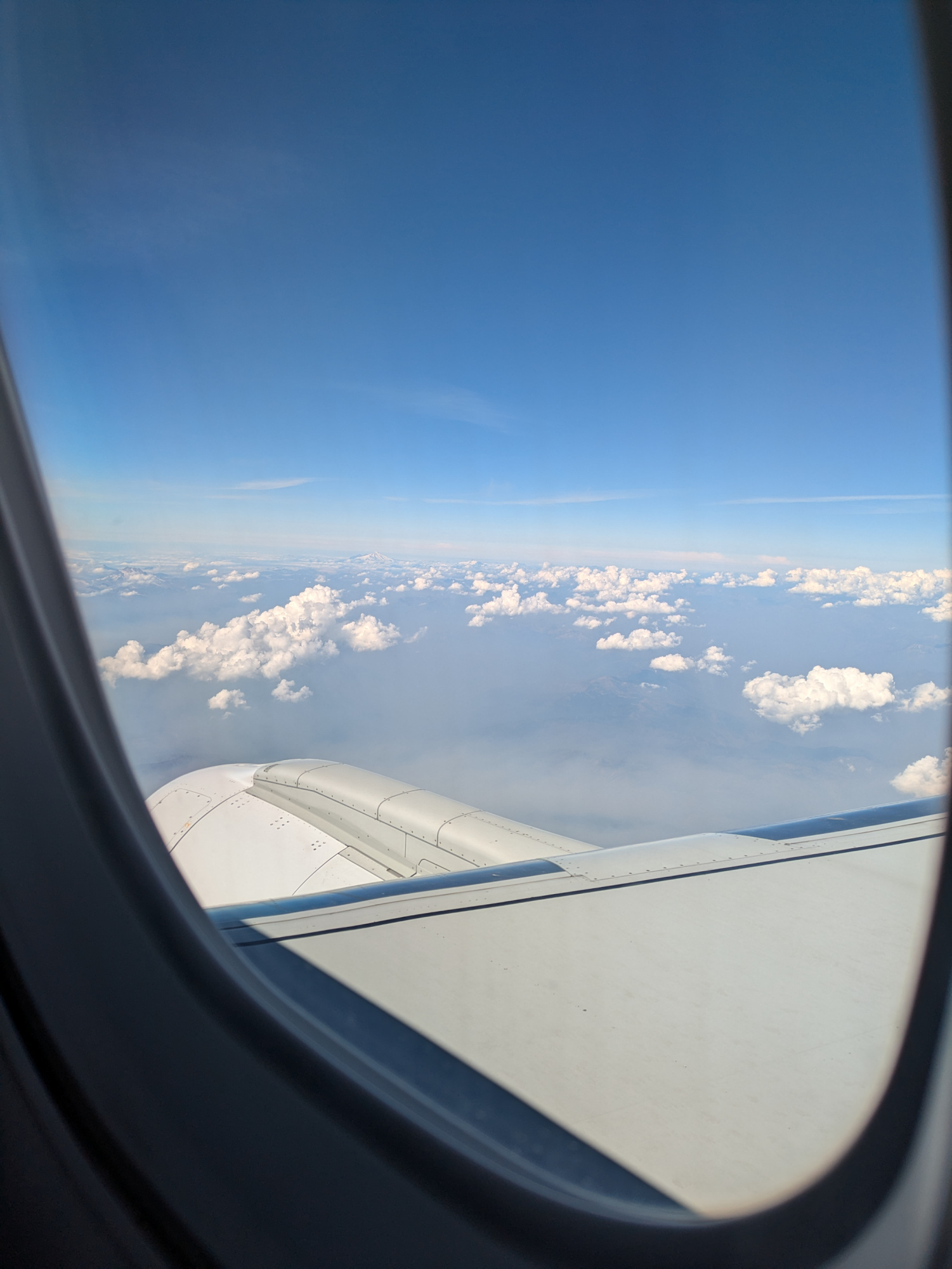
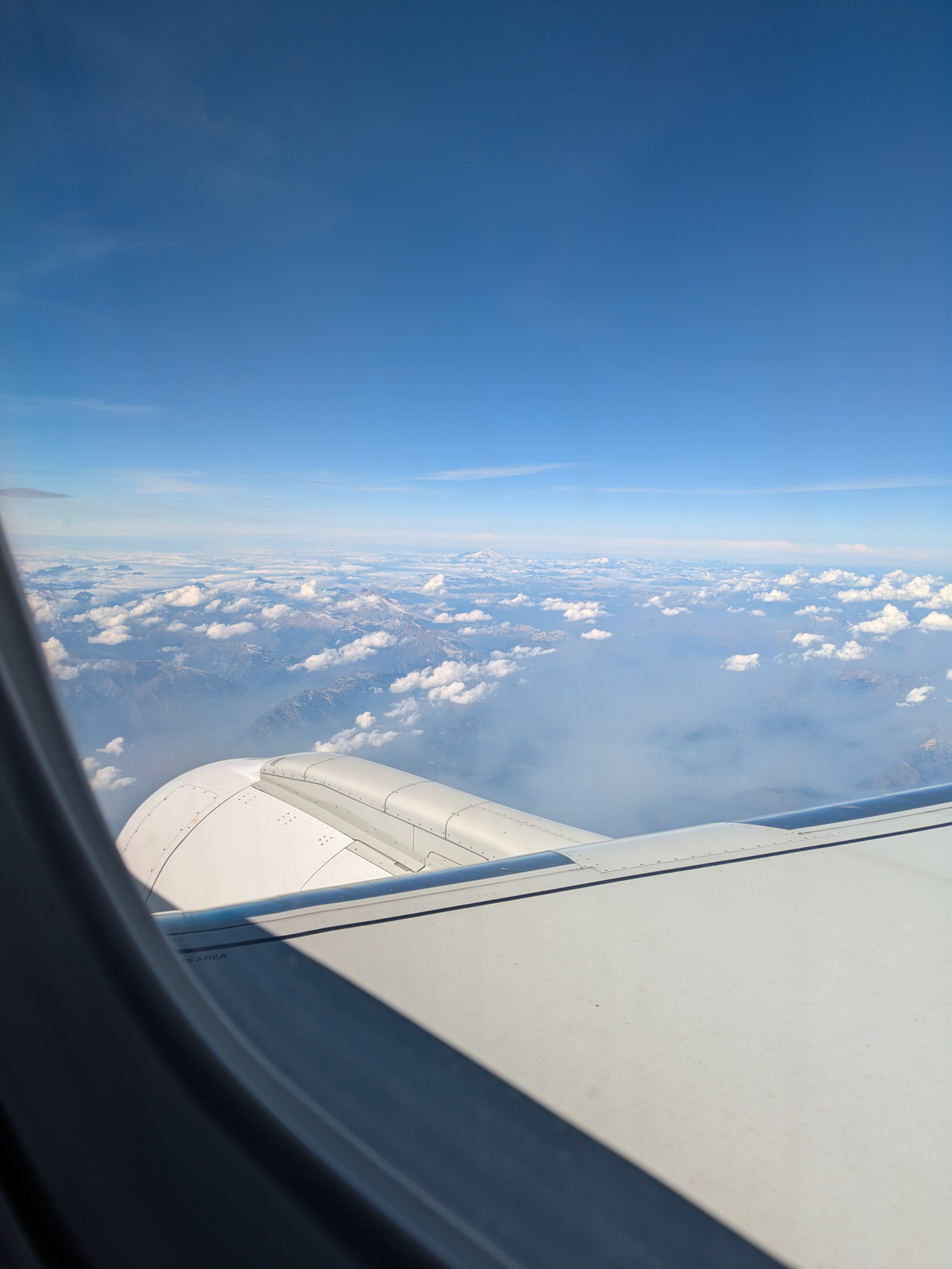


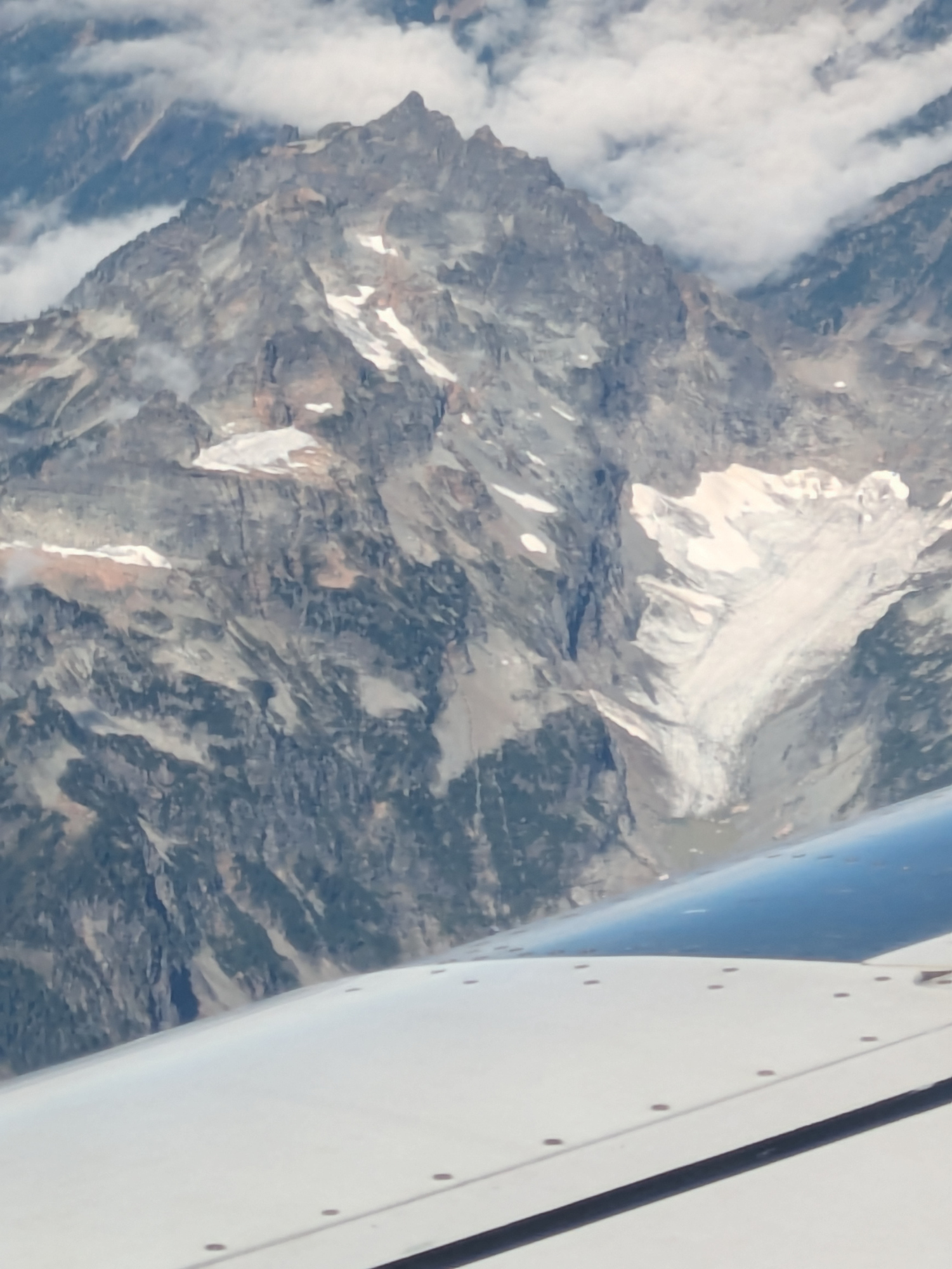
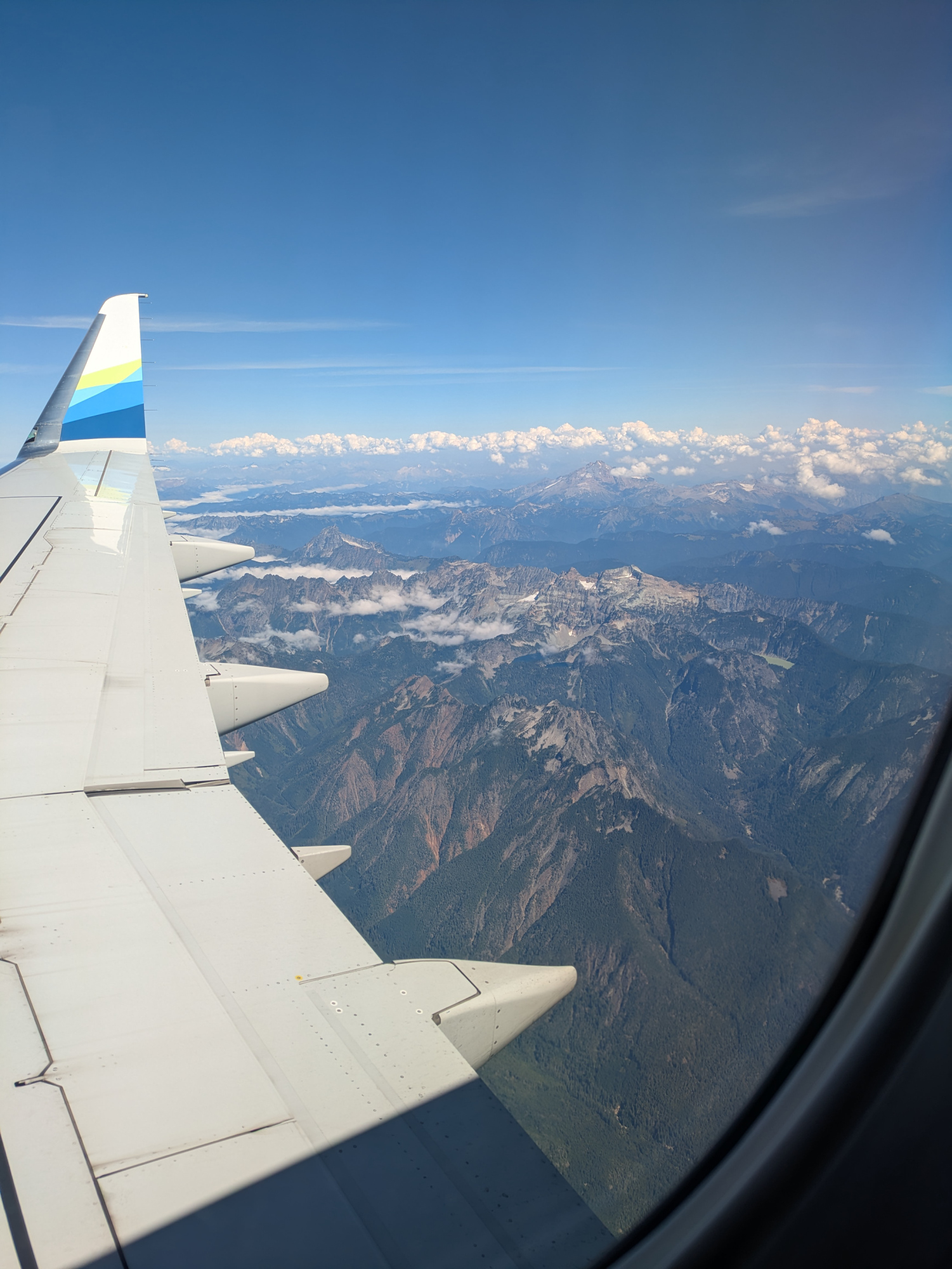
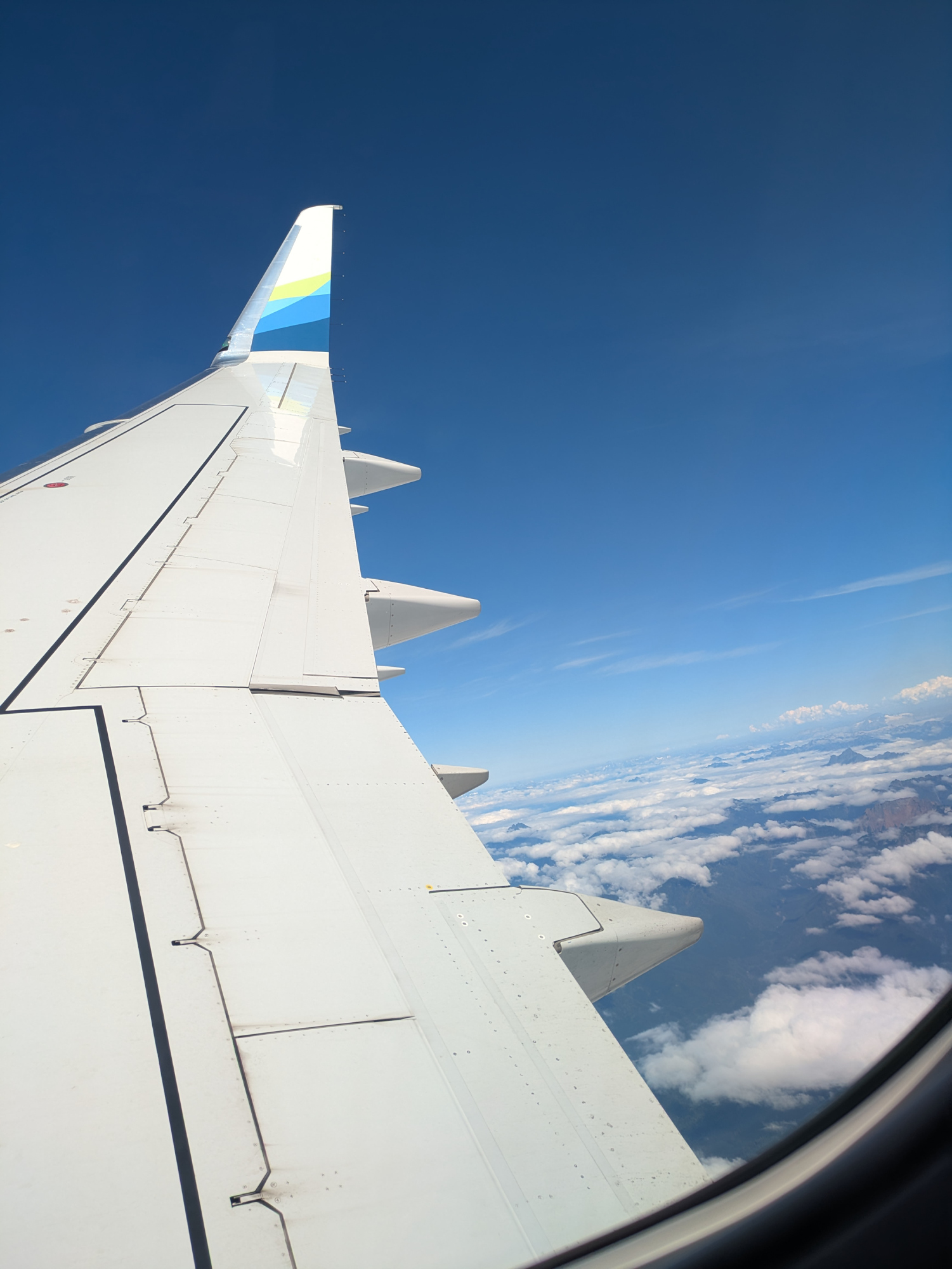
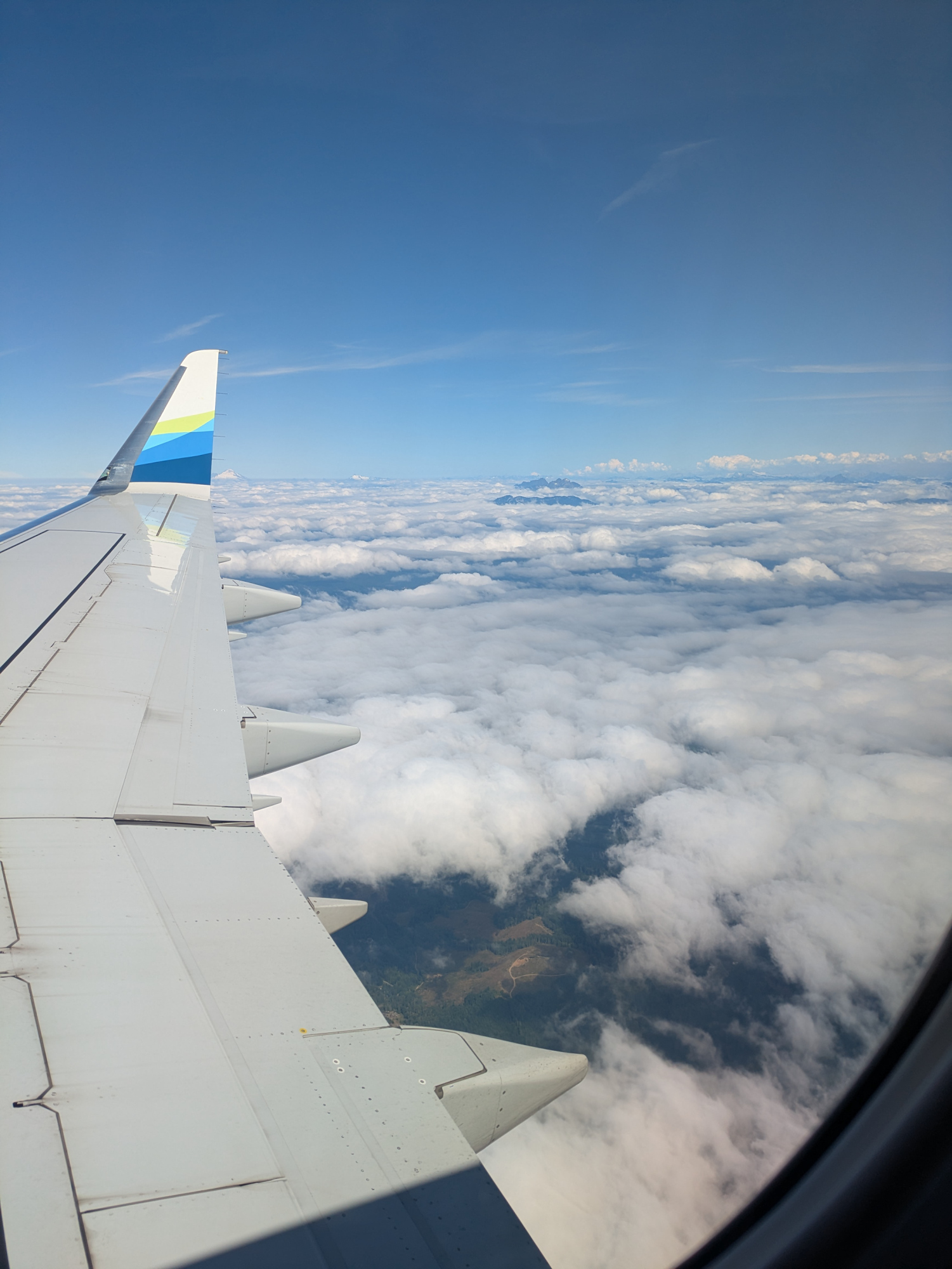
The Space Needle

Landing in Seattle

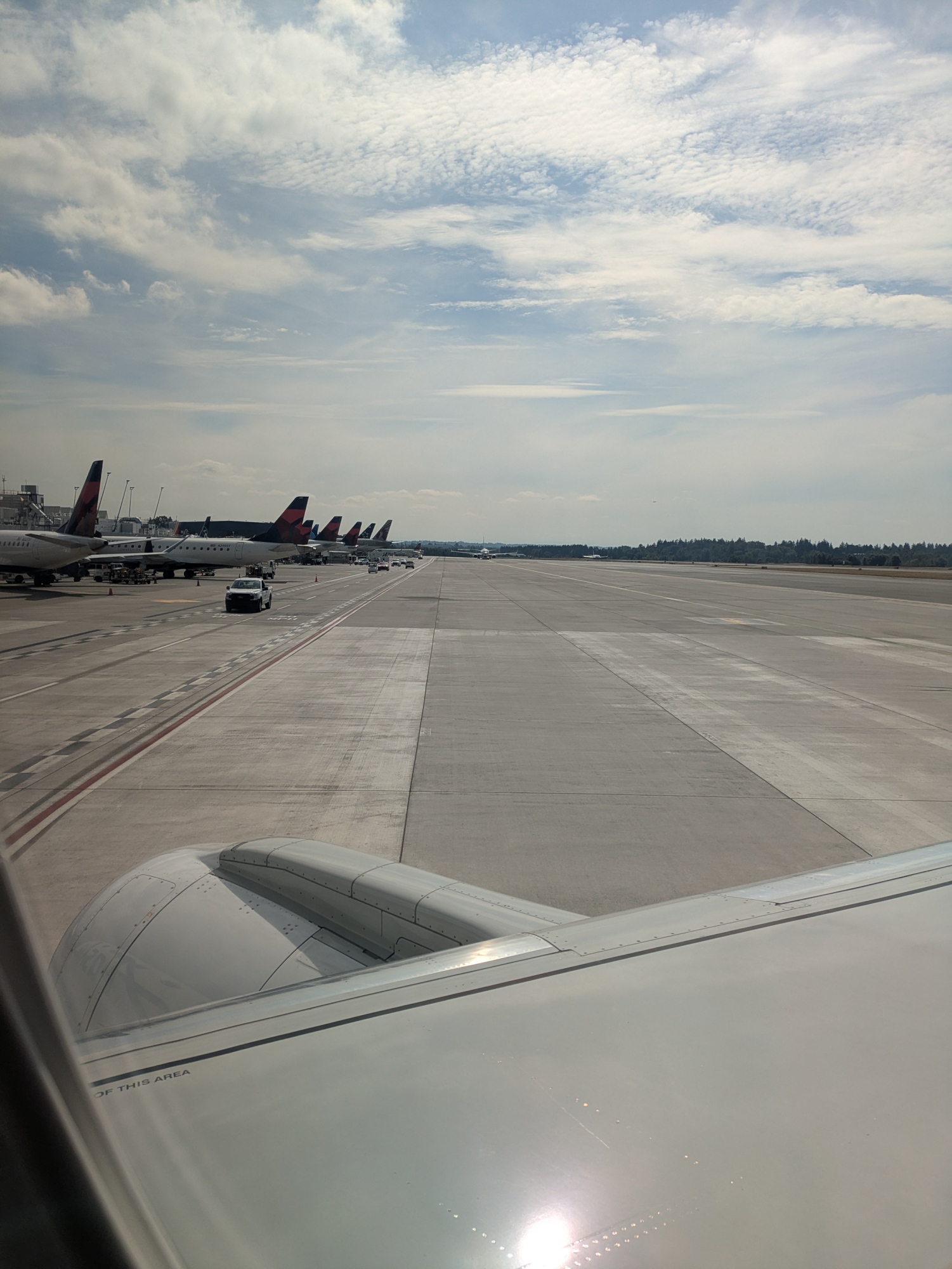
Arrived at Gate Q2
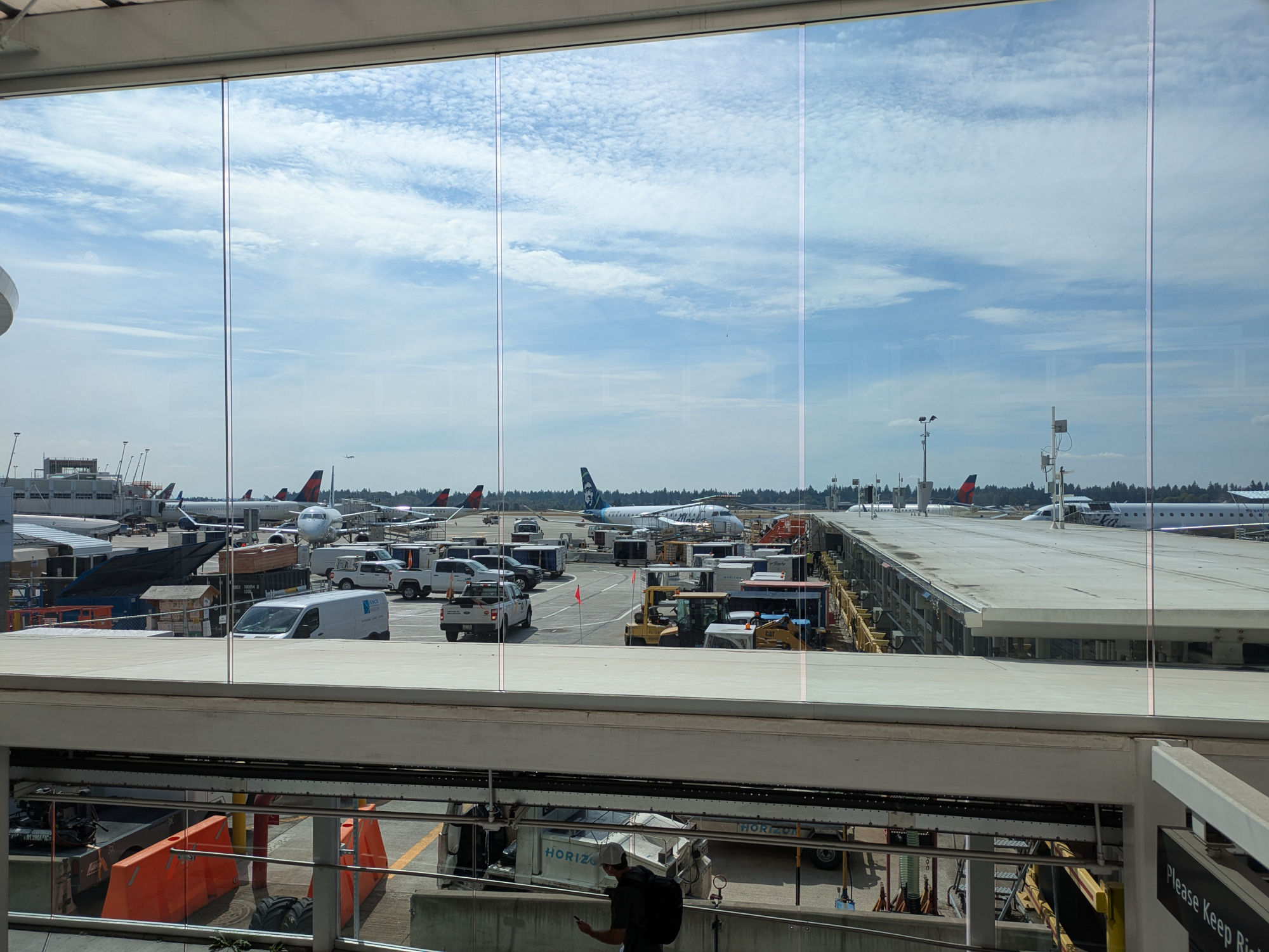
-
Spokane International Airport's code GEG comes from its former name, Geiger Field, named after Major Harold Geiger. The code was retained when the site transitioned from a WWII military base to a commercial airport.
Wikipedia – Spokane International Airport ↩
-
-
Photographing Fireworks at a Distance 🎆
Fireworks Photos with a Long Zoom Lens: A Better Approach
Photographing fireworks from a distance of several kilometers can be tricky if your tripod setup is not absolutely stable, especially when using long exposures. I used a Nikon Z30 with the 50–250mm lens on a tripod, aiming to capture sharp bursts with surrounding buildings in the frame:

📸 Fireworks Photography: The Classic Recipe
Here is the standard setup for capturing fireworks:
- ISO: 100 (or as low as your camera allows)
- Aperture: f/8 to f/11 for sharpness and depth
- Shutter Speed: 2 to 10 seconds (use BULB mode and adjust based on burst duration)
- Focus: Manual, set to infinity or pre-focus on a distant object
- White Balance: Daylight or Auto
- Stabilization: Use a tripod and disable VR
- Remote Trigger: Optional, but helps avoid camera shake
This setup works great when you're close to the action and using a standard or wide-angle lens. But what if the fireworks are several kilometers away, you're shooting with a long zoom, and your tripod setup isn't exactly rock-solid? That's where things get interesting.
The Problem
While the fireworks were crisp, the buildings appeared blurry. The cause is vibrations from people walking nearby and the long shutter time (several seconds). Even if you take pictures without a tripod and have VR enabled, the system could not stabilize the image over such long exposures.
And tripods, especially on unstable surfaces, don't eliminate this issue. Using shorter shutter speeds helps reduce motion blur, but it introduces a new challenge: you often miss the perfect moment. Sometimes, all it takes is a fraction of a second to turn a potential masterpiece into a chaotic blur of light.13,0s f/8 ISO 100/21° f=200mm/300mm
The Solution: Slow-Shutter Video
Switching to video mode at 1/25s shutter speed solved the problem:
- Sliding through the video to capture the perfect frame as a new level of content creation
- No motion blur in buildings or other static elements
- Fireworks still looked vibrant and dynamic
- Overall stabilization was noticeably better
You lose the long light trails typical of multi-second exposures, but the bursts remain visually striking.
Instead of hoping to hit the perfect moment with a single shot, just extract stills from the exact frame you want. For example, using VLC (Shift+S or Menu → Video → Take Snapshot) makes it easy to grab high-quality frames directly from your footage.Video resolution these days is 3840×2160. Not far off from stills at 5568×3712 with my camera. That's more than enough to crop, zoom, and relive every spark in crisp detail: gone are the days of grainy VGA 640×480 clips from early digital cameras. The kind that looked halfway decent on a VHS-era TV. This isn't VHS anymore. This is IMAX, and you are in the front row.

Seite 1 von 8
Ältere Beiträge →
